Monroe County Timeline
All Events in Topic "Limestone"
| First use of cut Indiana limestone 1826 |
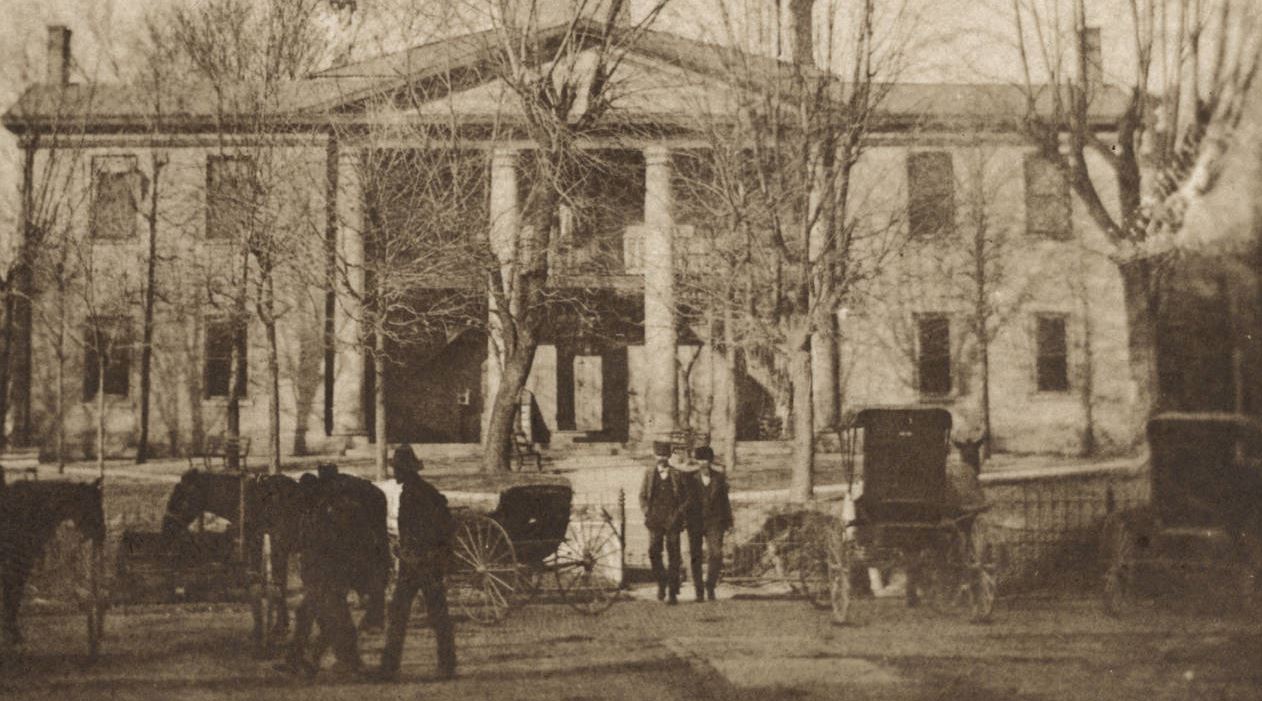 The first recorded use of cut Indiana limestone is used for the foundation and sill of the second Monroe County Courthouse. The first recorded use of cut Indiana limestone is used for the foundation and sill of the second Monroe County Courthouse.
Source: Shewmaker, Sherman N. Quarry Quest. A Field Trip Guide to the Indiana Limestone District, Monroe and Lawrence Counties, Indiana, 1991. more...
|
| First commercial quarry opens 1827 |
First commercial limestone quarry is opened by Richard Gilbert, 3/4 mi south of Stinesville, Monroe County.
Source: "Limestone Foundation For Stinesville," Joseph A Batchelor, An Economic History of the Indiana Oolitic Limestone Industry (Indiana University Bloomington school of business, 1944), July 6, 1955, 8.
|
| Daniel Stoute House built 1828 |
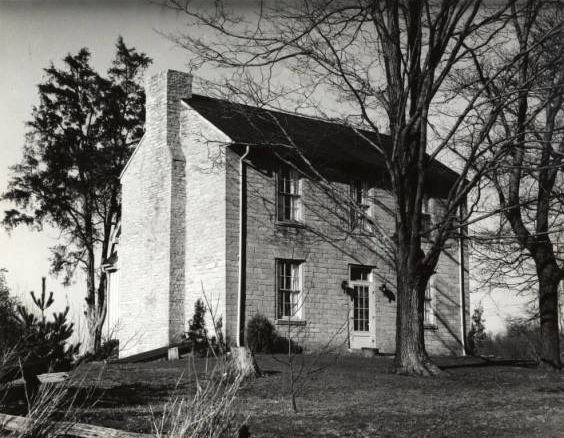 First house built of Indiana Limestone and oldest standing house in Monroe County. (Daniel Stoute house 3655 N. Maple Grove Rd). First house built of Indiana Limestone and oldest standing house in Monroe County. (Daniel Stoute house 3655 N. Maple Grove Rd).
|
| Gang saw comes to stone district 1855 |
First steam-driven gang saw installed in Indiana stone district at Watts-Biddle quarry.
Source: Shewmaker, Sherman N. Quarry Quest. A Field Trip Guide to the Indiana Limestone District, Monroe and Lawrence Counties, Indiana, 1991.
|
| Stinesville Platted 1855, Apr 5 |
Stinesville is laid out and mapped after the growth of the limestone business in this Bean Blossom Township location. The town is laid out from land owned by Eusebius Stine.
Source: Monroe County, IN, Monroe County Deed Book 'P' (1854), 537.
|
| Williams Quarry Opens 1860 |
James S. Williams quarry opens, 3/4 mile west of Stinesville.
Source: Batchelor, Joseph A. An Economic History of the Indiana Oolitic Limestone Industry. Bloomington: school of business, Indiana University, 1944.
|
| Quarry operations suspended 1861 |
Erving and Glover quarries suspend operations with the outbreak of the Civil War.
Source: Batchelor, Joseph A. An Economic History of the Indiana Oolitic Limestone Industry. Bloomington: school of business, Indiana University, 1944.
|
| First Ellettsville quarry opens 1862 |
First Ellettsville limestone quarry is opened by John Matthews.
Source: Shewmaker, Sherman N. Quarry Quest. A Field Trip Guide to the Indiana Limestone District, Monroe and Lawrence Counties, Indiana, 1991.
|
| Channeling Machine is invented 1863 |
George J. Wardwell of Rutland, Vermont, invents the channeling machine, which will help limestone industry.
Source: Batchelor, Joseph A. An Economic History of the Indiana Oolitic Limestone Industry. Bloomington: school of business, Indiana University, 1944.
|
| Kostenbader Quarry opens 1864 |
John Kostenbader quarry opens, 1 1/2 miles north of Ellettsville.
Source: Batchelor, Joseph A. An Economic History of the Indiana Oolitic Limestone Industry. Bloomington: school of business, Indiana University, 1944.
|
| Matthews establishes mill 1864 |
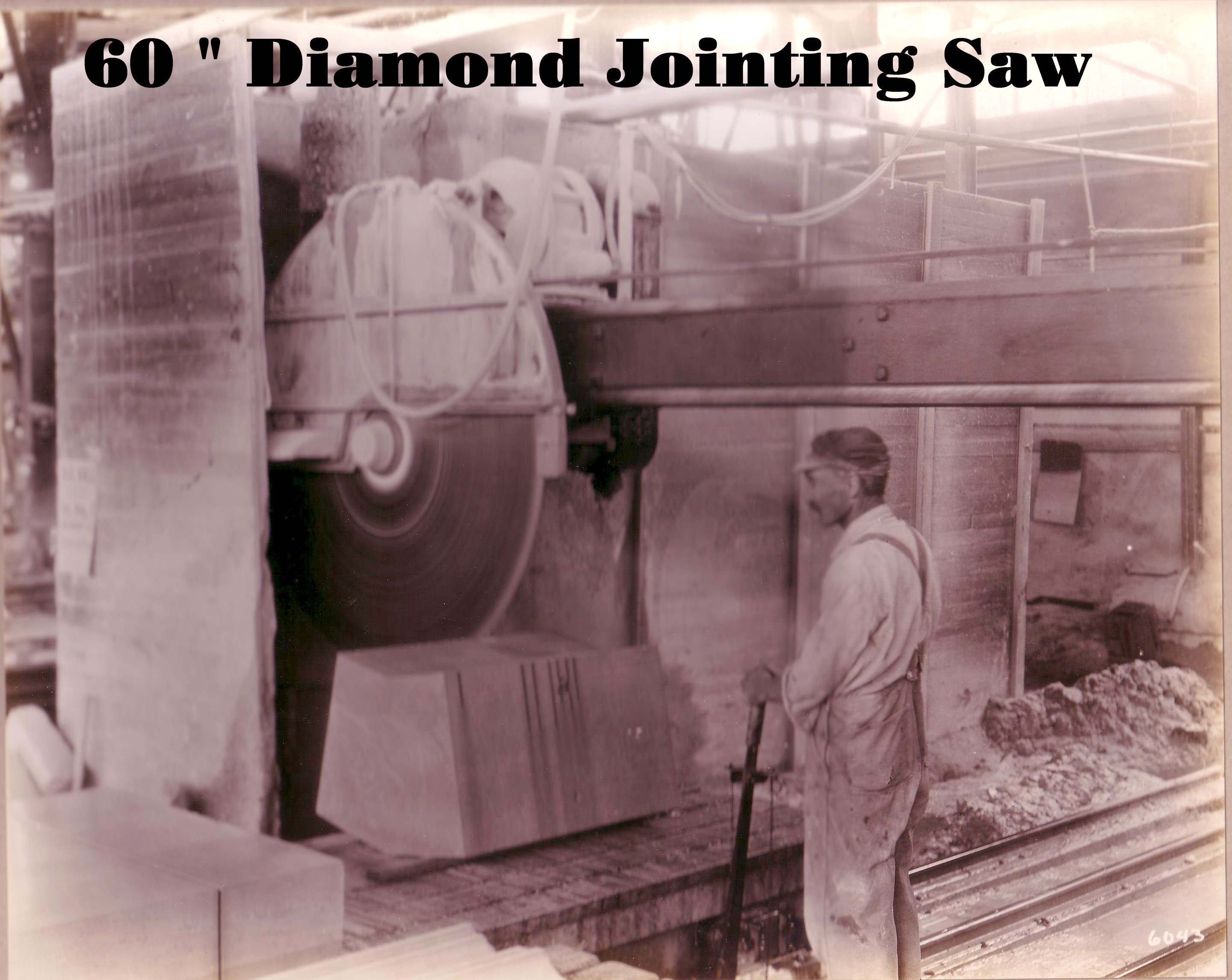 John Matthews, the father of Indiana limestone, establishes four gang saw mill. John Matthews, the father of Indiana limestone, establishes four gang saw mill.
Source: Batchelor, Joseph A. An Economic History of the Indiana Oolitic Limestone Industry. Bloomington: school of business, Indiana University, 1944.
|
| Hall and Harrison establish mill 1866 |
Nathan Hall and Davis Harrison establish six gang saw mill.
Source: Batchelor, Joseph A. An Economic History of the Indiana Oolitic Limestone Industry. Bloomington: school of business, Indiana University, 1944.
|
| Needham Quarry Opens 1866 |
James Needham quarry opens in Salem.
Source: Batchelor, Joseph A. An Economic History of the Indiana Oolitic Limestone Industry. Bloomington: school of business, Indiana University, 1944.
|
| Perry Brothers Establish Mill 1866 |
Perry Brothers establish a four gang saw mill.
Source: Batchelor, Joseph A. An Economic History of the Indiana Oolitic Limestone Industry. Bloomington: school of business, Indiana University, 1944.
|
| Perry Brothers Quarry Opens 1866 |
Perry Brothers quarry opens, 1/2 mile north of Ellettsville.
Source: Batchelor, Joseph A. An Economic History of the Indiana Oolitic Limestone Industry. Bloomington: school of business, Indiana University, 1944.
|
| Watts-Biddle Quarry closes 1868 |
Watts-Biddle quarry closes, partially due to its location being 4 miles from the nearest railroad.
Source: Batchelor, Joseph A. An Economic History of the Indiana Oolitic Limestone Industry. Bloomington: school of business, Indiana University, 1944.
|
| Schweitzer Quarry Opens 1869 |
Bernhardt Schweitzer quarry opens, 1/2 mile southwest of Spencer.
Source: Batchelor, Joseph A. An Economic History of the Indiana Oolitic Limestone Industry. Bloomington: school of business, Indiana University, 1944.
|
| Sharp and Hight Quarry Opens 1869 |
Sharp and Hight quarry opens in Ellettsville.
Source: Batchelor, Joseph A. An Economic History of the Indiana Oolitic Limestone Industry. Bloomington: school of business, Indiana University, 1944.
|
| County quarries growing 1870 |
Number of quarries is now at 16.
Source: Shewmaker, Sherman N. Quarry Quest. A Field Trip Guide to the Indiana Limestone District, Monroe and Lawrence Counties, Indiana, 1991.
|
| Limestone Proves Resilient 1871 |
Limestone buildings show limited damage after the Great Chicago fire, increasing national demand for Indiana Limestone.
Source: Batchelor, Joseph A. An Economic History of the Indiana Oolitic Limestone Industry. Bloomington: school of business, Indiana University, 1944.
|
| Stone Sent for Indianapolis Courthouse 1872 |
Matthews and Perry Brothers quarries furnish stone for the courthouse in Indianapolis.
Source: Batchelor, Joseph A. An Economic History of the Indiana Oolitic Limestone Industry. Bloomington: school of business, Indiana University, 1944.
|
| Traveling Crane comes to Stone District 1872 |
First traveling crane - a steam powered one - used to move stone around in the mill operations is introduced by Perry Brothers of Ellettsville.
Source: Shewmaker, Sherman N. Quarry Quest. A Field Trip Guide to the Indiana Limestone District, Monroe and Lawrence Counties, Indiana, 1991.
|
| Rock Castle Town Established 1872, Jul 20 |
Henry and Gilbert Perry, Fred Mathews, W.H. Wicks, and others establish the town of Rock Castle in Section 29 of Bloomington township. Rock Castle is situated near quarries in the area.
Source: History of Lawrence and Monroe Counties, Indiana: Their People, Industries, and Institutions (Indianapolis: B. F. Bowen & Co., 1914), 436.
|
| Channeling machine is introduced 1875 |
First steam driven channeling machine (used to drive chisels and separate blocks of rock) introduced into the area by John Matthews.
Source: Shewmaker, Sherman N. Quarry Quest. A Field Trip Guide to the Indiana Limestone District, Monroe and Lawrence Counties, Indiana, 1991.
|
| Illinois State Capitol Built 1876 |
Illinois State Capitol built in Springfield, Illinois by the Matthews Brothers Stone Company.
Source: The Ellettsville Journal. Ellettsville, Ind.: Cooperative Pub. Co, 1939.; Section II, Mathews Brothers Centennial Edition, Wednesday, 26 December, 1962.
|
| Limestone declared Superior for Building 1876 |
Pronouncement by Inspector T.H. Oakshott from the Office of the Superintendent of Public Buildings of the United States that Indiana Limestone is superior to any other in the county for building purposes.
Source: Shewmaker, Sherman N. Quarry Quest. A Field Trip Guide to the Indiana Limestone District, Monroe and Lawrence Counties, Indiana, 1991.
|
| Stone Provided for Illinois Courthouse 1876 |
Nathan Hall furnishes eighty carloads of stone for a new courthouse in Rockford, Illinois by the Matthews Brothers Stone Company.
Source: Batchelor, Joseph A. An Economic History of the Indiana Oolitic Limestone Industry. Bloomington: school of business, Indiana University, 1944.
|
| Matthews purchases land 1876, Jul 17 |
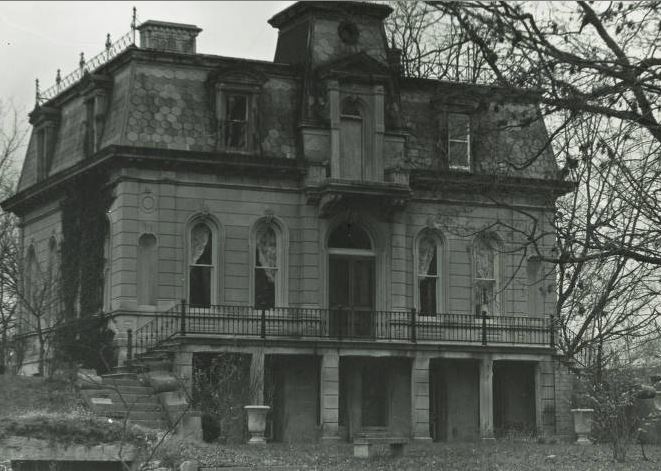 John Matthews purchases land in Ellettsville with plans to build a home. The Matthews Mansion, which is designed in Beaux Arts style, is completed around 1879-1880. John Matthews purchases land in Ellettsville with plans to build a home. The Matthews Mansion, which is designed in Beaux Arts style, is completed around 1879-1880.
|
| Major contracts awarded 1877 |
Competition opens for stone contracts for the buildings of Chicago City Hall and the Indiana Statehouse, which results in major use of Indiana limestone for their construction. This year also marks the first year which production statistics are available, with 339,153 cu ft produced in the Indiana Stone District.
Source: Sherman N Shewmaker, Quarry Quest: A Field Trip Guide to the Indiana Limestone District, Monroe and Lawrence Counties (1991), 37.
|
| Production Statistics Become Available 1877 |
First year for which production statistics are available: 339,153 cu ft. produced in Indiana Stone District.
Source: Shewmaker, Sherman N. Quarry Quest. A Field Trip Guide to the Indiana Limestone District, Monroe and Lawrence Counties, Indiana, 1991.
|
| 1 Dollar a Day Wages 1879 |
Stone cutters' wages are $1.00 per day.
Source: McDonald, Bill. A Short History of Indiana Limestone. Bedford, Ind.: Lawrence County Tourism Commission, 1995.
|
| Company forecloses 1879 |
The White River Stone and Lime Company suffers foreclosure.
Source: Batchelor, Joseph A. An Economic History of the Indiana Oolitic Limestone Industry. Bloomington: school of business, Indiana University, 1944.
|
| Limestone shipped to NY for residence 1879, Apr 12 |
First train carload of 26 of Indiana Limestone shipped to New York City over a year to build the Fifth Avenue residence of William K. Vanderbilt designed by Architect Richard M. Hunt.
Source: Shewmaker, Sherman N. Quarry Quest. A Field Trip Guide to the Indiana Limestone District, Monroe and Lawrence Counties, Indiana, 1991.
|
| Productivity Statistics 1881 |
Employment / productivity figures: 604 men worked 1,978,704 hours to produce 718,575 cu ft of stone. Etc.
Source: Shewmaker, Sherman N. Quarry Quest. A Field Trip Guide to the Indiana Limestone District, Monroe and Lawrence Counties, Indiana, 1991.
|
| Stone Headquarters is established 1881, Mar 2 |
Bloomington now has Oolitic stone headquarters in the building just east of Chas. H. McPheeters' grocery store.
Source: Republican Progress Newspaper
|
| Waldron Block renovated 1881, May 18 |
Excavation work begins on the renovation of the Waldron block, located east of the Post Office north of the courthouse square. The stone work for the front of the new building is being done by Perry Brothers.
Source: Bloomington Progress, May 18, 1881, 3. map
|
| Stone district hires immigrants 1882 |
First foreign born men brought in to work in stone district: 20 Italians by David Reed.
Source: Shewmaker, Sherman N. Quarry Quest. A Field Trip Guide to the Indiana Limestone District, Monroe and Lawrence Counties, Indiana, 1991.
|
| Stone wall planned 1882, May |
The newspaper reports that William Baker will build a stone wall in front of the property recently purchased by him on West 6th Street.
Source: Bloomington Progress, May 3, 1882, 3.
|
| New Channeling Machine Built 1883 |
W.A. Saunders builds the first direct-action channeling machine with a gang of chisels attached to an upright piston.
Source: Batchelor, Joseph A. An Economic History of the Indiana Oolitic Limestone Industry. Bloomington: school of business, Indiana University, 1944.
|
| Stone wall planned 1884, Mar |
The City Council orders for construction a walk "from the end of the 4th street to the cemetery, and also a stone wall to be erected around the yard."
Source: Bloomington Telephone, March 29, 1884, 1.
|
| Fire burns at Matthews Brothers 1884, Apr 29 |
The Daily News out of Chicago posts from Bloomington Special reports that a fire broke out in a frame dwelling house near the Ellettsville stone works. Adjoining the burning building was a small frame structure that held dynamite for blasting purposes. The fire reached this building, causing a terrific explosion, killing William Williams and wounding 13 others. Among those severely wounded is Peter Matthews, one of the owners.
Source: "The Fire Record," Dallas Weekly Herald, May 1, 1884, 1.
|
| 21 Quarries 1885 |
Number of quarries in the Indiana stone district is 21.
Source: Shewmaker, Sherman N. Quarry Quest. A Field Trip Guide to the Indiana Limestone District, Monroe and Lawrence Counties, Indiana, 1991.
|
| Stone mill productivity increases 1885 |
Automatic feeding of sand and water to gang saws in milling operations increased productivity significantly.
Source: Shewmaker, Sherman N. Quarry Quest. A Field Trip Guide to the Indiana Limestone District, Monroe and Lawrence Counties, Indiana, 1991.
|
| New fence built 1885, Jul |
David Hughes completes "a very handsome and substantial stone fence in front of his residence" and this site joins the new house on West 6th Street that was built by James Gilmore.
Source: Bloomington Progress, July 15, 1885, 3.
|
| First Major Stone Finishing Job 1886 |
First major job for which cut stone is shipped from the Indiana Stone belt ready to set in the wall - Cotton Exchange Building in New Orleans (I.e. the start of stone finishing in the belt).
Source: Shewmaker, Sherman N. Quarry Quest. A Field Trip Guide to the Indiana Limestone District, Monroe and Lawrence Counties, Indiana, 1991.
|
| Campbell adds stone wall 1886, Jan |
William Campbell continues to improved his property, announcing plans to build a stone wall in front of his yard when weather permits.
Source: Bloomington Telephone, January 29, 1886, 5.
|
| Mill Strike 1887, Sep 1 |
Yard and mill hands strike, demanding that William Tarbot, a company employee and scab from previous strike of sawyers, be discharged. Tarbot is paid $40 to give up his job, and work resumes five.
Source: Lawrence Mail 1 September, 1887 in Bell, Ron, 'Early History of Indiana Limestone' pp. 55-6.
|
| Stone fence built 1887, Sep |
In order to protect the fencing around the yard, stone posts "have been set along the south side of the stone fence around the Covenanter's cemetery." There are plans for another wall will be built around the south-west corner of the lot.
Source: Bloomington Telephone, September 6, 1887, 4.
|
| New stone quarry organized 1887, Nov 8 |
A new stone quarry is organized, to be known as the Monon Lime Stone Co., of Stinesville, where the property is located. The officers are G.W. Terry, president, W.A. Terry, treasurer, and George Bollenbacher, secretary. Quarry directors include the officers and G.T. Terry and T.E. Phillips. The capital stock is $100,000 with shares at $50 each.
Source: Bloomington Telephone, November 15, 1887, 1.
|
| Union organized 1887, Dec 5 |
The Journeyman Stone Cutters Association (current national union) organized by representatives in 20 cities at Chicago.
Source: Batchelor, Joseph A. An Economic History of the Indiana Oolitic Limestone Industry. Bloomington: school of business, Indiana University, 1944.
|
| Perry & Williams prospect in Indiana 1888, Apr 20 |
Major Perry and William Matthews prospect for a quarry location in Indiana.
Source: Bell, Ron. Early History of Indiana Limestone. Bloomington, IN: AuthorHouse, 2008.
|
| 3 Dollar a Day Wages 1889 |
Stone cutters' wages are $3.00 per day.
Source: McDonald, Bill. A Short History of Indiana Limestone. Bedford, Ind.: Lawrence County Tourism Commission, 1995.
|
| Big Creak Stone Company Created 1889 |
The Chicago and Stinesville Company buys the remaining properties of the Watts-Biddle firm, renaming it the Big Creek Stone Company.
Source: Bell, Ron. Early History of Indiana Limestone. Bloomington, IN: AuthorHouse, 2008.
|
| Cemetery builds fence 1889, Apr |
Four miles from Bloomington rests the neighborhood of Mount Gilead, where the subscribers to the cemetery there have determined to build "a substantial stone fence about the cemetery, at a cost of $160. The money was all subscribed by the friends and neighbors who are interested in the burying ground."
Source: Bloomington Telephone, April 16, 1889, 1. map
|
| Stinesville profiled 1890 |
A directory lists Stinesville with a population of 500 and points to Gosport as the place to bank. The Stinesville Business District: F. Ashbaugh (Shoemaker), Theodore Buskirk (Confectioner) C. C. Dunn & G. B. Easton operate general stores. James T. Greer is the agent for the railroad, express, and telegraph. Hoadley & Sons (flour mills and marble works), Indiana Oolitic Limestone Co., Matilda McHenry (Milliner), David Miller (Grocer), Stinesville & Bloomington Stone Co., Terre Haute Stone Works Co., and Charles Walter (Druggist). |
| New Channeling Machines Introduced 1890 |
Ingersoll and Sullivan varieties of direct-action channeling machines introduced to Indiana stone fields.
Source: Batchelor, Joseph A. An Economic History of the Indiana Oolitic Limestone Industry. Bloomington: school of business, Indiana University, 1944.
|
| Bull Wheel Introduced 1890 |
The Bull Wheel, for turning derrick masts, makes its first appearance in stone quarries.
Source: McDonald, Bill. A Short History of Indiana Limestone. Bedford, Ind.: Lawrence County Tourism Commission, 1995.
|
| 40 Quarries 1890 |
Number of quarries in the Indiana stone district is 40.
Source: Shewmaker, Sherman N. Quarry Quest. A Field Trip Guide to the Indiana Limestone District, Monroe and Lawrence Counties, Indiana, 1991.
|
| Quarry to be opened 1890, Nov 26 |
A stone quarry is opened on the site of the Dolan factory, on the railroad west of Showers' factory. W.W. Wicks, John Waldron, Showers Bros. and John C. Dolan are partners.
Source: Republican Progress Newspaper
|
| Central Oolitic Stone Company buys lot 1890, Dec |
J. C. Dolan sells his Bloomington property (Lot 41) to the Central Oolitic Stone Company for $98,000.
Source: Bloomington Progress, December 24, 1890, 3.
|
| Central Oolitic Stone Company formed 1890, Dec 3 |
The Central Oolitic Stone Quarry Co. is organized with a stock of $100,000.
Source: Republican Progress Newspaper
|
| Weather allows more quarry work 1890, Dec 10 |
News reports favorable conditions for the stone quarry business.
Source: Republican Progress Newspaper
|
| Central Oolitic buys new lot 1890, Dec 24 |
Central Oolitic Stone Co. purchases an adjoining lot from J.C. Nolan for $98,000.
Source: Republican Progress Newspaper
|
| Henley organizes stone company 1891 |
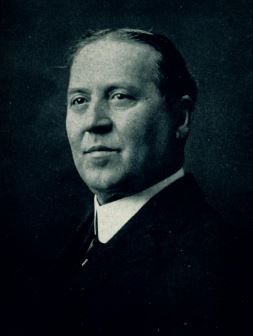 Joseph E. Henley organizes the first company for stone quarrying in Hunter Valley. The business operates under the name Hunter Stone Company. Joseph E. Henley organizes the first company for stone quarrying in Hunter Valley. The business operates under the name Hunter Stone Company.
Source: History of Lawrence and Monroe Counties, Indiana: Their People, Industries, and Institutions (Indianapolis: B. F. Bowen & Co., 1914), 696. more...
|
| Steam Power Replaces Traditional Methods 1891 |
Steam-powered derricks had almost completely replaced hand and horse-powered ones: of 96 in use, 6 were hand-powered, and 7 were horse-powered.
Source: Shewmaker, Sherman N. Quarry Quest. A Field Trip Guide to the Indiana Limestone District, Monroe and Lawrence Counties, Indiana, 1991.
|
| Geologist praises Indiana Stone 1891 |
Geologist S.S. Gorby writes: so widespread is the fame of the Indiana stone that the danger of overproduction from the quarries is not an appreciable element in the consideration of the future production.
Source: McDonald, Bill. A Short History of Indiana Limestone. Bedford, Ind.: Lawrence County Tourism Commission, 1995.
|
| Empire Stone Company Formed 1891 |
Empire Stone Company is formed.
Source: Lilly Library Manuscript Collections
|
| Stone business has growing legal issues 1891, Jan 21 |
Newspaper reports that the stone business will revive the law business. A number of suits, growing out of the management of the quarries, are filed in Monroe Circuit Court.
Source: Republican Progress Newspaper
|
| Fuller elected Quarry Superintendent 1891, Jan 29 |
Enoch Fuller is elected superintendent of the new Central Oolitic quarry by the board of directors.
Source: Republican Progress Newspaper
|
| Limestone company tensions ease 1891, Mar 18 |
Lawsuit is reviewed of Fuller, Adams et al vs. David Reed, president of the Oolitic Stone Company of Indiana, the injunction suit of the Monroe County Oolitic Stone Company vs. the Oolitic St.
Source: Republican Progress Newspaper
|
| Central Stone Co. begins work 1891, Apr 8 |
The Central Stone Company begins work.
Source: Republican Progress Newspaper
|
| Central Oolitic to add brickyard 1891, Apr 22 |
Newspaper reports that the stockholders of the Central Oolitic Stone Co. decide to add a brickyard to their plant.
Source: Republican Progress Newspaper
|
| Quarry Owners National Association formed 1891, Jul 29 |
Quarry Owners National Association formed in Cleveland, Ohio, including fifteen Indiana companies.
Source: Batchelor, Joseph A. An Economic History of the Indiana Oolitic Limestone Industry. Bloomington: school of business, Indiana University, 1944.
|
| Stipp builds fence 1891, Aug |
John Stipp, who lives near West Pike, plans to have a stone fence constructed on his farm. It will be 60 rods or 330 yards long.
Source: Bloomington Progress, August 26, 1891, 3.
|
| Monadnock Building Designed 1892 |
Chicago architects Burnham and Root design the Monadnock Building (Chicago). At eighteen stories high, it is America's last major example of thick-walled construction with masonry bearing walls in commercial building.
Source: McDonald, Bill. A Short History of Indiana Limestone. Bedford, Ind.: Lawrence County Tourism Commission, 1995.
|
| Limestone Platted in Perry township 1892, Jul 14 |
Limestone (later renamed Sanders) is laid out by Newell and Carinne Sanders in Section 34 of Perry township.
Source: History of Lawrence and Monroe Counties, Indiana: Their People, Industries, and Institutions (Indianapolis: B. F. Bowen & Co., 1914), 436.
|
| Brothers begin construction on twin homes 1893 |
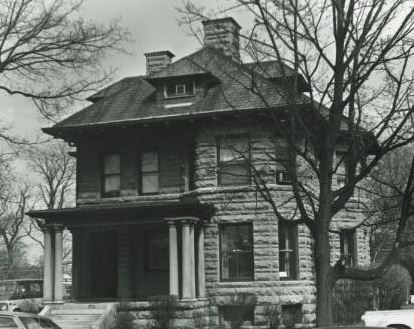 Brothers William and Benjamin Adams hire the architectural firm of Holabird and Roche to design near identical houses of limestone at 431 and 433 S. College Ave., across from Seminary Square. The homes share a driveway, a coach house, and a gas plant. The cost of each house is $13,000 and construction is completed by August 1894. Brothers William and Benjamin Adams hire the architectural firm of Holabird and Roche to design near identical houses of limestone at 431 and 433 S. College Ave., across from Seminary Square. The homes share a driveway, a coach house, and a gas plant. The cost of each house is $13,000 and construction is completed by August 1894.
|
| First Electric Generator 1893 |
First electric generator installed to provide electrical power for quarrying and milling operations.
Source: Shewmaker, Sherman N. Quarry Quest. A Field Trip Guide to the Indiana Limestone District, Monroe and Lawrence Counties, Indiana, 1991.
|
| PM&B Company incorporated 1893, Feb 15 |
Perry, Matthews, and Buskirk (P.M. & B.) Company incorporated. William N. Matthews, president and general manager.
Source: Bell, Ron. Early History of Indiana Limestone. Bloomington, IN: AuthorHouse, 2008.
|
| Channelersville Established in Bloomington Township 1893, Feb 25 |
J. H. Louden, William P. Rogers, and H. Henley lay out a town near a quarry in Section 29 of Bloomington Township.
Source: History of Lawrence and Monroe Counties, Indiana: Their People, Industries, and Institutions (Indianapolis: B. F. Bowen & Co., 1914), 435.
|
| Stone wall torn down 1894, Apr |
The stone wall in front of the old Dodds residence on South College Avenue is removed. The stone wall, believed to be a half a century old, was an old landmark for students of Indiana University.
Source: Bloomington Progress, April 11, 1894, 4.
|
| Kirkwood Manor built 1895 |
The limestone building of Kirkwood Manor, 322 East Kirkwood Avenue, is led under the direction of Bloomington architect John Lincoln Nichols.
Source: Bill Coulter, "J. L. Nichols," State Historic Architectural and Archaeological Research Database (SHAARD), February 2, 2015, 1. map
|
| Hunter Stone Co. sold 1895 |
Joseph E. Henley sells the Hunter Stone Company to Consolidated Stone Company for $125,000.
Source: History of Lawrence and Monroe Counties, Indiana: Their People, Industries, and Institutions (Indianapolis: B. F. Bowen & Co., 1914), 696.
|
| Waldron Batman House built 1895 |
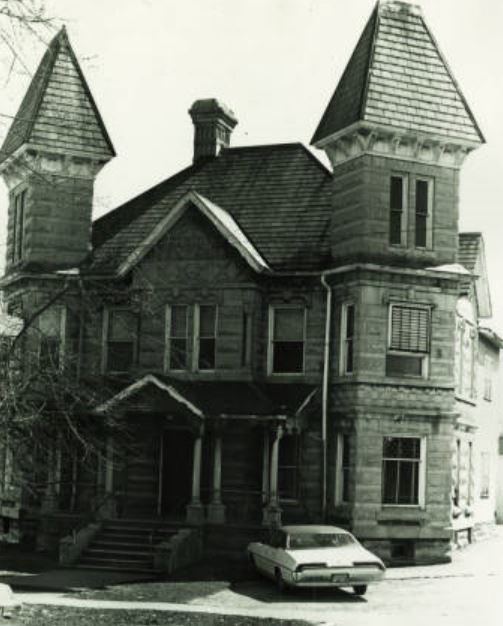 Designed as a wedding gift for the union of the Waldron and Batman Families, the limestone residence at 304 W. Kirkwood Ave. is built. Designed as a wedding gift for the union of the Waldron and Batman Families, the limestone residence at 304 W. Kirkwood Ave. is built.
Source: City of Bloomington Interim Report: Indiana Historic Sites and Structures Inventory (Bloomington: City of Bloomington, 2004), 28. more...
|
| Technology Boosts Productivity 1895 |
Effects of technology on worker production begin registering powerful effect--up nearly a factor of 4 from .363 cubic feet of quarried stone per man hour in 1881 to 1.31 for every hour by 1895. Total employment in stone industry triples.
Source: McDonald, Bill. A Short History of Indiana Limestone. Bedford, Ind.: Lawrence County Tourism Commission, 1995.
|
| 48 Quarries 1895 |
Number of quarries in the Indiana stone district is 48.
Source: Shewmaker, Sherman N. Quarry Quest. A Field Trip Guide to the Indiana Limestone District, Monroe and Lawrence Counties, Indiana, 1991.
|
| 1722 Workers 1895 |
Indiana stone industry employs 1,722 workers.
Source: McDonald, Bill. A Short History of Indiana Limestone. Bedford, Ind.: Lawrence County Tourism Commission, 1995.
|
| Oolite Club founded 1895, Jan 21 |
The Oolite Club is founded and incorporated. The club is established for mutual improvement of members, social contacts, and advancements of business and commercial interests of the city particularly the limestone industry.
Source: Herbet H. Skirvin, "Oolite Club forerunner of the Elks," Herald Times, January 15, 1983.
|
| Indiana Oolitic Stone Association Established 1895, Mar |
The Indiana Oolitic Stone Association is established.
Source: Batchelor, Joseph A. An Economic History of the Indiana Oolitic Limestone Industry. Bloomington: school of business, Indiana University, 1944.
|
| JL Nichols, Architect opens business 1895, Aug |
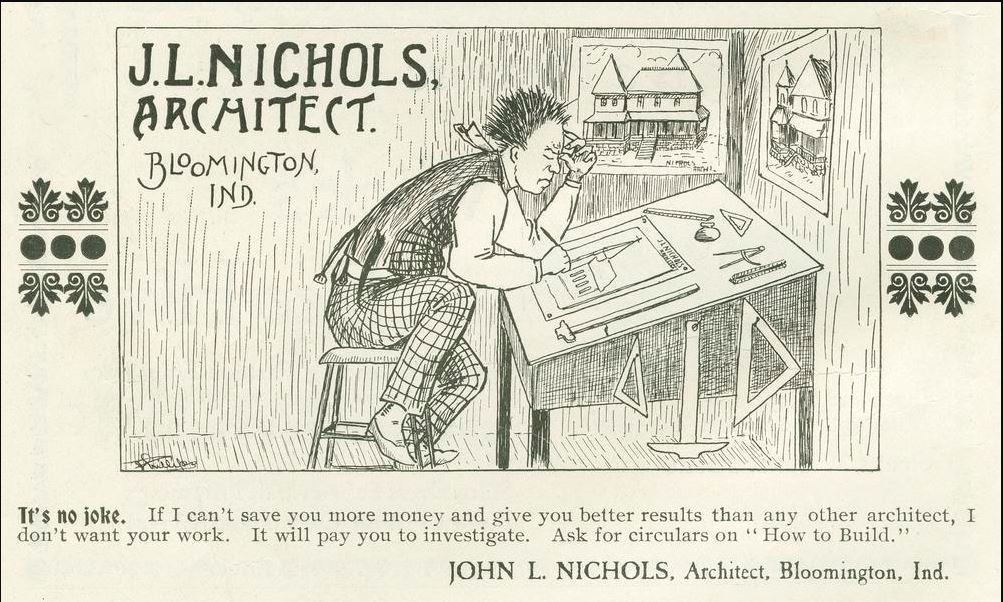 John Lincoln Nichols, born in Bloomington in 1858, returns to Bloomington in August of 1895, after ten years of working as an architect in the western United States. He announces that he is going into business as J. L. Nichols, Architect. John Lincoln Nichols, born in Bloomington in 1858, returns to Bloomington in August of 1895, after ten years of working as an architect in the western United States. He announces that he is going into business as J. L. Nichols, Architect.
Source: Bill Coulter, "J. L. Nichols," State Historic Architectural and Archaeological Research Database (SHAARD), February 2, 2015, 1. more...
|
| Shift to Stone Fabrication Begins 1896 |
Turning point in the transition of the Indiana limestone industry from primarily a quarry industry to one in which fabrication of the stone is becoming significant.
Source: Shewmaker, Sherman N. Quarry Quest. A Field Trip Guide to the Indiana Limestone District, Monroe and Lawrence Counties, Indiana, 1991.
|
| Strike over wages 1896, Aug 7 |
Cut in wages led to strike; all men refused to work except four. Managers trying to replace them.
Source: Bedford Mail 7 August, 1896
|
| 80 employees strike 1896, Sep 4 |
80 employees out on strike over 10% cut in wages.
Source: Bedford Mail 4 September, 1896
|
| General Hunter Dies 1896, Oct 25 |
General Morton Craig Hunter dies at his home. His end comes one week after being stricken with paralysis while attending services at the Presbyterian Church on Walnut Street. He was a national war hero, a member of the GAR, a congressman, Mason, a loyal friend to Indiana University, and a highly respected citizen and limestone businessman.
Source: "Death of Gen. M.C. Hunter," Bloomington Republican Progress, October 27, 1896, 4.
|
| PM&B Quarry Sold 1897 |
Perry, Matthews, and Buskirk quarry sold to Walsh interests of Bedford Stone Company.
Source: Bell, Ron. Early History of Indiana Limestone. Bloomington, IN: AuthorHouse, 2008.
|
| New opera house planned 1897, Jan 19 |
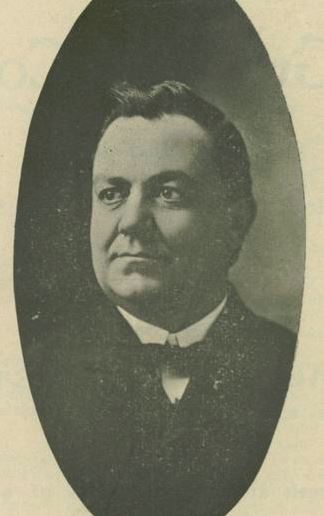 Architect John Lincoln Nichols is to design a new opera house for the city of Bloomington. The theater is supposed to cost approximately $12,000 and should be near the square on North Walnut Street. This new opera house will also be made of Monroe County stone. The eventual name will be the Harris Grand Theatre. Architect John Lincoln Nichols is to design a new opera house for the city of Bloomington. The theater is supposed to cost approximately $12,000 and should be near the square on North Walnut Street. This new opera house will also be made of Monroe County stone. The eventual name will be the Harris Grand Theatre.
Source: "New Opera House: Plans Being Drawn for a Nice Theater, Outside Parties Would Like to Make the Investment," Bloomington World, January 19, 1897, 1. more...
|
| Stone Quarrymen's Union organized 1897, Feb 12 |
Organization of the Stone Quarrymen's Union at Bloomington with 70 members and 40 applications; officers elected.
Source: Bedford Mail 12 February, 1897
|
| Quarry accident kills Gilpen 1897, May 17 |
Harry Gilpen dies in quarry accident.
Source: Rice, Claude F., and Marilyn McCoy. Monroe County, Indiana, Coroners Inquest: 1888-1973. Bloomington, IN: Monroe County Historical Society, 2001.
|
| Stinesville Stone Company sold 1897, Jun 21 |
Stinesville Stone Company is sold to I. Mueller.
Source: Batchelor, Joseph A. An Economic History of the Indiana Oolitic Limestone Industry. Bloomington: school of business, Indiana University, 1944.
|
| Ellis Island contract received 1898 |
The contract is received for construction of the administration building at New York City's Ellis Island.
Source: Shewmaker, Sherman N. Quarry Quest. A Field Trip Guide to the Indiana Limestone District, Monroe and Lawrence Counties, Indiana, 1991.
|
| Limestone productivity 1898 |
1,391 men produced 5,630,046 cubic feet of limestone.
Source: Shewmaker, Sherman N. Quarry Quest. A Field Trip Guide to the Indiana Limestone District, Monroe and Lawrence Counties, Indiana, 1991.
|
| Limestone company is founded 1898 |
Victor Oolitic Stone Company is founded in 1898. The company has supplied limestone to Yankee Stadium and the Holocaust Museum.
Source: Laura Lane, "Soft market prompts Victor Oolitic to reorganize," The Herald-TImes, May 5, 2009.
|
| Buskirk-Hill Building built 1898 |
The building of the Buskirk-Hill Building on 114 West Sixth Street (later Vance Music) is led under the direction of Bloomington architect John Lincoln Nichols, his firm called J. L. Nichols, Architect.
Source: Bill Coulter, "J. L. Nichols," State Historic Architectural and Archaeological Research Database (SHAARD), February 2, 2015, 2. map
|
| Buskirk-Hill building architect announced 1898, Mar 16 |
It is announced that architect John Lincoln Nichols is the architect in charge of the new building (later referred to as the Buskirk-Hill building) at 114 West Sixth Street. The building will be two stories of stone and cost around $5,000.
Source: Bill Coulter, "114 West Sixth Street, Bloomington, Monroe County, Indiana," State Historic Architectural and Archaeological Research Database (SHAARD), December 6, 2014, 2, 1.
|
| Buskirk-Hill general contract awarded 1898, Apr 26 |
The contract for the building of the new Buskirk-Hill building at 114 West Sixth Street is awarded to Moore & Briscoe for $5,500. According to architect John Lincoln Nichols, the building will be two stories of brick and stone (limestone facade), with plate glass windows, and tiled vestibules. It is expected to be completed by July 1st. The stone work is being done by McHenry & Eakin.
Source: Bill Coulter, "114 West Sixth Street, Bloomington, Monroe County, Indiana," State Historic Architectural and Archaeological Research Database (SHAARD), December 6, 2014, 2-3.
|
| Standard Stone Company sold 1898, Jul 23 |
Standard Stone Company sold to W.N. Matthews.
Source: Batchelor, Joseph A. An Economic History of the Indiana Oolitic Limestone Industry. Bloomington: school of business, Indiana University, 1944.
|
| Quarry Explosion kills five 1898, Sep 2 |
A dynamite explosion at a Stinesville limestone quarry kills five.
Source: Rose McIlveen, "Quarry explosion took five lives in Stinesville in 1898," Hearld-Telephone, April 9, 1988.
|
| Railroad holds meeting 1898, Sep 23 |
William Showers, along with two others, are invitees to the first annual meeting of the Indiana Stone Railroad Company, a new railroad.
Source: Telephone, September 23, 1898.
|
| Planing machine unsuccessfully opposed 1899 |
The Journeyman Stone Cutters' Association fails to prevent the introduction of the planing machine.
Source: Batchelor, Joseph A. An Economic History of the Indiana Oolitic Limestone Industry. Bloomington: school of business, Indiana University, 1944.
|
| Railway Opens 1899 |
Indiana Stone Railway opens in Monroe County.
Source: Batchelor, Joseph A. An Economic History of the Indiana Oolitic Limestone Industry. Bloomington: school of business, Indiana University, 1944.
|
| Dutton Residence built 1899 |
The limestone building of the Dutton Residence at 1115 North College Avenue is led under the direction of Bloomington architect John Lincoln Nichols, his firm called J. L. Nichols.
Source: Bill Coulter, "J. L. Nichols," State Historic Architectural and Archaeological Research Database (SHAARD), February 2, 2015, 2. map
|
| Stone kills Staggs in quarry accident 1899, Jul 21 |
John J. Staggs is killed when a stone from the car he is pushing dislodges and crushes him.
Source: Rice, Claude F., and Marilyn McCoy. Monroe County, Indiana, Coroners Inquest: 1888-1973. Bloomington, IN: Monroe County Historical Society, 2001.
|
| Planer Men's Union organized 1899, Aug |
Affiliating with the American Federation of Labor, the Planer Men's Union is organized.
Source: Bell, Ron, 'Early History of Indiana Limestone' pp. 118.
|
| First Presbyterian Church Built 1900 |
The First Presbyterian Church, established in 1819, builds at Sixth Street and Lincoln Avenue.
Source: Shewmaker, Sherman N. Quarry Quest. A Field Trip Guide to the Indiana Limestone District, Monroe and Lawrence Counties, Indiana, 1991.
|
| Labor organizers come to Indiana 1900 |
The American Federation of Labor sends organizers to the Indiana stone district to organize classes of labor other than stone cutters.
Source: Batchelor, Joseph A. An Economic History of the Indiana Oolitic Limestone Industry. Bloomington: school of business, Indiana University, 1944.
|
| Stone company owners agree on prices 1900, Jan 23 |
Stone company owners hold a meeting to organize and agree on prices.
Source: Bloomington Telephone 23 January, p 1 col 2
|
| Citizens Loan & Trust Company established 1900, Feb |
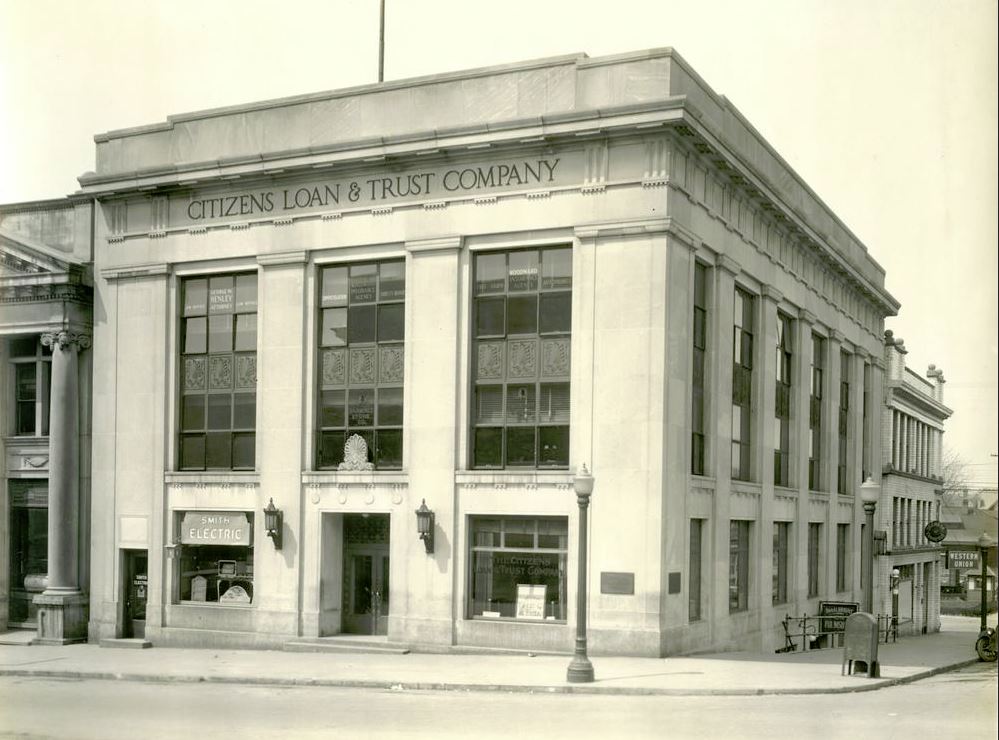 The first officers of the new loan company are P.K. Buskirk, Fred Matthews, John T. Woodward, and William N. Showers. Others aiding in the organization are W.T. Hicks, W.S. Bradfute, H.C. Duncan, Ira C. Batman, L.V. Buskirk, N.U. Hill, Mary Waldron, Ed. Corr, J.T. Woodward, and John Thornton. The first officers of the new loan company are P.K. Buskirk, Fred Matthews, John T. Woodward, and William N. Showers. Others aiding in the organization are W.T. Hicks, W.S. Bradfute, H.C. Duncan, Ira C. Batman, L.V. Buskirk, N.U. Hill, Mary Waldron, Ed. Corr, J.T. Woodward, and John Thornton.
Source: History of Lawrence and Monroe Counties, Indiana: Their People, Industries, and Institutions (Indianapolis: B. F. Bowen & Co., 1914), 384. more...
|
| Channeling Machines use air 1901 |
First use of compressed air for channeling machines.
Source: Shewmaker, Sherman N. Quarry Quest. A Field Trip Guide to the Indiana Limestone District, Monroe and Lawrence Counties, Indiana, 1991.
|
| First Presbyterian Church dedicated 1901, Jun 23 |
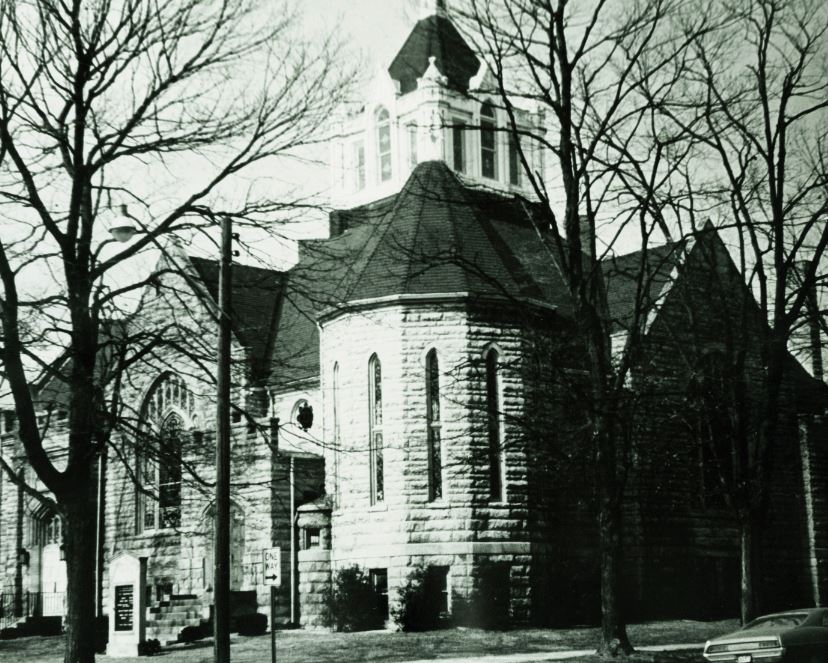 Dedicatory services are held for members of the new First Presbyterian Church, located at the corner of 6th and Lincoln Streets. The previous building on Walnut Street was destroyed in a fire in 1899. The estimated cost of the new limestone church on 6th Street was $15,791 and the final cost was $30,000. Dedicatory services are held for members of the new First Presbyterian Church, located at the corner of 6th and Lincoln Streets. The previous building on Walnut Street was destroyed in a fire in 1899. The estimated cost of the new limestone church on 6th Street was $15,791 and the final cost was $30,000.
Source: "Presbyterians Refurbishing Building: Church Mission Not Lost in Excitement," Daily Herald-Telephone, April 6, 1972, 8. more...
|
| 12 Limestone men strike 1901, Jul 2 |
12 machine men struck due to wage cut from .22.5 to .20/hr.
Source: Bloomington Telephone 2 July, 1901 p 4 col 1
|
| Architect catalog published 1902 |
Bloomington architect John Lincoln Nichols publishes a catalog of home designs entitled "Nichols' Album of Artistic Dwellings."
Source: Bill Coulter, "J. L. Nichols," State Historic Architectural and Archaeological Research Database (SHAARD), February 2, 2015, 2.
|
| Simmons Residence built 1902 |
The limestone and frame building of the Simmons Residence at 420 South Woodlawn is led under the direction of Bloomington architect John Lincoln Nichols (J. L. Nichols, Architect).
Source: Bill Coulter, "J. L. Nichols," State Historic Architectural and Archaeological Research Database (SHAARD), February 2, 2015, 2.
|
| Vos House built 1903 |
The limestone building of the Vos House at 114 South Grant Street is led under the direction of Bloomington architect John Lincoln Nichols, his firm called J. L. Nichols, Architect.
Source: Bill Coulter, "J. L. Nichols," State Historic Architectural and Archaeological Research Database (SHAARD), February 2, 2015, 2.
|
| $10,000 suit filed 1903, Jun 2 |
Mrs. Jenkins files a $10,000 suit because of her husband's death on June 11, 1901.
Source: "Heavy Damage Suit.," Evening World, June 2, 1903.
|
| Mayfield killed in quarry accident 1903, Jun 10 |
Roy Mayfield, 12, is killed in quarry accident.
Source: "Crushed to Death.," Evening World, June 10, 1903.
|
| Quarry accident kills Boynton 1903, Jun 11 |
Frank Boynton is fatally crushed by a stone at the Diamond Quarry in Bloomington while working as scabbler.
Source: Bloomington Evening World 11 June, 1903 p 1 col 3
|
| Quarry accident kills Staggs 1903, Jun 11 |
Frank Staggs, 53, is killed by a falling stone which was being lifted by a derrick.
Source: Rice, Claude F., and Marilyn McCoy. Monroe County, Indiana, Coroners Inquest: 1888-1973. Bloomington, IN: Monroe County Historical Society, 2001.
|
| Quarry boss dies after head injury 1903, Jul 2 |
Source: "Another Fatal Quarry Accident.," Evening World, July 2, 1903.
|
| Knights of Pythias Building built 1904 |
The building of the Pythias Fraternal building at 114 North Walnut Street is led under the direction of Bloomington architect John Lincoln Nichols. It has a limestone and brick facade.
Source: Bill Coulter, "J. L. Nichols," State Historic Architectural and Archaeological Research Database (SHAARD), February 2, 2015, 1.
|
| Myers Residence built 1904 |
The limestone building of the Myers Residence at 321 North Washington Street is led under the direction of Bloomington architect John Lincoln Nichols, his firm called J. L. Nichols, Architect.
Source: Bill Coulter, "J. L. Nichols," State Historic Architectural and Archaeological Research Database (SHAARD), February 2, 2015, 2.
|
| Quarry worker dies in fall 1904, Nov 17 |
John Henshaw, 21, is killed after falling 15 feet from a ledge while working as a side man on a channeling machine at Johnson Stone Company.
Source: Bloomington Evening World 17 November, 1904 p 1 col 1
|
| People's State Bank chartered 1904, Dec 2 |
The People's State Bank is established in Ellettsville with Will P. Sandy elected as president and Fred Owens as vice president with the following serving as board of directors: Fred Matthews, W. B. Harris, Sr., and Albert Hoadley. After a starting capital of $25,000 the bank grew by its 50th birthday in 1954 to $67,000. The first bank was located on Sale Street at the old post office until 1927.
Source: "In and Around: Peoples State Bank Grows in Size and Serivce," The Journal, August 18, 1971.
|
| Nichols & Son opens 1905 |
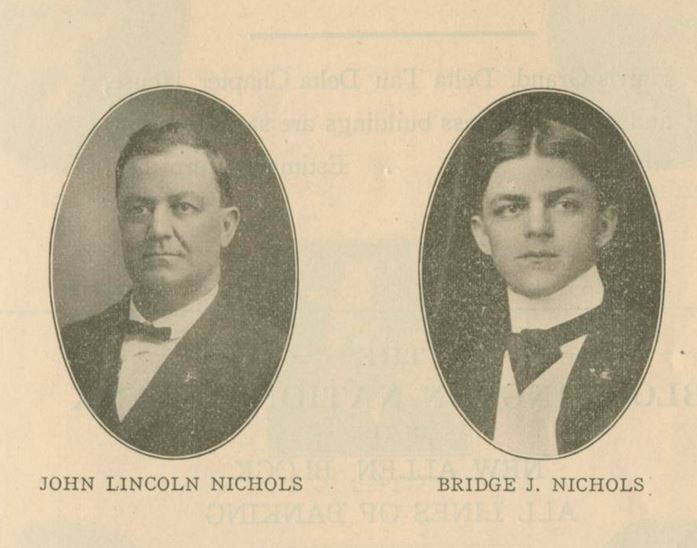 Architect John Lincoln Nichols, born in Bloomington 1859, brings his son Bridge Nichols into the business and practices as Nichols & Son. The business was previously called J. L. Nichols, Architect. Architect John Lincoln Nichols, born in Bloomington 1859, brings his son Bridge Nichols into the business and practices as Nichols & Son. The business was previously called J. L. Nichols, Architect.
Source: Bill Coulter, "J. L. Nichols," State Historic Architectural and Archaeological Research Database (SHAARD), February 2, 2015, 1. more...
|
| Federal Government Buildings Use Limestone for Interiors 1905 |
Walls of inner court of House of Representatives office building and Senate Office Building is constructed of Indiana Limestone; work completed in 1906.
Source: Shewmaker, Sherman N. Quarry Quest. A Field Trip Guide to the Indiana Limestone District, Monroe and Lawrence Counties, Indiana, 1991.
|
| Kentucky State Capitol Built 1905 |
Kentucky state capitol built of Indiana limestone.
Source: Batchelor, Joseph A. An Economic History of the Indiana Oolitic Limestone Industry. Bloomington: school of business, Indiana University, 1944.
|
| Quarry worker killed in accident 1905, Nov 11 |
Jesse N. Fender, 24, is killed by a falling boom pole while working as a hooker at the Johnson Stone Company.
Source: "James Fender Instantly Killed," Evening World, November 11, 1905.
|
| Indiana Accounts For Over Half of National Total 1906 |
First year in which Indiana dimension limestone production exceeds 50% of total U.S. production.
Source: Shewmaker, Sherman N. Quarry Quest. A Field Trip Guide to the Indiana Limestone District, Monroe and Lawrence Counties, Indiana, 1991.
|
| Sigma Chi Fraternity built 1906 |
The limestone building of the Sigma Chi Fraternity building at 601 East Seventh Street is led under the direction of Bloomington architect John Lincoln Nichols, his firm called J. L. Nichols, Architect.
Source: Bill Coulter, "J. L. Nichols," State Historic Architectural and Archaeological Research Database (SHAARD), February 2, 2015, 2.
|
| Johnson Residence built 1906 |
The limestone building of the Johnson Residence at 522 East Third Street is led under the direction of Bloomington architect John Lincoln Nichols, his firm called J. L. Nichols, Architect.
Source: Bill Coulter, "J. L. Nichols," State Historic Architectural and Archaeological Research Database (SHAARD), February 2, 2015, 2.
|
| Wooden trestle for railroad built 1906 |
Near the small community of stone workers - called Victor - in Indian Creek Township, a wooden trestle is built by the Illinois Central Railroad. Later this region is tagged as part of the Victor Oolitic Stone Company Historic District.
Source: Monroe County Interim Report: Indiana Historic Sites and Structures Inventory (Bloomington, IN: Bloomington Restorations, Inc., 1989), xvi.
|
| Nelson and Gauss charged 1906, Mar 15 |
Charles Gauss and Millard Nelson are charged with assault and battery with intent to kill an Italian quarry worker from the Clear Creek district. They await trial in jail. Their trial is set for Tuesday, March 20th, and will be held in front of Mayor Malott.
Source: Evening World, March 15, 1906, 4.
|
| Clear Creek Stone Company sold 1906, Apr 9 |
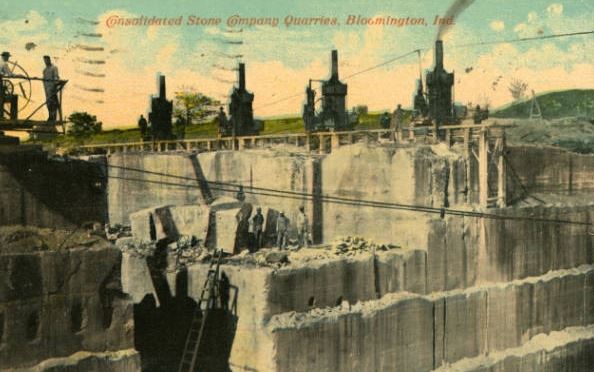 Clear Creek Stone Company is sold to the Consolidated Stone Company. Clear Creek Stone Company is sold to the Consolidated Stone Company.
Source: Batchelor, Joseph A. An Economic History of the Indiana Oolitic Limestone Industry. Bloomington: school of business, Indiana University, 1944. more...
|
| Limestone Quarry Company sold 1906, May 4 |
Buffalo White Limestone Quarry Company is sold and abandoned.
Source: Batchelor, Joseph A. An Economic History of the Indiana Oolitic Limestone Industry. Bloomington: school of business, Indiana University, 1944.
|
| Quarry accident kills Butcher 1906, May 31 |
John O. Butcher, 24, is killed in a quarry accident.
Source: Rice, Claude F., and Marilyn McCoy. Monroe County, Indiana, Coroners Inquest: 1888-1973. Bloomington, IN: Monroe County Historical Society, 2001.
|
| New Technologies 1907 |
Pneumatic tools begins to replace mallet and chisel for cutting and carving stone.
Source: Shewmaker, Sherman N. Quarry Quest. A Field Trip Guide to the Indiana Limestone District, Monroe and Lawrence Counties, Indiana, 1991.
|
| Production Statistics 1907 |
Average cost is estimated at 75 cents per foot in Oolitic stone and $1 per foot for Mitchell limestone; average rate of cutting is 20 feet per day.
Source: Batchelor, Joseph A. An Economic History of the Indiana Oolitic Limestone Industry. Bloomington: school of business, Indiana University, 1944.
|
| Allen Building built 1907 |
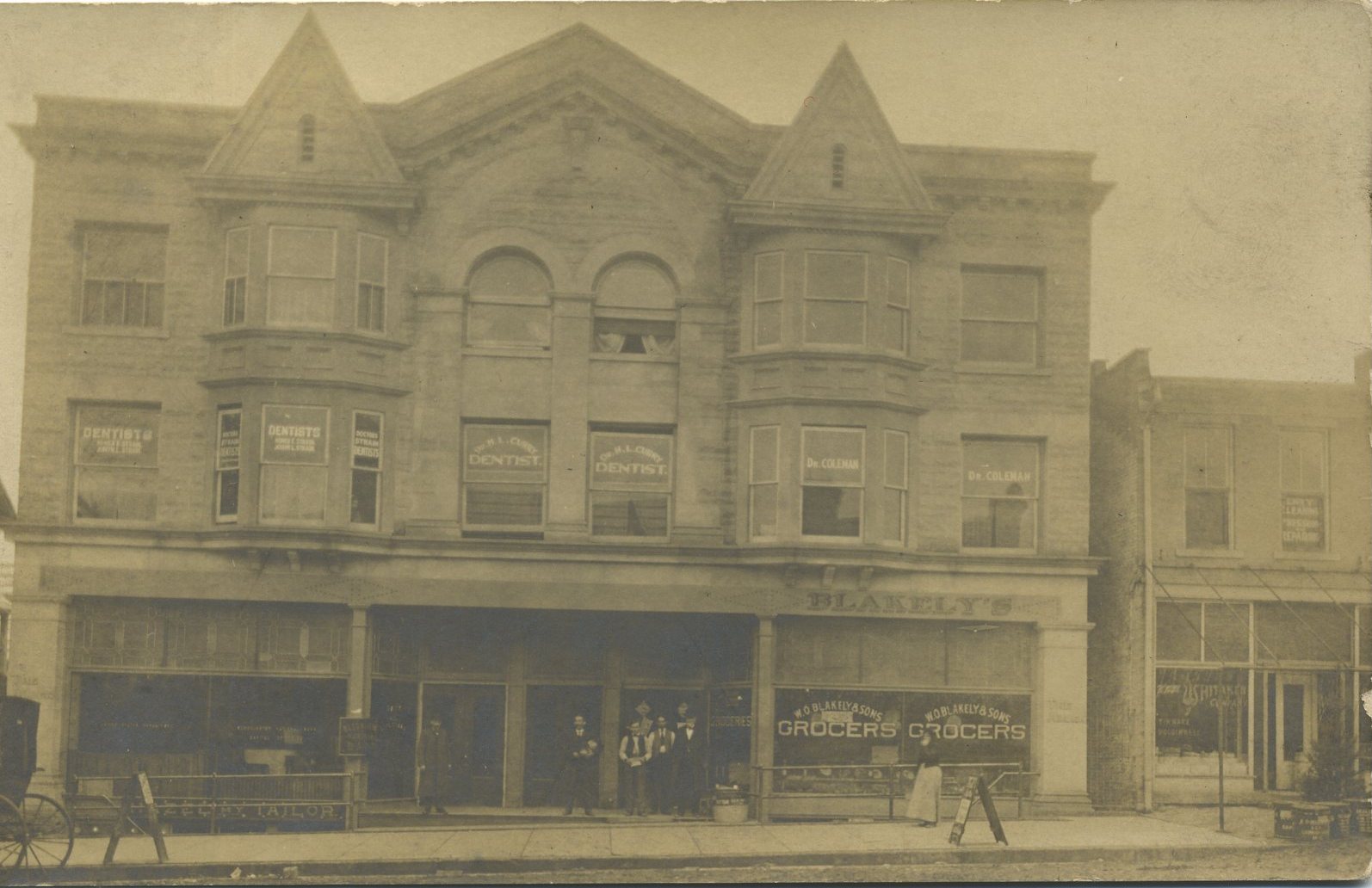 The construction of the Allen Building, 104 East Kirkwood Avenue, is led under the direction of Bloomington architect John Lincoln Nichols. It has a limestone facade. The construction of the Allen Building, 104 East Kirkwood Avenue, is led under the direction of Bloomington architect John Lincoln Nichols. It has a limestone facade.
Source: Bill Coulter, "J. L. Nichols," State Historic Architectural and Archaeological Research Database (SHAARD), February 2, 2015, 1.
|
| First National Bank built 1907 |
The construction of the First National Bank at 121-125 West Kirkwood Avenue is led under the direction of Bloomington architect John Lincoln Nichols. It has a limestone facade.
Source: Bill Coulter, "J. L. Nichols," State Historic Architectural and Archaeological Research Database (SHAARD), February 2, 2015, 1.
|
| Courthouse cornerstone laid 1907, May 10 |
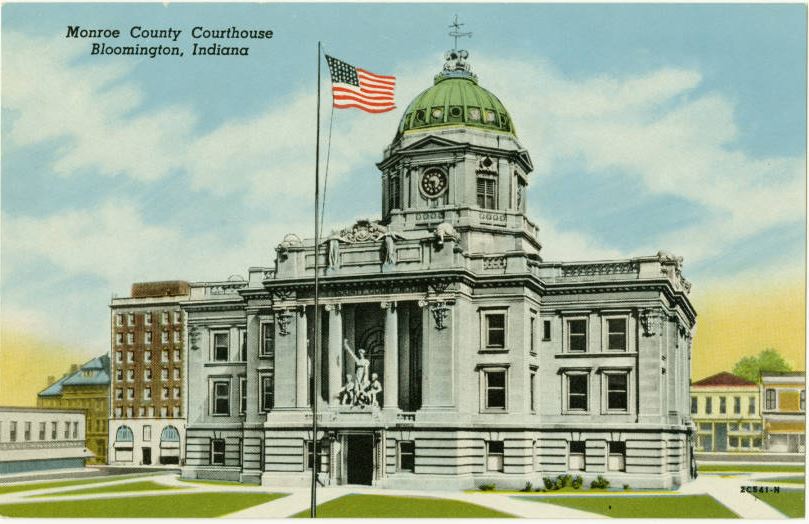 A Masonic ceremony for the new courthouse construction is witnessed by thousands. A Masonic ceremony for the new courthouse construction is witnessed by thousands.
Source: "Cornerstone Laid With Impressive Masonic Ceremony," Evening World, May 10, 1907, Front, 1. more...
|
| Quarry accident kills Tell 1907, May 31 |
Harry Tell, 60, dies when a stone is dropped from a derrick onto head, crushing skull.
Source: Rice, Claude F., and Marilyn McCoy. Monroe County, Indiana, Coroners Inquest: 1888-1973. Bloomington, IN: Monroe County Historical Society, 2001.
|
| Matthews dies 1907, Jun 29 |
Senator William N. Matthews dies of illness in his Bedford home. Matthews was born in England but has lived near Ellettsville for most of his life. He and Fred Matthews built the Matthews Brothers' stone quarry and mill and later W. N. Matthews helped to develop the P. M. & B. quarries. He leaves behind his wife, eight children, and four siblings.
Source: "W. N. Matthews Is Dead," Evening World, June 29, 1907.
|
| Rocco sued 1907, Oct 29 |
Italian banker and merchant of Reed's quarry Phillip Rocco is sued by fellow Italian Tony Scholy, who claims Rocco owes him $200 for work he did for him. Several months ago Rocco was tried and acquitted for the killing of another young Italian man, who was attempting to forcibly enter Rocco's store. It is said that this man also assaulted Rocco.
Source: Bloomington Telephone, October 29, 1907, 1.
|
| Monarch Stone Company Sold 1908 |
Monarch Stone Company is sold to C.H. Moline.
Source: Batchelor, Joseph A. An Economic History of the Indiana Oolitic Limestone Industry. Bloomington: school of business, Indiana University, 1944.
|
| Rogers lays foundation 1908 |
Ralph Rogers lays foundation for Bloomington Crushed Stone with others in the quarry business.
Source: Sandy Smith, From the Ground Up: How Rocks, Roads, and Rogers Group Helped Build the Nation (Franklin, Tennessee: Providence House Publishers, 2008), 7.
|
| Grant Stone Company sold 1908, Jan 6 |
Grant Stone Company is sold and abandoned.
Source: Batchelor, Joseph A. An Economic History of the Indiana Oolitic Limestone Industry. Bloomington: school of business, Indiana University, 1944.
|
| Suits filed against Archers and Stanfield 1908, Jan 7 |
Italian workers Tony Sholy and Tosti file lawsuits against Charles Archer, James Archer, and John Stanfield. Sholy and Tosti allege that the Americans have threatened to kill Tosti several times and have threatened to kill the 30 Italian workers at the Johnson National and Consolidated quarries. Tosti also says that the Archer's and Stanfield waited for him with shotguns on January 1st, but he escaped by running home. He also admits that he also had a shotgun and a revolver at the time.
Source: "Must Keep Peace," Bloomington Telephone, January 7, 1908, 4.
|
| Rock moves away 1908, Jan 29 |
Prominent Italian banker and merchant Philip Rock disposes his interests at Oolitic and moves away due to recent outrages at Oolitic and other Italian properties. Fellow businessman John Alisa also experiences similar losses and moves away. Rock reportedly blames the "Black Hand" for his losses, the most recent being $5,000.
Source: Daily Telephone, January 31, 1908, 1.
|
| Quarry accident kills McNeely 1908, Mar 27 |
Alonzo McNeely, 49, is killed in a quarry accident.
Source: Rice, Claude F., and Marilyn McCoy. Monroe County, Indiana, Coroners Inquest: 1888-1973. Bloomington, IN: Monroe County Historical Society, 2001.
|
| Monarch Stone Company sold 1908, Jun 1 |
Monarch Stone Company is sold to C.H. Moline.
Source: Batchelor, Joseph A. An Economic History of the Indiana Oolitic Limestone Industry. Bloomington: school of business, Indiana University, 1944.
|
| New courthouse dedicated 1908, Jul 4 |
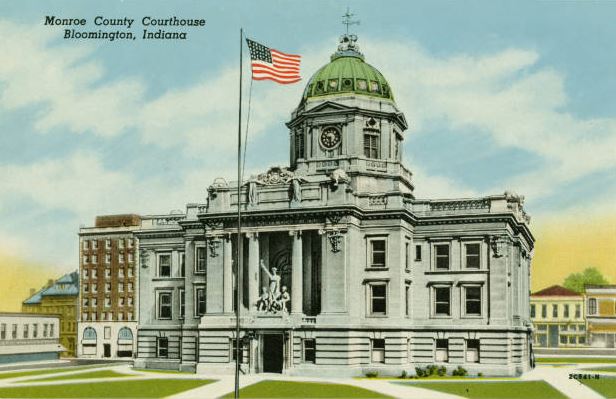 A celebration is planned to dedicate the new courthouse. A celebration is planned to dedicate the new courthouse.
Source: D. C. Miller, "Old Bloomington," The World Telephone, April 1, 1908. more...
|
| Italian workers noted 1908, Sep 4 |
According to "The Smithville News", around 300 Italians working in the quarries live in this region. It is estimated that no more than one of every ten Italian workers speak English.
Source: Smithville News, September 4, 1908, 1.
|
| Weimer Lake built 1909 |
Bloomington builds Weimer Springs or Weimer Lake to address serious water shortages despite IU geologists instructing that the topography in the southwest part of the county has limestone, caves, and fractures: the system will not hold water.
Source: Bob Dodd, "Water, Water Everywhere and All It Does Is Sink," The Monroe County Historian, January 1, 1909, 8. map
|
| Rock plans to rebuild 1909, Jan 29 |
Italian banker and merchant Phillip Rock loses a store in Sanders and a store in Oolitic after they are destroyed by fire. Rock announces that he plans to build a large fire-proof, stone building in Oolitic. He claims that he has been the victim of the "Black Hand" three times within the last year.
Source: Smithville News, January 29, 1909, 3.
|
| First Methodist general contract awarded 1909, Feb 27 |
The First Methodist Church board awards the general contracting contract to J. F. Arling & Son Construction Company of Cleveland, Ohio, for $69,729. The architects for this building are Badgley & Nichlas of Cleveland Ohio. The new church building is to be built at 219 East Fourth Street
Source: Bill Coulter, "First Methodist Church, 219 E. Fourth St., Bloomington, Monroe County, Indiana," State Historic Architectural and Archaeological Research Database (SHAARD), March 11, 2012, 2.
|
| Quarry accident kills Myers 1909, Mar 16 |
James Myers, 35, falls fatally from the quarry edge at the Matthews Stone Mill of Ellettsville, fracturing skull and bones on right side.
Source: Coroner's Inquest; Bloomington Daily Telephone 16 March, 1909 p 1 col 4
|
| Companies Merge 1910 |
The Cleveland Stone Company purchases the Bedford Quarries Company and merges it with the PM & B Stone Company to create the Indiana Quarries Company.
Source: Batchelor, Joseph A. An Economic History of the Indiana Oolitic Limestone Industry. Bloomington: school of business, Indiana University, 1944.
|
| First Methodist Church progress 1910, Mar 11 |
According to the "Evening World", contracts to sod and grade the lot, and put in cement sidewalks and alleys are being received by James Smith. Around 20 designs are submitted for the windows and glass art. There are 34 rooms in the building and all of them will be connected to the main auditorium, which will seat 2,000 people.
Source: Bill Coulter, "First Methodist Church, 219 E. Fourth St., Bloomington, Monroe County, Indiana," State Historic Architectural and Archaeological Research Database (SHAARD), March 11, 2012, 2-3.
|
| Stone contract finished on First Methodist 1910, Mar 19 |
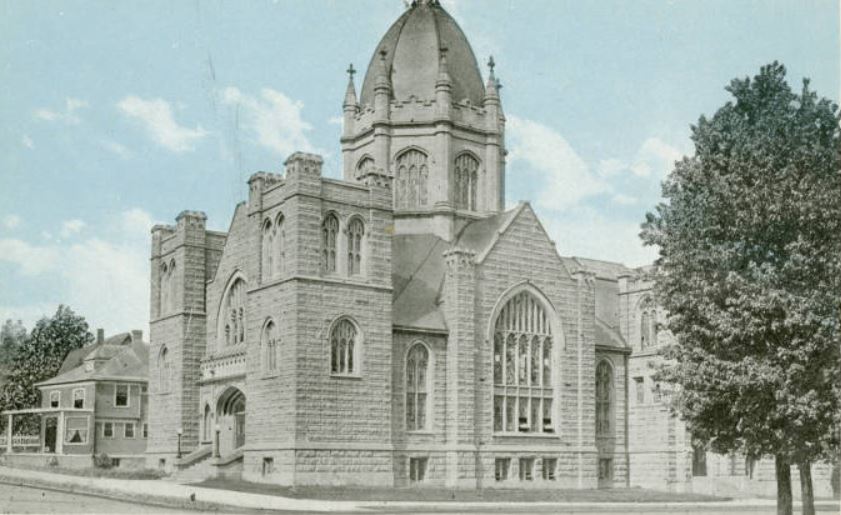 The last block of stone is laid on the new First Methodist Church, signaled by the placement of an American flag on top of the tower. As of Monday, March 21st, the only remaining stone to be put is in on the stone steps. The last block of stone is laid on the new First Methodist Church, signaled by the placement of an American flag on top of the tower. As of Monday, March 21st, the only remaining stone to be put is in on the stone steps.
Source: "Last block of stone is laid: Contractor finishes stone contract on Methodist Church," Daily Telephone, March 21, 1910. more...
|
| Church progress made 1910, Mar 21 |
The last block of stone is laid on the new First Methodist Church at 219 East Fourth Street. The only remaining stone to be laid is on the stone steps. The general contractors, Airing & Sons, will begin to cement the basement floors and start the plaster work this week. The church dome is to be red slate trimmed with copper. The inside finishing contract is awarded to a firm from Athens, Ohio.
Source: Bill Coulter, "First Methodist Church, 219 E. Fourth St., Bloomington, Monroe County, Indiana," State Historic Architectural and Archaeological Research Database (SHAARD), March 11, 2012, 3.
|
| Eclipse Stone Company sold 1910, Jul 6 |
Eclipse Stone Company is sold to Alexander King Stone Company.
Source: Batchelor, Joseph A. An Economic History of the Indiana Oolitic Limestone Industry. Bloomington: school of business, Indiana University, 1944.
|
| Palone reportedly escapes 1910, Jul 14 |
Italian Nick Palone, who murdered a fellow Italian at Reeds Quarry, is suspected to have left the country. He remained in the country for weeks after the murder reportedly to seek revenge on his enemies and collect money from a few of the local Italian community members. The police report that they do not think he will be caught.
Source: Bloomington Telephone, July 14, 1910, 1.
|
| Cassine attacked 1910, Aug 24 |
Mrs. Sylvester Cassine, and Italian woman, is attacked around 9:30AM by a man outside her home near Reed quarry. She is choked and her neck is lacerated. Her three year old son runs to a neighbors and raises an alarm. Several Italian workers at Reed quarry look for the attacker but he is not found. The man is suspected to be Italian Nick Pelloni, who is already being hunted for murder. Local authorities have not begun an investigation due to Sheriff Ratliff's absence.
Source: "Palone Attacks Italian Woman?," Bloomington Telephone, August 24, 1910, 4.
|
| First Methodist Church dedicated 1910, Sep 18 |
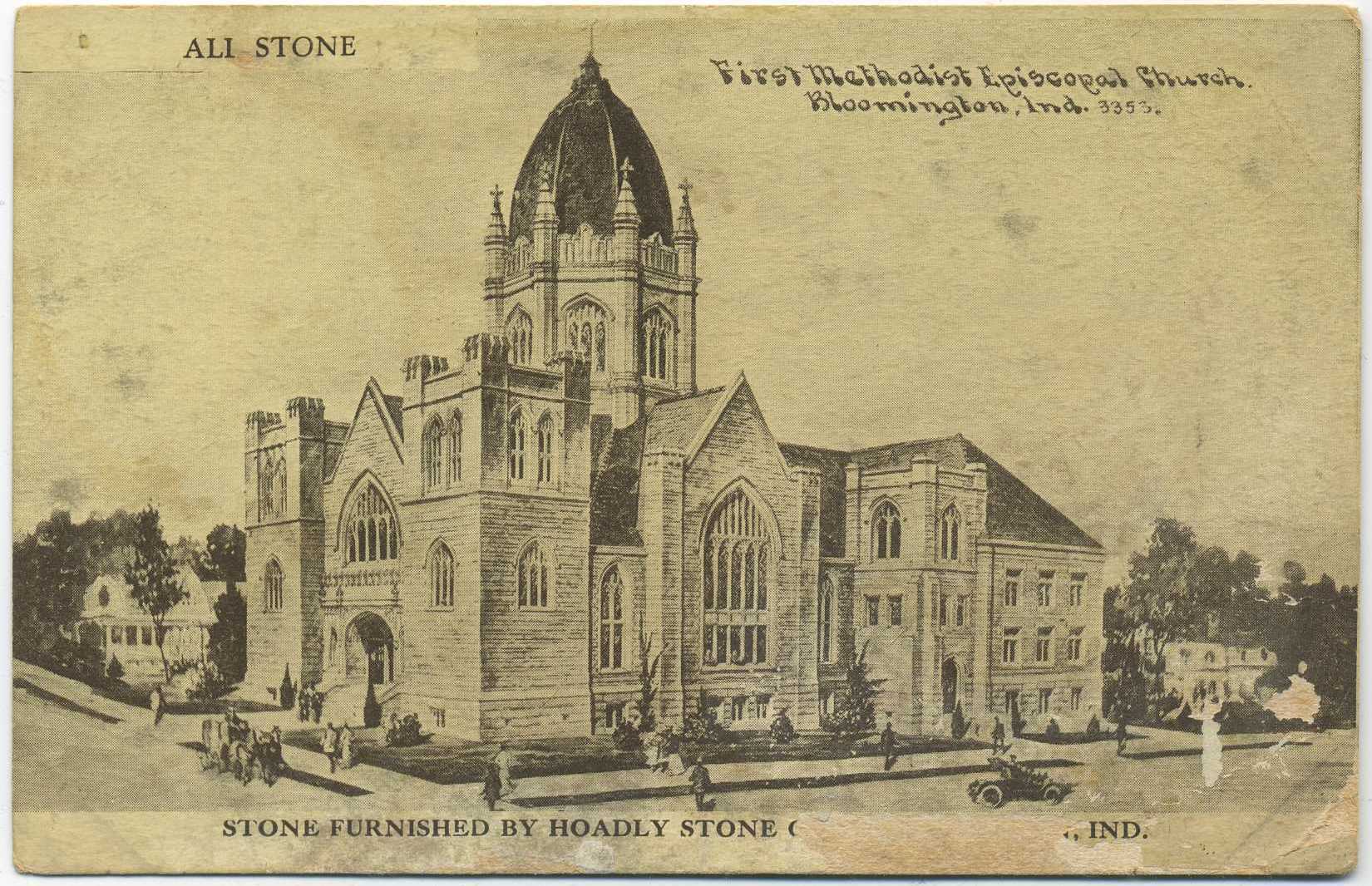 The First Methodist Church at 219 East Fourth Street is formally dedicated by Bishop William H. Anderson of Chattanooga, Tennessee. The estimated audience size is 2,300 people. This is the largest audience ever assembled in a Bloomington church. The new building reportedly cost $101,046.93. The First Methodist Church at 219 East Fourth Street is formally dedicated by Bishop William H. Anderson of Chattanooga, Tennessee. The estimated audience size is 2,300 people. This is the largest audience ever assembled in a Bloomington church. The new building reportedly cost $101,046.93.
Source: Bill Coulter, "First Methodist Church, 219 E. Fourth St., Bloomington, Monroe County, Indiana," State Historic Architectural and Archaeological Research Database (SHAARD), March 11, 2012, 6-7.
|
| Federal Building Built Entirely of Indiana Stone 1911 |
First federal government building constructed entirely of Indiana Limestone - The Bureau of Printing and Engraving, Washington, DC - is built.
Source: Shewmaker, Sherman N. Quarry Quest. A Field Trip Guide to the Indiana Limestone District, Monroe and Lawrence Counties, Indiana, 1991.
|
| Rogers & Mefford Store built 1911 |
The limestone building of the Rogers & Mefford Store and Flats at 108-110 East Sixth Street is led under the direction of Bloomington architect John Lincoln Nichols, his firm called J. L. Nichols, Architect.
Source: Bill Coulter, "J. L. Nichols," State Historic Architectural and Archaeological Research Database (SHAARD), February 2, 2015, 3.
|
| Pongeo and Meno arrested 1911, Mar 10 |
Augutto Pongeo and Thomas Meno are arrested at Oolitic for connections to the murder of Phillip Rock, an Italian banker and merchant. Rock was shot in an ambush in August 1910. Pongeo is charged with the murder and Meno is charged with being an accessory before the fact. It is speculated that feuds may break out within the Italian community because both Rock and Meno were prominent members of the community.
Source: "Arrested for Oolitic Murder," Bloomington Telephone, March 10, 1911, 1.
|
| Three Italians arrested for "blind tiger" 1911, Nov 5 |
Sheriff Browning, Deputy Robertson, Policeman Hinkle, and Deputy Prosecutor Regester raid a drinking club near the Oolitic Stone Quarry at Sanders and confiscate 48 cases of beer. Three Italians, Joe Delillio, Sylvester Palone, and Nick Videtta, are arrested and charged with running a "blind tiger". The preliminary trail is later this day.
Source: "Three Italians Arrested By The Police Sunday," Bloomington Weekly Courier, November 7, 1911, 1.
|
| Tomi arrested 1911, Dec 7 |
Italian Fred Tomi is arrested in the stone quarry district by Sheriff Robinson and Justice Simpson Robertson with three charges. These charges include selling alcohol without a license, selling alcohol on Sunday, and selling alcohol to a minor. The minor in question is 15 year old Orville Higgins, who acquired a loaded revolver while intoxicated and threatened members of his community in Sanders. A fine was paid for this incident after he pointed the revolver at a man in Sanders.
Source: "Three Charges Against Italian," Bloomington World-Courier, December 8, 1911, 1.
|
| Paul Hoadley drowns in Monon Lake 1911, Dec 29 |
12 year old Paul Hoadley, son of Bert C. Hoadley, drowns in Monon Lake while attempting to save his 13 year old cousin Willie Hoadley, son of J. W. Hoadley, from drowning. While skating, the ice on the lake broke through and Willie fell into the water; Paul soon followed while trying to save his cousin. Upon hearing the boys calls for help John Browning and his son Porter leave Italian Vito Solomito's work site to try and help. Tom Dilorati also appears on scene and he and John Browning attempt to save the boys. Willie is pulled ashore and sent to the doctor but Paul cannot be revived.
Source: "Boy Hero Loses Life," Bloomington Daily Telephone, December 29, 1911, 1.
|
| Phi Gamma Delta house built 1912 |
The designing of the Indiana University Phi Gamma Delta house of limestone at 631 E. 3rd Street is led under the direction of Lowe & Bollenbacher architectural firm.
Source: Bill Coulter, "Lowe & Bollenbacher," State Historic Architectural and Archaeological Research Database (SHAARD), February 3, 2015, 2.
|
| Simmons Bungalow built 1912 |
The limestone building of the Simmons Bungalow at 502 South Washington Street is led under the direction of Bloomington architect John Lincoln Nichols, his firm called J. L. Nichols, Architect.
Source: Bill Coulter, "J. L. Nichols," State Historic Architectural and Archaeological Research Database (SHAARD), February 2, 2015, 3.
|
| Wicks house built 1912 |
The designing of the Wicks residence of limestone at 422 N. Indiana Ave. is led under the direction of Lowe & Bollenbacher Architectural firm.
Source: Bill Coulter, "Lowe & Bollenbacher," State Historic Architectural and Archaeological Research Database (SHAARD), February 3, 2015, 2.
|
| Sears Residence built 1912 |
The brick and limestone building of the Sears Residence at 505 North Walnut Street is led under the direction of Bloomington architect John Lincoln Nichols, his firm called J. L. Nichols, Architect.
Source: Bill Coulter, "J. L. Nichols," State Historic Architectural and Archaeological Research Database (SHAARD), February 2, 2015, 3.
|
| Grosse charged 1912, Apr 9 |
National Stone Quarry worker Jasper Grosse is charged with operating a "blind tiger" in an old shack near the quarry. He is also accused of getting into a severe fight with a fellow employee.
Source: Bloomington Telephone, April 9, 1912, 4.
|
| Titanic sinks 1912, Apr 14 |
Limestone businessman, John B. Crafton, formerly of Bloomington, dies in the Titanic disaster.
Source: "The John B. Crafton Monument in Rose Hill," Evening World, May 31, 1912, 1.
|
| Bloomington Bedford Stone Company sold 1912, Apr 26 |
Bloomington Bedford Stone Company is sold to Bloomington-Bedford Stone Company of Kentucky.
Source: Batchelor, Joseph A. An Economic History of the Indiana Oolitic Limestone Industry. Bloomington: school of business, Indiana University, 1944.
|
| Stanford Teter residence built 1913 |
The designing of the Stanford Teter Residence at 528 N. Walnut Street of brick with limestone trim is led under the direction of Lowe & Bollenbacher architectural firm.
Source: Bill Coulter, "Lowe & Bollenbacher," State Historic Architectural and Archaeological Research Database (SHAARD), February 3, 2015, 2.
|
| Karsell Residence built 1913 |
The limestone building of the Karsell Residence at 621 North Walnut Street is led by Bloomington architects John Lincoln Nichols and his brother Leo Morton Nichols, their firm called Nichols & Nichols.
Source: Bill Coulter, "J. L. Nichols," State Historic Architectural and Archaeological Research Database (SHAARD), February 2, 2015, 3.
|
| Stone Company acquires 4 others 1913 |
The United Indiana Stone Company takes over the George W. Henley Stone Company, Fulwider Bedford Quarries Company, and the Crown Stone Company.
Source: Batchelor, Joseph A. An Economic History of the Indiana Oolitic Limestone Industry. Bloomington: school of business, Indiana University, 1944.
|
| Stone Cutters' Union Amends Constitution 1913, Jan |
The Journeyman Stone Cutters Association amends its constitution claiming all men operating stonecutting machinery as members.
Source: Batchelor, Joseph A. An Economic History of the Indiana Oolitic Limestone Industry. Bloomington: school of business, Indiana University, 1944.
|
| Electricity in the Limestone District 1913 |
Electrical transmission lines are extended into the Indiana Limestone District (Oolitic in 1913; Bloomington and Ellettsville in 1914).
Source: Shewmaker, Sherman N. Quarry Quest. A Field Trip Guide to the Indiana Limestone District, Monroe and Lawrence Counties, Indiana, 1991.
|
| Limestone Use Statistics 1913 |
Indiana limestone industry claims that Indiana limestone has been used in the construction of 85% of all courthouses and public buildings built in Indiana in the previous 20 years.
Source: Shewmaker, Sherman N. Quarry Quest. A Field Trip Guide to the Indiana Limestone District, Monroe and Lawrence Counties, Indiana, 1991.
|
| Polloni files for divorce 1913, Jan 15 |
Teresino Polloni files for divorce from her husband Sylvester Polloni, alleging cruel and inhuman treatment. They were married in Vigonel Lazie, Italy in 1905 and moved to America shortly after. They have two children Amerigo (5) and Maria (2). She files for $300 alimony and custody of her daughter. She is represented by Louden & Louden. Sylvester owns a small store near the quarries.
Source: "Divorce in Italian Circles," Bloomington Telephone, January 15, 1913, 4.
|
| Quarrymen's Association established 1913, Jan 20 |
Indiana Limestone Quarrymen's Association is established.
Source: Batchelor, Joseph A. An Economic History of the Indiana Oolitic Limestone Industry. Bloomington: school of business, Indiana University, 1944.
|
| Nichols & Nichols opens 1913, May |
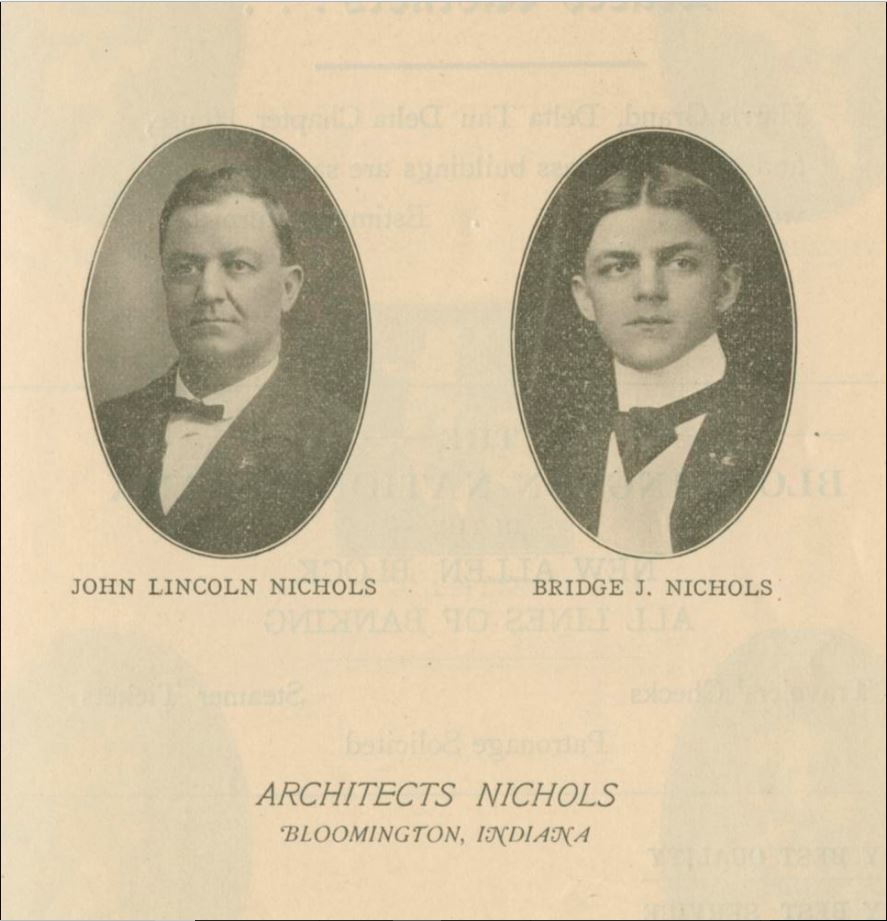 Architect John Lincoln Nichols begins working with his brother, Leo Morton Nichols, calling their business Nichols & Nichols. J. L. Nichols' previous business, Nichols & Son, ended in 1911 after the death of his son Bridge Nichols. Architect John Lincoln Nichols begins working with his brother, Leo Morton Nichols, calling their business Nichols & Nichols. J. L. Nichols' previous business, Nichols & Son, ended in 1911 after the death of his son Bridge Nichols.
Source: Bill Coulter, "J. L. Nichols," State Historic Architectural and Archaeological Research Database (SHAARD), February 2, 2015, 1. more...
|
| Clark charged with assault/battery 1913, May 2 |
An affidavit is filed, charging William Clark with the assault and battery with intent to kill Angelo Geran, an Italian quarry worker, although Clark is not yet arrested. Both Clark and Geran are said to work at Reed stone quarry, where the incident takes place. It is reported that Geran suffered a blow to the head from a shovel and a broken arm.
Source: "Italian Badly Injured.," Bloomington World-Courier, May 2, 1913, 1.
|
| Essanay visits Bloomington 1913, Jul 14 |
Cameramen from Essanay, a "moving picture" company, visit Bloomington and take photos of the Consolidated and Hunter Stone quarries, as well as other sites throughout the week; including Indiana University, the downtown square, and the Bloomington Fire Department.
Source: ""Movies" Men Here Making Local Views; Stone Quarry View Were Taken by Essaney Company Today," Bloomington Weekly Courier, July 15, 1913, 1.
|
| Evans Residence built 1914 |
The limestone building of the Evans Residence at 715 South Fess Avenue is led under the direction of Bloomington architects John Lincoln Nichols and his brother Leo Morton Nichols, their firm called Nichols & Nichols.
Source: Bill Coulter, "J. L. Nichols," State Historic Architectural and Archaeological Research Database (SHAARD), February 2, 2015, 3.
|
| Book Nook built 1914 |
The brick building of The Book Nook on 114 South Indiana Avenue is led under the direction of Bloomington architects John Lincoln Nichols and his brother Leo Morton Nichols, their firm called Nichols & Nichols.
Source: Bill Coulter, "J. L. Nichols," State Historic Architectural and Archaeological Research Database (SHAARD), February 2, 2015, 3.
|
| Benckart Bakery remodeled 1914 |
The brick building of an addition to the Benckart Bakery on 115 Gentry Avenue is led under the direction of Bloomington architects John Lincoln Nichols and his brother Leo Morton Nichols, their firm called Nichols & Nichols.
Source: Bill Coulter, "J. L. Nichols," State Historic Architectural and Archaeological Research Database (SHAARD), February 2, 2015, 3.
|
| Production Statistics 1914 |
Limestone productivity figures: 1,106 men produced 7,929,000 cu ft.
Source: Shewmaker, Sherman N. Quarry Quest. A Field Trip Guide to the Indiana Limestone District, Monroe and Lawrence Counties, Indiana, 1991.
|
| Bert Hoadley Residence built 1914 |
The limestone building of the Bert Hoadley residence at 701 North Walnut Street is led under the direction of Bloomington architect John Lincoln Nichols, his firm called J. L. Nichols, Architect.
Source: Bill Coulter, "J. L. Nichols," State Historic Architectural and Archaeological Research Database (SHAARD), February 2, 2015, 3.
|
| Nichols & Nichols ends 1914 |
Nichols & Nichols Architectural firm, made up of John Lincoln Nichols and his brother Leo Morton Nichols, ends after being opened in May of 1913. The firm ends after Leo Morton Nichols returns to his previous home in Indianapolis. J. L. Nichols continues his business as J. L. Nichols, Architect.
Source: Bill Coulter, "J. L. Nichols," State Historic Architectural and Archaeological Research Database (SHAARD), February 2, 2015, 1.
|
| Stone Waste Statistics 1914 |
Waste stone is estimated at 50% (the amount of solid cut stone left from original quarried stone).
Source: Shewmaker, Sherman N. Quarry Quest. A Field Trip Guide to the Indiana Limestone District, Monroe and Lawrence Counties, Indiana, 1991.
|
| McMillan Acquires Standard Stone 1914 |
The McMillan Company acquires the Standard Stone Company.
Source: Batchelor, Joseph A. An Economic History of the Indiana Oolitic Limestone Industry. Bloomington: school of business, Indiana University, 1944.
|
| City hall plans made 1914, Jan 16 |
The "Weekly Star" announces that the city hall at the corner of Fourth and Walnut Streets will be torn down as it has been condemned and a new building built in the same location soon after. The new building will hold the fire department, police headquarters, city prison, and city offices. The $10,000 city funds have been raised by taxation.
Source: Bill Coulter, "City Hall, 122 S. Walnut St., Bloomington, Monroe County, Indiana," State Historic Architectural and Archaeological Research Database (SHAARD), February 3, 2015, 1-2.
|
| City halls plans made 1914, Mar 14 |
The journal "American Contractor" announces that the architect for the new city hall is Frank P. Riedel and the general contractor is George Weaver.
Source: Bill Coulter, "City Hall, 122 S. Walnut St., Bloomington, Monroe County, Indiana," State Historic Architectural and Archaeological Research Database (SHAARD), February 3, 2015, 2.
|
| Bloomington Southern Railway opens 1914, Jun 30 |
Bloomington Southern Railway is opened, running from Bloomington 9.93 mi southwest to quarries near Victor.
Source: Shewmaker, Sherman N. Quarry Quest. A Field Trip Guide to the Indiana Limestone District, Monroe and Lawrence Counties, Indiana, 1991.
|
| Masonic Temple plans announced 1914, Jul 31 |
A lot owned by Edward Seward at the corner of Walnut and Seventh Street is purchased by the Monroe Lodge for $6,500 for the building of a new $40,000 Masonic Temple. They announce that plans for this temple have been years in the making by L. V. Buskirk (deceased). Although definite plans have yet to be made, the temple will be three stories made of stone.
Source: Bill Coulter, "Masonic Temple, 120 W. Seventh St., Bloomington, Monroe County, Indiana," State Historic Architectural and Archaeological Research Database (SHAARD), February 7, 2015, 1.
|
| City hall contracts awarded 1914, Dec 29 |
Bloomington Mayor Harris and City Attorney O'Donnell announce that four contracting bids were made for the new city hall building and they are as follows: Murphy-Neeld, Bloomington for $44,997; Charles Calvin, Greensburg for $44,950; George Weaver, Indianapolis for $44,300; and Hooker Company, Indianapolis for $47,500. The contract is awarded to George Weaver. The final costs are expected to be around $50,000 after $5,000 for heating, plumbing, and furniture.
Source: Bill Coulter, "City Hall, 122 S. Walnut St., Bloomington, Monroe County, Indiana," State Historic Architectural and Archaeological Research Database (SHAARD), February 3, 2015, 5.
|
| City builts Leonard Springs Lake 1915 |
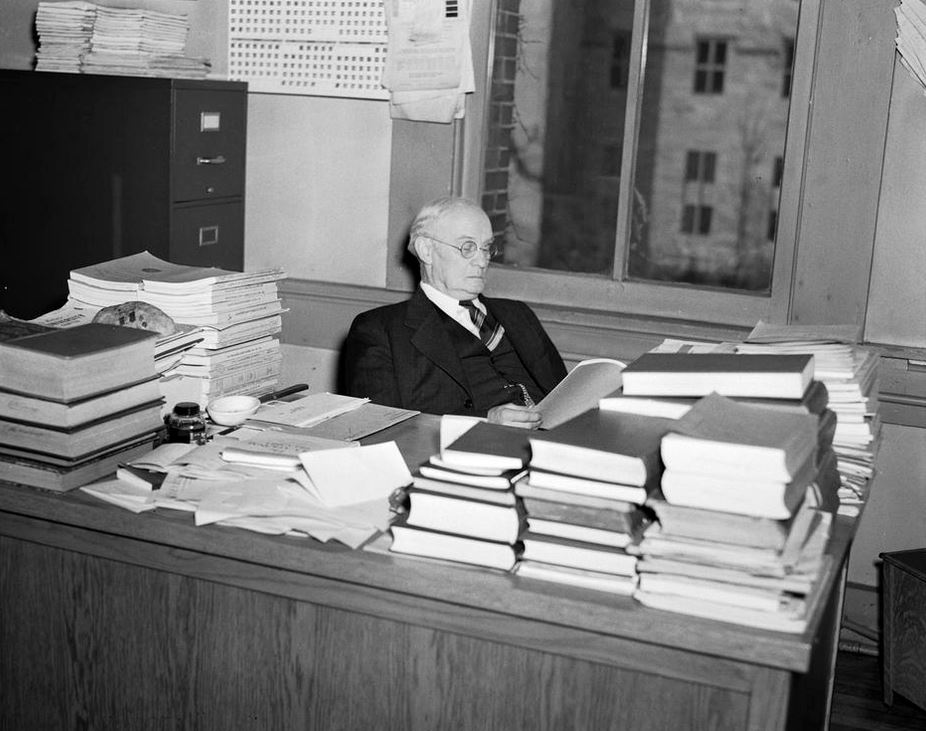 Bloomington constructs another lake to address water problems, this one part of the Leonard Springs network. Despite scientific explanations against the construction from IU geologists, including E. R. Cumings, the new system is built on Leonard Springs, which cannot hold water, and the lake later fails. Bloomington constructs another lake to address water problems, this one part of the Leonard Springs network. Despite scientific explanations against the construction from IU geologists, including E. R. Cumings, the new system is built on Leonard Springs, which cannot hold water, and the lake later fails.
|
| City hall contract entered 1915, Jan 5 |
The city council and general contractor George A. Weaver of Indianapolis enter a contract for the building of the new city hall building at Fourth and Walnut Streets. The contract price is $37,712. Weaver files a bond of $38,000, furnished by the Equitable Surety Company. The contract requires Weaver to finish the building by December 1, 1915.
Source: William Coulter, "City Hall, 122 S. Walnut St., Bloomington, Monroe County, Indiana," State Historic Architectural and Archaeological Research Database (SHAARD), February 3, 2015, 6.
|
| Thompson-Sandy Stone Company sold 1915, Feb 2 |
Thompson-Sandy Stone Company is sold to A.J. Thompson Stone Company.
Source: Batchelor, Joseph A. An Economic History of the Indiana Oolitic Limestone Industry. Bloomington: school of business, Indiana University, 1944.
|
| Objections made against Banneker School 1915, Apr 14 |
The "Daily Telephone" announces that the Fairview Methodist Church officers are making objections against the moving of the Banneker African American School to the lot across from the church at West 8th Street.
Source: Bill Coulter, "Banneker School, 930 W. Seventh St., Bloomington, Monroe County, Indiana," State Historic Architectural and Archaeological Research Database (SHAARD), January 24, 2015, 2.
|
| Banneker School location picked 1915, Apr 27 |
It is reported that the Banneker African American School will be located on West 7th Street and the corner of Elm Street. The price of the property is around $3,200 and is sold by Mrs. Stiver of Bedford and John W. Baxter. The cost of building a school building at this property is estimated at $8,500.
Source: Bill Coulter, "Banneker School, 930 W. Seventh St., Bloomington, Monroe County, Indiana," State Historic Architectural and Archaeological Research Database (SHAARD), January 24, 2015.
|
| Problems reported with city hall plans 1915, May 1 |
The construction of the new city hall building at Fourth and Walnut Streets continues despite having been ordered to stop. Disputes between the city council and city hall contractor are still being settled. The city council, architect Frank Riedel, and city inspector J. H. Nolan believe that inferior stone has been used and that various parts of the building are not being built according to specifications. They also believe that some portions of the building are not supported properly.
Source: William Coulter, "City Hall, 122 S. Walnut St., Bloomington, Monroe County Indiana," State Historic Architectural and Archaeological Research Database (SHAARD), February 3, 2015, 15.
|
| City hall to be torn down 1915, May 4 |
George A. Weaver, the general contractor for the new city hall building at Fourth and Walnut Streets agrees to tear down the portion of the building built over the basement and rebuild it according to the correct specifications of architect Frank Riedel. Weaver refuses to work without Riedel present to direct the building.
Source: Willaim Coulter, "City Hall, 122 S. Walnut St., Bloomington, Monroe County Indiana," State Historic Architectural and Archaeological Research Database (SHAARD), February 3, 2015, 17.
|
| City hall plans change 1915, May 5 |
The city council decides that the portion of the new city hall built above the basement must be torn down and rebuild according to the specifications of architect Frank Riedel. Contractor George A. Weaver has yet to announce whether he will rebuild or stop construction.
Source: William Coulter, "City Hall, 122 S. Walnut St., Bloomington, Monroe County Indiana," State Historic Architectural and Archaeological Research Database (SHAARD), February 3, 2015, 16.
|
| Banneker architects chosen 1915, May 15 |
According to the journal "American Contractor", the architects for the new Banneker African American School are Edwin C. Doeppers and Company. The new school building of limestone will be located on West Seventh Street at 930 W. 7th.
Source: Bill Coulter, "Banneker School, 930 W. Seventh St., Bloomington, Monroe County, Indiana," State Historic Architectural and Archaeological Research Database (SHAARD), January 24, 2015, 4.
|
| City hall contractor quits 1915, May 21 |
DeCroes, who is the contractor providing the stone for the new city hall building at Fourth and Walnut streets, quits after the council finds that the first level built by General Contractor George A. Weaver will have to be torn down and rebuilt. Although Contractor DeCroes has been paid, they expect to lose around $500.
Source: William Coulter, "City Hall, 122 S. Walnut St., Bloomington, Monroe County Indiana," State Historic Architectural and Archaeological Research Database (SHAARD), February 3, 2015, 18.
|
| City hall construction continues 1915, May 23 |
Construction of the new city hall building at 122 South Walnut Street continues after disputes between general contractor George Weaver and architect Frank Riedel (who has been replaced by J. L. Nichols). Construction continues at the urging of Weaver's attorney. There is a pending settlement between Weaver and Riedel. The stone contract is planned to be re-let due to the former stone contractors the DeCrosse (sic) brothers giving up the contract.
Source: William Coulter, "City Hall, 122 S. Walnut St., Bloomington, Monroe County, Indiana," State Historic Architectural and Archaeological Research Database (SHAARD), February 3, 2015, 19.
|
| City Hall architect replaced 1915, Jun 16 |
It is reported that John L. Nichols will take over as new architect and superintendent in charge of building city hall, which is currently under construction. The former architect was T. P. Reidel. Occupancy is expected in October.
Source: "New Architect on City Hall," Daily Telephone, June 16, 1915.
|
| City hall architect changed 1915, Jun 16 |
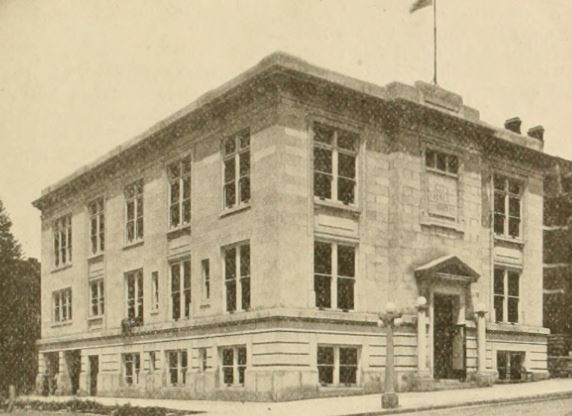 Architect J. L. Nichols replaces Riedel (sic) as the architect for the new city hall building. This change occurs after difficulties with construction and disagreements between Riedel and the general contractor George Weaver. Architect J. L. Nichols replaces Riedel (sic) as the architect for the new city hall building. This change occurs after difficulties with construction and disagreements between Riedel and the general contractor George Weaver.
Source: William Coulter, "City Hall, 122 S. Walnut St., Bloomington, Monroe County, Indiana," State Historic Architectural and Archaeological Research Database (SHAARD), February 3, 2015, 19. more...
|
| Construction bids announced 1915, Jun 22 |
The "Daily Telephone" announces that the general contracting bids received for the new Banneker African American School building are Walter Neeld for $9,186 for stone and $8,664 for brick, A. J. Pike for $9,833 for stone and $8,983 for brick, and an unnamed Chicago firm for a bid over $10,000. The school trustees announce that they are still considering whether to use stone or brick.
Source: Bill Coulter, "Banneker School, 930 W. Seventh St., Bloomington, Monroe County, Indiana," State Historic Architectural and Archaeological Research Database (SHAARD), January 24, 2015, 5.
|
| Contractor chosen for school 1915, Jun 23 |
The Banneker African American School trustees announce that they have chosen A. J. Pike as the contractor for the new school building to be located on West Seventh Street. Pike's bid was $9,145 for stone. Work on the building is scheduled to begin within ten days.
Source: Bill Coulter, "Banneker School, 930 W. Seventh St., Bloomington, Monroe County, Indiana," State Historic Architectural and Archaeological Research Database (SHAARD), January 24, 2015, 6.
|
| J.A. Pike to build school 1915, Jun 24 |
J.A. Pike selected as construction contractor, building new colored school at the price of $9,145 from stone. Building to be completed in three months.
Source: Bloomington Daily Telephone, June 24, 1915.
|
| Roof expected for city hall soon 1915, Jul 8 |
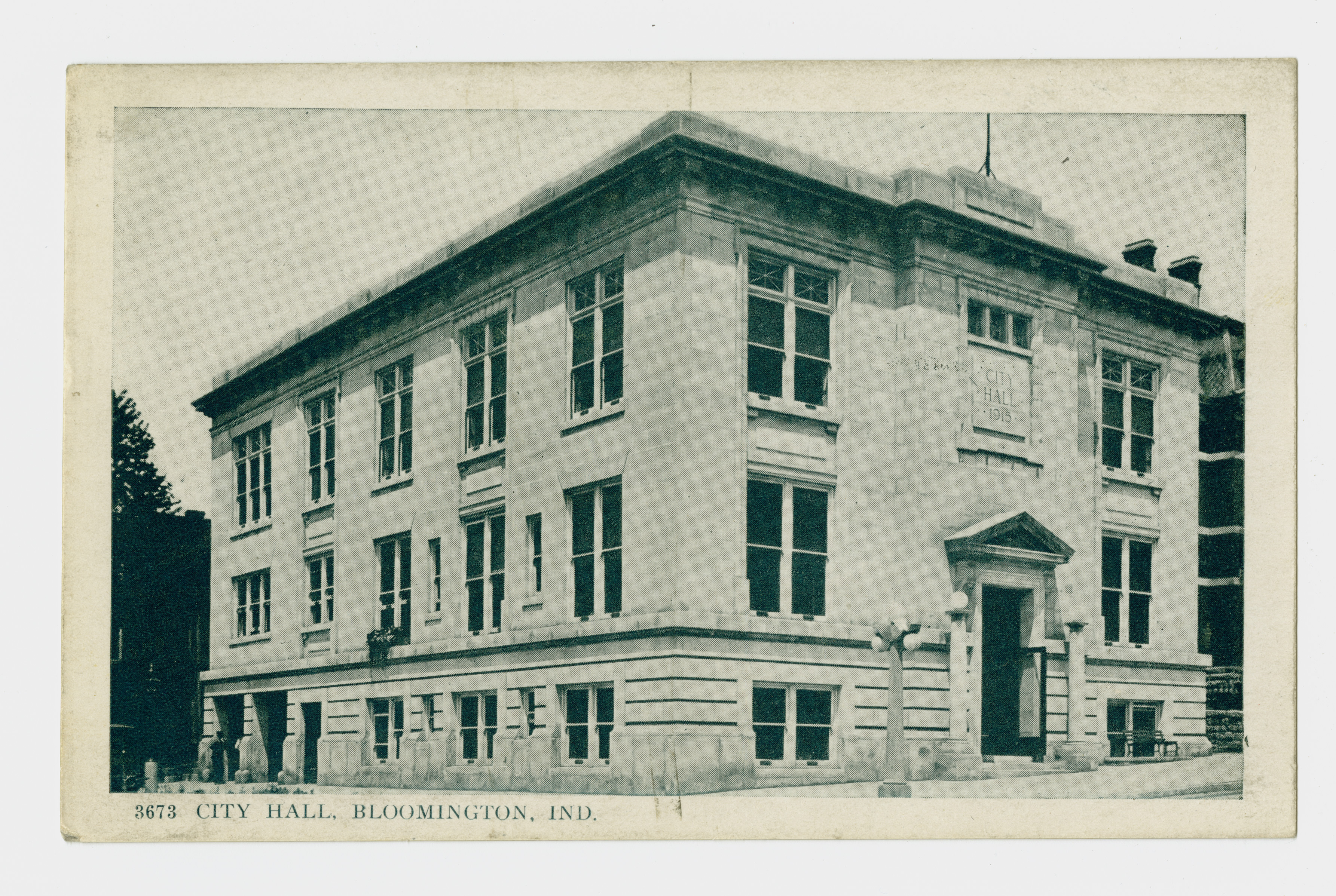 It is reported that, after squabbles, the new city hall will be ready in two weeks, after the roof is placed by Contractor Weaver under the supervision of Architect Nichols. The building is expected to be completed by December. It is reported that, after squabbles, the new city hall will be ready in two weeks, after the roof is placed by Contractor Weaver under the supervision of Architect Nichols. The building is expected to be completed by December.
Source: "New City Hall Going Up," Weekly Star, July 8, 1915.
|
| Masons hold banquet 1915, Dec 31 |
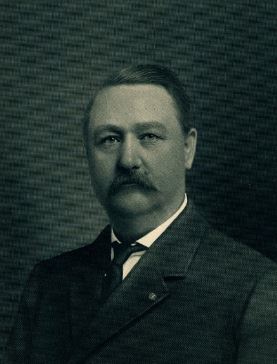 At a Masonic banquet Fred Matthews and Thomas J. Sare give speeches on their plans for the new Masonic Temple to be built on the corner of North Walnut Street and Eighth Street. The actual building of this Temple is not expected for several years. At a Masonic banquet Fred Matthews and Thomas J. Sare give speeches on their plans for the new Masonic Temple to be built on the corner of North Walnut Street and Eighth Street. The actual building of this Temple is not expected for several years.
Source: Bill Coulter, "Masonic Temple, 120 W. Seventh St., Bloomington, Monroe County, Indiana," State Historic Architectural and Archaeological Research Database (SHAARD), February 7, 2015, 2-4. more...
|
| City hall contract renegotiated 1915, Dec 31 |
The city council presents a contract to general contractor George Weaver of Indianapolis for the construction of a new city hall building for $37,685. The original bid was $44,300. The city has $16,500 for the new building.
Source: Bill Coulter, "City Hall, 122 S. Walnut St., Bloomington, Monroe County, Indiana," State Historic Architectural and Archaeological Research Database (SHAARD), December 31, 1915, 5-6.
|
| Limestone Statistics 1916 |
25% of stone sold in the Indiana limestone district is being cut by district mills.
Source: Shewmaker, Sherman N. Quarry Quest. A Field Trip Guide to the Indiana Limestone District, Monroe and Lawrence Counties, Indiana, 1991.
|
| Cut Stone Mill is bought 1916 |
The National Stone Company purchases the cut stone mill of the South Side Stone Company of Bloomington.
Source: Batchelor, Joseph A. An Economic History of the Indiana Oolitic Limestone Industry. Bloomington: school of business, Indiana University, 1944.
|
| Reed Stone Company Sold 1916 |
Reed Stone Company is purchased by the W.C. McMillan Stone Company.
Source: Batchelor, Joseph A. An Economic History of the Indiana Oolitic Limestone Industry. Bloomington: school of business, Indiana University, 1944.
|
| City hall finished 1916, Jan 16 |
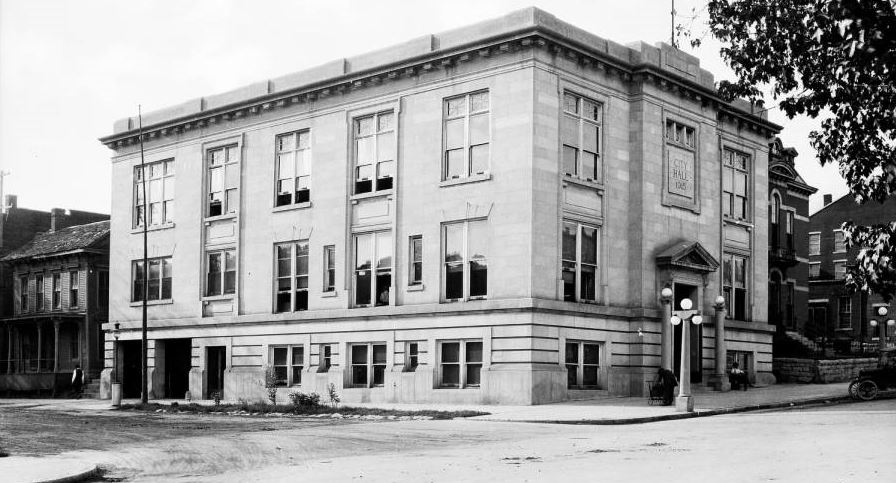 The construction of the new city hall building is complete and the city officers are expected to move into the building within the week. Image courtesy of Indiana Historical Society. The construction of the new city hall building is complete and the city officers are expected to move into the building within the week. Image courtesy of Indiana Historical Society.
Source: William Coulter, "City Hall, 122 S. Walnut St., Bloomington, Monroe County, Indiana," State Historic Architectural and Archaeological Research Database (SHAARD), February 3, 2015, 20. more...
|
| Hoadley and Sons mill fire 1916, Jan 21 |
The Hoadley and Sons limestone mill in Stinesville burns down. The fire is claimed to have been started by tramps, "as it is known several were in town." The mill employed 50 men. It doe snot reopen in Stinesville, instead moving to Bloomington.
Source: Rose McIlveen, "hoadley mill fire hit Stinesville hard," Hearld-Telephone, July 27, 1985.
|
| Hoadley mill moves to Bloomington 1916, Jan 22 |
John Jr. Hoadley, the Hoadley and Sons limestone mill owner, announces he will not rebuild in Stinesville after the mill burns down. He cites the lack of a fire fighting facilities and his wife's aversion to the town as to the reason why.
Source: Rose McIlveen, "The Aftermath of the Hoadley mill fire," Hearld-Telephone, August 3, 1989.
|
| City hall problems found 1916, Mar 8 |
According to the "Evening World", city hall architect J. L. Nichols reports that the general contractor George Weaver did not use plate glass in accordance with specifications. Nichols suggests that the council make deductions or require Weaver to put in the plate glass.
Source: William Coulter, "City Hall, 122 S. Walnut St., Bloomington, Monroe County, Indiana," State Historic Architectural and Archaeological Research Database (SHAARD), February 3, 2015, 20.
|
| Masonic Temple location purchased 1916, Apr 14 |
The Monroe Lodge No. 22, Free and Accepted Masons purchase property at the corner of College Avenue and Seventh Street, owned by the Ousler's. The amount paid for the property is $9,200 cash. This property contains two lots, one of which has a small brick residence that was used as a seminary before the Civil War, will be torn down. The Temple is to cost around $40,000, two stories made of stone. The previous property bought for the building of this temple at Walnut and Eighth Streets is to be sold. The architects chosen for the Temple are Rubush & Hunter of Indianapolis.
Source: Bill Coulter, "Masonic Temple, 120 W. Seventh St., Bloomington, Monroe County, Indiana," State Historic Architectural and Archaeological Research Database (SHAARD), February 7, 2015, 4.
|
| Schuman Duplex architect announced 1916, Jun 3 |
According to "American Contractor," the architect for the new Schuman apartment houses of limestone at 622-4 East Eighth Street and 315-7 North Fess Avenue is E. C. Doeppers & Company. The owner of the property is John F. Schuman. He plans to build the apartments with stone veneer and frames.
Source: Bill Coulter, "Schuman Duplexes, 622-4 E Eighth & 315-7 N. Fess, Bloomington, Monroe County, Indiana," State Historic Architectural and Archaeological Research Database (SHAARD), January 24, 2015, 1.
|
| Stone City Cut Stone Company sold 1916, Nov 15 |
Stone City Cut Stone Company is sold and abandoned.
Source: Batchelor, Joseph A. An Economic History of the Indiana Oolitic Limestone Industry. Bloomington: school of business, Indiana University, 1944.
|
| Fire destroys Kirkwood Avenue Christian Church 1916, Dec 31 |
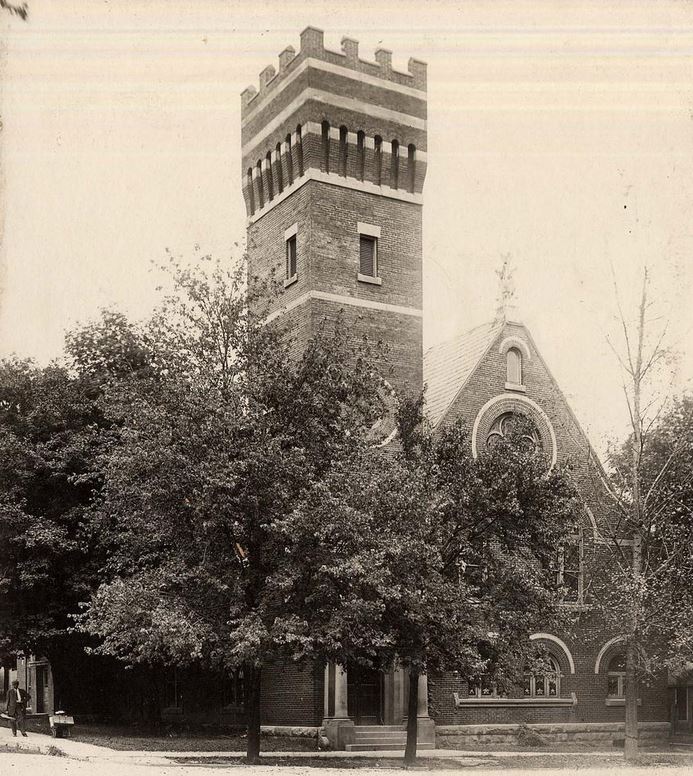 The Kirkwood Avenue Christian Church at the corner of Washington Street and Kirkwood Avenue is destroyed by a fire of unknown origin beginning on New Year's Eve. The church has been there since 1884. The Kirkwood Avenue Christian Church at the corner of Washington Street and Kirkwood Avenue is destroyed by a fire of unknown origin beginning on New Year's Eve. The church has been there since 1884.
Source: Bill Coulter, "First Christian Church, 205 East Kirkwood Avenue, Bloomington, Monroe County, Indiana," State Historic Architectural and Archaeological Research Database (SHAARD), February 3, 2015, 1. more...
|
| New Grading System Adopted 1917 |
A new scientific grading system is adopted for characterizing Indiana Limestone.
Source: Shewmaker, Sherman N. Quarry Quest. A Field Trip Guide to the Indiana Limestone District, Monroe and Lawrence Counties, Indiana, 1991.
|
| Church board meets after fire 1917, Jan 1 |
After a fire destroys the Kirkwood Avenue Christian Church at the corner of Washington Street and Kirkwood Avenue, the church board meets at Reverend W. H. Smith's residence and votes unanimously to begin the building of a new church immediately. They decide to build the new church for $60,000. The board was led by Chairman H. A. Lee. A committee made up of Reverend Smith, Professor W. H. Beeler, L. D. Rogers, and J. H. Radcliffe is put in place to arrange a meeting place for the congregation until the new church is built.
Source: Bill Coulter, "First Christian Church, 205 East Kirkwood Avenue, Bloomington, Monroe County, Indiana," State Historic Architectural and Archaeological Research Database (SHAARD), February 3, 2015, 2-3.
|
| Kirkwood Ave. Church committee announced 1917, Jan 8 |
The Kirkwood Avenue Christian Church board announces the members of the finance committee. They are: Professor W. H. Beeler, Samuel Pfrimmer, Elmer Bender, John T. Foster, George Bollenbacher, Sr., and Dr. John P. Tourner.
Source: Bill Coulter, "First Christian Church, 205 East Kirkwood Avenue, Bloomington, Monroe County, Indiana," State Historic Architectural and Archaeological Research Database (SHAARD), February 3, 2015, 3-4.
|
| 200 Courthouses are built to date 1917, Mar |
An advertisement by the Indiana Quarries Company boasts that two hundred or more courthouses have been built of Indiana Oolitic stone.
Source: Batchelor, Joseph A. An Economic History of the Indiana Oolitic Limestone Industry. Bloomington: school of business, Indiana University, 1944.
|
| Kirkwood Ave. Church contracts awarded 1917, Jun 15 |
The Kirkwood Avenue Christian Church board awards the contract to build the new church to Ainsworth Company of Terre Haute for $73,475. Their original bid was $81,500. The other bids were Thomas C. Gage of Chicago for $118,000, Colderhard & Company of Chicago for $96,000, McKee & Company of Springfield for $87,560, and the Severn Company of Chicago for $87,300. The J. Hoadley Sons Stone Company will finish the stone.
Source: Bill Coulter, "First Christian Church, 205 East Kirkwood Avenue, Bloomington, Monroe County, Indiana," State Historic Architectural and Archaeological Research Database (SHAARD), February 3, 2015, 4-5.
|
| Quarry accident kills Robinson 1917, Aug 6 |
James Robinson, 46, is fatally mangled when crushed under a 18,000 lb piece of falling stone.
Source: Coroner's Inquest; Bloomington Daily Telephone 7 August, 1917 p 2 col 7
|
| Limestone Production Statistics 1918 |
Proportion of Indiana limestone produced in Lawrence County are published: rough stone: 73%; Dressed (cut / sawed): 90%.
Source: Shewmaker, Sherman N. Quarry Quest. A Field Trip Guide to the Indiana Limestone District, Monroe and Lawrence Counties, Indiana, 1991.
|
| Railway completed 1918, Jan 1 |
Circa. Illinois Central from Effingham to Indianapolis is completed through Bloomington.
Source: Shewmaker, Sherman N. Quarry Quest. A Field Trip Guide to the Indiana Limestone District, Monroe and Lawrence Counties, Indiana, 1991.
|
| Indiana Limestone seeks help 1918, Mar 7 |
Representatives from the Indiana Limestone Quarrymen's Association, the Bedford Stone Club, and the Bedford Chamber of Commerce appear before an Indiana Congressional delegation in Washington to seek assistance for the Indiana stone industry.
Source: Batchelor, Joseph A. An Economic History of the Indiana Oolitic Limestone Industry. Bloomington: school of business, Indiana University, 1944.
|
| 29 Quarries 1919 |
The number of quarries in the Indiana limestone district is 29.
Source: Batchelor, Joseph A. An Economic History of the Indiana Oolitic Limestone Industry. Bloomington: school of business, Indiana University, 1944.
|
| Church auditorium opens for funeral 1919, Mar 15 |
The "Daily Telephone" announces that the auditorium of the new First Christian Church at 205 East Kirkwood Avenue will be opened for the first time for the funeral of Reverend and Professor Amzi Atwater. The construction of the church is not finished, but the auditorium will be opened temporarily.
Source: Bill Coulter, "First Christian Church, 205 East Kirkwood Avenue, Bloomington, Monroe County, Indiana," State Historic Architectural and Archaeological Research Database (SHAARD), February 3, 2015, 7.
|
| First Christian dedicates church 1919, Sep 28 |
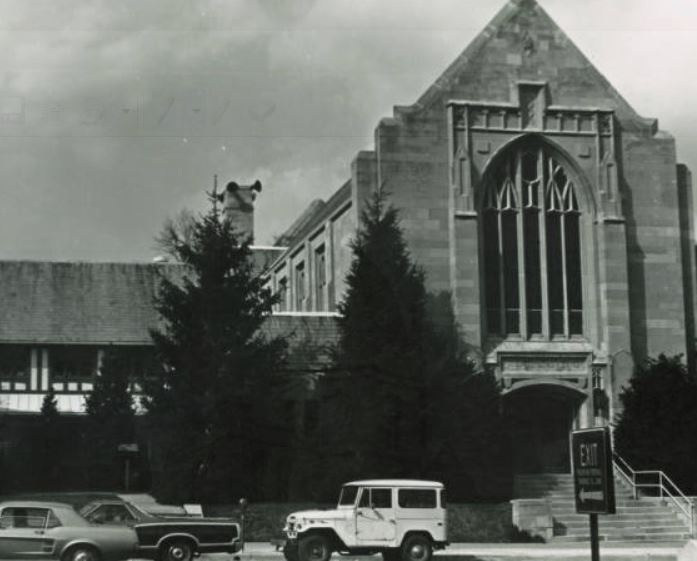 First Christian Church dedicates its new $100,000 building on Kirkwood and Washington Street in Bloomington. Services will be lead by Reverend George Shively. There will be special music and a picnic dinner in the gymnasium of the church. First Christian Church dedicates its new $100,000 building on Kirkwood and Washington Street in Bloomington. Services will be lead by Reverend George Shively. There will be special music and a picnic dinner in the gymnasium of the church.
Source: Virginia Barnard, "First Christian Church With Its Compact Organization 'Looks Ahead' Into Future," Bloomington Telephone, February 26, 1938. more...
|
| Church cancels debts 1919, Sep 29 |
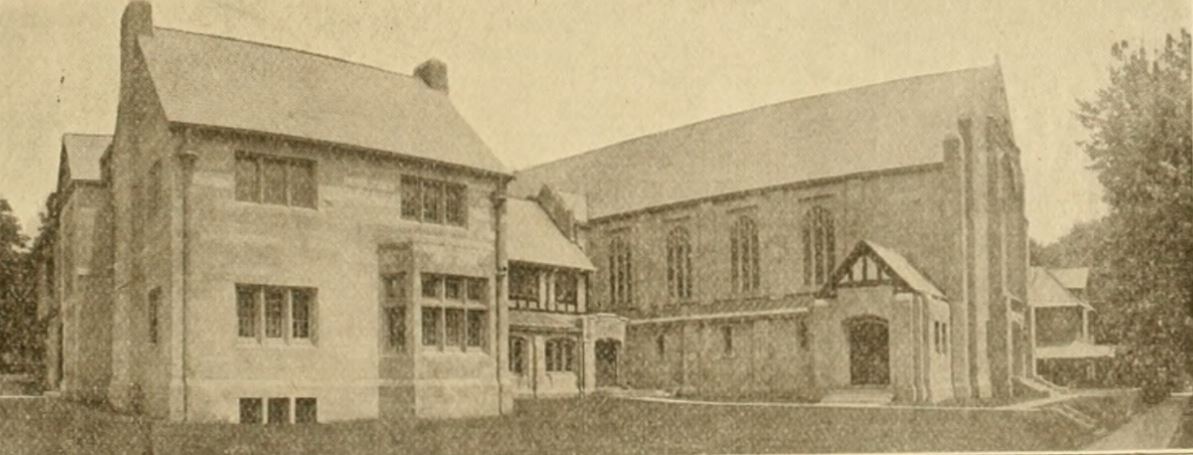 The First Christian Church raises over $49,000 towards paying off their $48,600 debt owed after the construction of the new church building at 205 East Kirkwood Avenue. The First Christian Church raises over $49,000 towards paying off their $48,600 debt owed after the construction of the new church building at 205 East Kirkwood Avenue.
Source: Bill Coulter, "First Christian Church, 205 East Kirkwood Avenue, Bloomington, Monroe County, Indiana," State Historic Architectural and Archaeological Research Database (SHAARD), February 3, 2015, 8. more...
|
| Quarry accident kills Vaught 1919, Nov 23 |
John Vaught, 23, suffers a fatal skull fracture when his head is crushed between a rock pile and a falling derrick boom.
Source: Rice, Claude F., and Marilyn McCoy. Monroe County, Indiana, Coroners Inquest: 1888-1973. Bloomington, IN: Monroe County Historical Society, 2001.
|
| D.C. Hospital For Soldiers Built 1920 |
U.S. Soldiers Home Hospital is built in Washington, D.C. by the Matthews Brothers.
Source: The Ellettsville Journal. Ellettsville, Ind.: Cooperative Pub. Co, 1939.; Section II, Mathews Brothers Centennial Edition, Wednesday, 26 December, 1962.
|
| Limestone Industry Statistics 1920 |
Indiana limestone accounts for slightly over 80% of total limestone sales for building construction in U.S.
Source: McDonald, Bill. A Short History of Indiana Limestone. Bedford, Ind.: Lawrence County Tourism Commission, 1995.
|
| Minnesota High School Built 1920 |
High School Building is built in Hibbing, Minnesota by the Matthew Brothers Stone Company.
Source: The Ellettsville Journal. Ellettsville, Ind.: Cooperative Pub. Co, 1939.; Section II, Mathews Brothers Centennial Edition, Wednesday, 26 December, 1962.
|
| Varsity Pharmacy built 1920 |
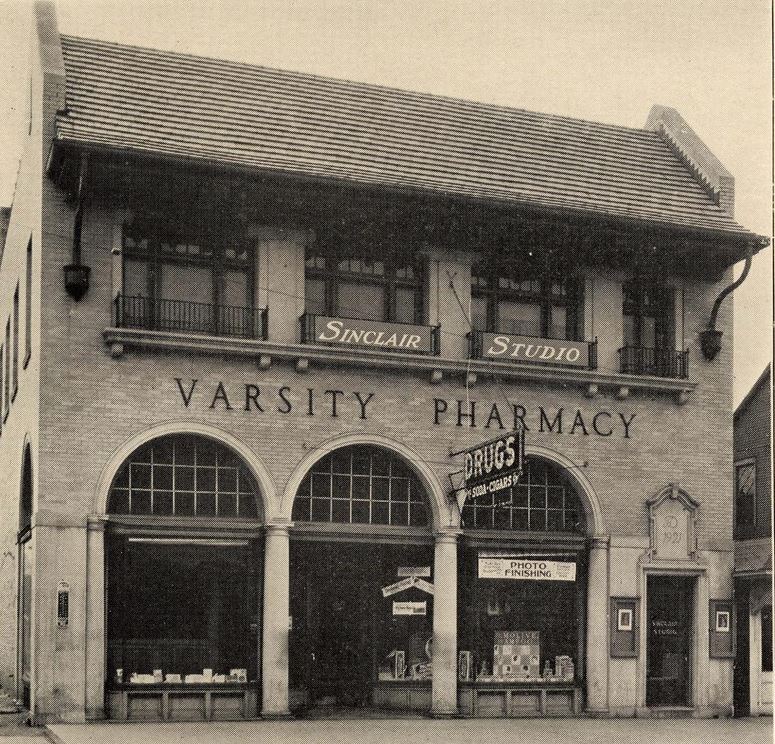 The designing of the Varsity Pharmacy at 110 S. Indiana Ave. (brick with limestone facade) is led under the direction of Lowe & Bollenbacher Architectural firm. The designing of the Varsity Pharmacy at 110 S. Indiana Ave. (brick with limestone facade) is led under the direction of Lowe & Bollenbacher Architectural firm.
Source: Bill Coulter, "Lowe & Bollenbacher," State Historic Architectural and Archaeological Research Database (SHAARD), February 3, 2015, 2. more...
|
| Stone Cutter Strike Begins 1920, Mar |
Strike of stone cutters lasted almost two months. Other classes, being organized, held sympathy strike. Settled with small raise.
Source: Wylie, David Gray. 'The Limestone Industry of Indiana,' unpublished masters thesis, Indiana University, 1923, p. 61.
|
| New Jersey State Office Built 1921 |
State office building is built in Trenton, New Jersey.
Source: The Ellettsville Journal. Ellettsville, Ind.: Cooperative Pub. Co, 1939.; Section II, Mathews Brothers Centennial Edition, Wednesday, 26 December, 1962.
|
| Mason announce plans for Temple 1921, Dec 30 |
At an annual banquet for the Monroe Lodge Number 22, plans for the building of a new Masonic Temple at the corner of College Avenue and Seventh Street are announced. The Temple is now estimated to cost around $200,000 (formerly announced as $40,000) and will be made of stone. The architects for this temple are Rubush & Hunter, Indianapolis.
Source: Bill Coulter, "Masonic Temple, 120 W. Seventh St., Bloomington, Monroe County, Indiana," State Historic Architectural and Archaeological Research Database (SHAARD), February 7, 2015, 4-5.
|
| Bethel AME Church built 1922 |
The building of the Bethel African Methodist Episcopal (AME) Church of limestone at 203 North Rogers Street is led under the direction of Bloomington architect John Lincoln Nichols.
Source: Bill Coulter, "J. L. Nichols," State Historic Architectural and Archaeological Research Database (SHAARD), February 2, 1922, 1.
|
| Graf, Szatkowski, et al spark art trade 1922 |
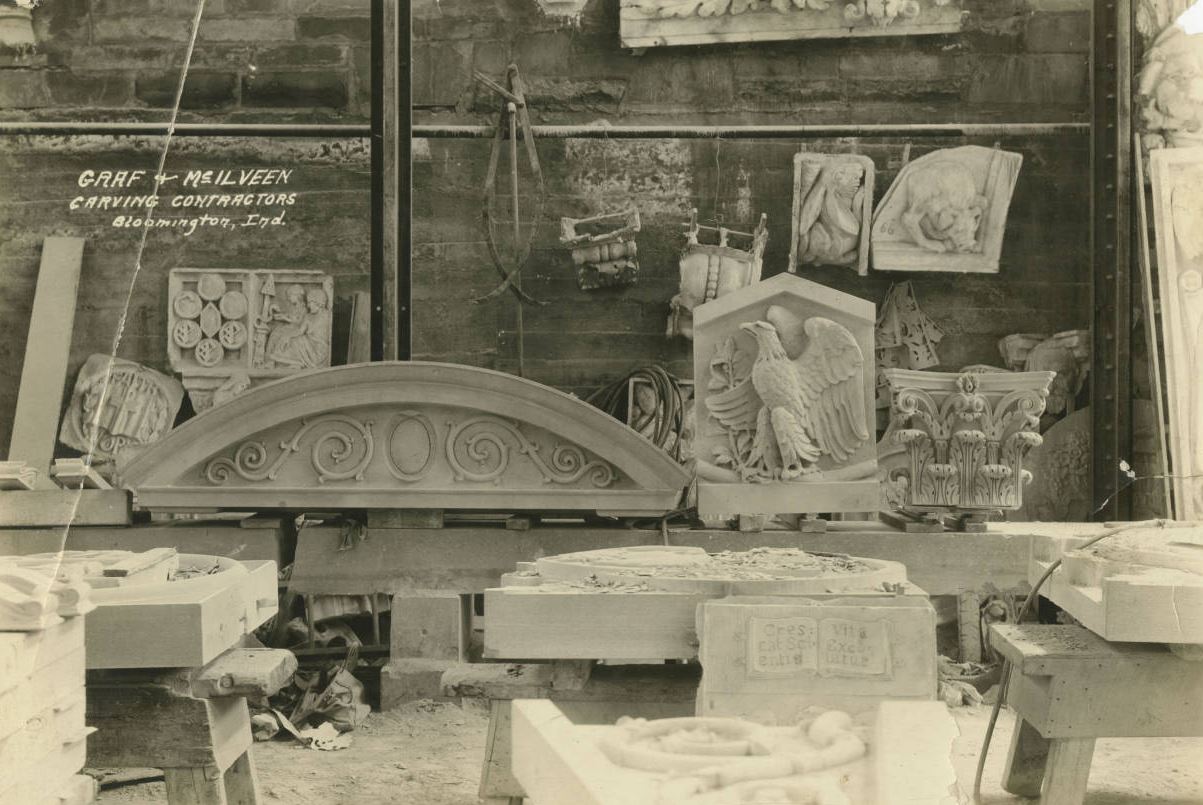 Josef Graf, master limestone carver from Stuttgart, Germany, comes to live at the Szatkowski boarding house, located at 411 N. College Ave. Graf is determined to open up the "stone belt" to the carving trade and begins his search for men to train. Here he meets Winfred "Doc" Szatkowski, who quits high school and joins Graf. Szkatwoski, with Graf and Albert McIlveen, carve the Alexander Memorial on the courthouse square as well as many buildings in the region and on the IU campus. Josef Graf, master limestone carver from Stuttgart, Germany, comes to live at the Szatkowski boarding house, located at 411 N. College Ave. Graf is determined to open up the "stone belt" to the carving trade and begins his search for men to train. Here he meets Winfred "Doc" Szatkowski, who quits high school and joins Graf. Szkatwoski, with Graf and Albert McIlveen, carve the Alexander Memorial on the courthouse square as well as many buildings in the region and on the IU campus.
|
| North Carolina Auditorium is Built 1922 |
Memorial Auditorium is built in Winston-Salem, North Carolina by the Matthews Brothers Stone Company.
Source: The Ellettsville Journal. Ellettsville, Ind.: Cooperative Pub. Co, 1939.; Section II, Mathews Brothers Centennial Edition, Wednesday, 26 December, 1962.
|
| Decade of Limestone Dominance Begins 1922 |
A decade of dominance of Indiana Limestone (over 85% of all dimension limestone produced in the U. S. produced in the Indiana limestone district) through 1932.
Source: Shewmaker, Sherman N. Quarry Quest. A Field Trip Guide to the Indiana Limestone District, Monroe and Lawrence Counties, Indiana, 1991.
|
| 36 Quarries 1923 |
Number of quarries in the Indiana Limestone district is 36.
Source: Batchelor, Joseph A. An Economic History of the Indiana Oolitic Limestone Industry. Bloomington: school of business, Indiana University, 1944.
|
| Elks Headquarters Built 1923 |
Elks National Memorial Headquarters Building is built in Chicago, Illinois by the Matthews Brothers Stone Company.
Source: The Ellettsville Journal. Ellettsville, Ind.: Cooperative Pub. Co, 1939.; Section II, Mathews Brothers Centennial Edition, Wednesday, 26 December, 1962.
|
| Philadelphia Inquirer Building Built 1923 |
Philadelphia Inquirer Company building is built in Philadelphia, Pennsylvania.
Source: The Ellettsville Journal. Ellettsville, Ind.: Cooperative Pub. Co, 1939.; Section II, Mathews Brothers Centennial Edition, Wednesday, 26 December, 1962.
|
| Quarry accident kills Elkins 1923, Jul 22 |
Rebecca Elkins, 17, employed by the B.G. Hoadley Stone Company, dies in accident at Adams Quarry.
Source: The Herald-Times. Bloomington, Ind.: Herald-Times, Inc, 1989.
|
| Quarry accident kills Cordell 1923, Dec 15 |
Edward Cordell, 48, dies in quarry accident.
Source: Rice, Claude F., and Marilyn McCoy. Monroe County, Indiana, Coroners Inquest: 1888-1973. Bloomington, IN: Monroe County Historical Society, 2001.
|
| Ivan Adams begins career 1924 |
Carver Ivan L. Adams begins working in the limestone industry at the height of the stone artisan trades within the region. He would eventually work on the carvings and columns for the Fine Arts Building in Chicago, the National Shrine of the Immaculate Conception in D.C., and statues for Catholic churches.
Source: "Well-Known Stone Carver Dead at 63," Daily Herald Telephone, June 19, 1968.
|
| Kappa Kappa Gamma built 1924 |
The designing of the Indiana University Kappa Kappa Gamma Sorority brick house with limestone trim at 1018 E. Third Street is led under the direction of Lowe & Bollenbacher Architectural firm.
Source: Bill Coulter, "Lowe & Bollenbacher," State Historic Architectural and Archaeological Research Database (SHAARD), February 3, 2015, 2.
|
| IU Memorial Hall built 1924 |
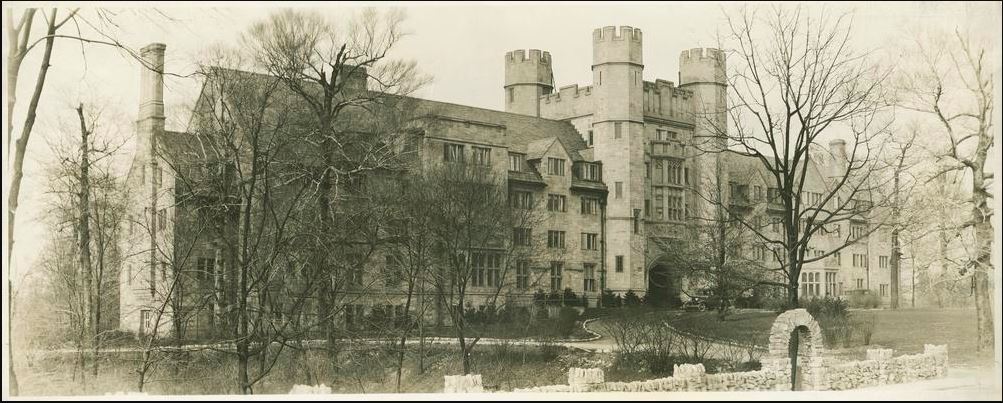 The designing of the Indiana University Memorial Hall at 1021 E. Third Street is led under the direction of Lowe & Bollenbacher Architectural firm. Memorial Hall becomes a Women's Dormitory. The designing of the Indiana University Memorial Hall at 1021 E. Third Street is led under the direction of Lowe & Bollenbacher Architectural firm. Memorial Hall becomes a Women's Dormitory.
Source: Bill Coulter, "Lowe & Bollenbacher," State Historic Architectural and Archaeological Research Database (SHAARD), February 3, 2015, 2. more...
|
| Bowman Duplexes built 1924 |
The limestone building of the Bowman Duplexes at 718-720 East Eighth Street is led under the direction of Bloomington architect John Lincoln Nichols, his firm called J. L. Nichols, Architect.
Source: Bill Coulter, "J. L. Nichols," State Historic Architectural and Archaeological Research Database (SHAARD), February 2, 2015, 3.
|
| Masonic Temple bids taken 1924, Apr 7 |
The Monroe Lodge receives seven Monroe County Contractor bids for stone for the construction of the new Masonic Temple. The lowest general contract bid is from Leslie Colvin of Indianapolis at $120,000. The Evans Electric Company submits the lowest electrical contract at $2,594. The stone will be purchased from Bowman & King for $46,446. The plumbing, heating, and ventilation will be purchased from the Fletcher Plumbing Company for $22,500. The building is scheduled to be completed January 1, 1925.
Source: Bill Coulter, "Masonic Temple, 120 W. Seventh St., Bloomington, Monroe County, Indiana," State Historic Architectural and Archaeological Research Database (SHAARD), February 7, 2015, 8-9.
|
| Walker Bros. files incorporation papers 1924, Aug 1 |
The Walker Brothers Stone Company, capitalized at one million, files incorporation papers with the Secretary of State.
Source: Bennett P. Reed, "Sands Of Time," Daily Herald Telephone, August 1, 1964.
|
| Stone company rejects bids 1924, Aug 4 |
At the receiver's sale of the local American Oolitic Stone Company, with only two bidders present, both bids are under the appraised $75,000 and are rejected.
Source: Bennett P. Reed, "Sands Of Time," Daily Herald Telephone, August 4, 1964.
|
| Building Completed in Texas 1925 |
Post-Dispatch Building built in Houston, Texas by the Matthew Brothers Stone Company.
Source: The Ellettsville Journal. Ellettsville, Ind.: Cooperative Pub. Co, 1939.; Section II, Mathews Brothers Centennial Edition, Wednesday, 26 December, 1962.
|
| Princeton University Chapel Built 1925 |
Princeton University Chapel is built in Princeton, New Jersey by the Matthews Brothers Stone Company.
Source: The Ellettsville Journal. Ellettsville, Ind.: Cooperative Pub. Co, 1939.; Section II, Mathews Brothers Centennial Edition, Wednesday, 26 December, 1962.
|
| Tribune Tower Built 1925 |
Tribune Tower is built in Chicago, Illinois by the Matthews Brothers Stone Company and by Hoadley.
Source: McDonald, Bill. A Short History of Indiana Limestone. Bedford, Ind.: Lawrence County Tourism Commission, 1995.
|
| Masons announce temple dedication 1925, May 22 |
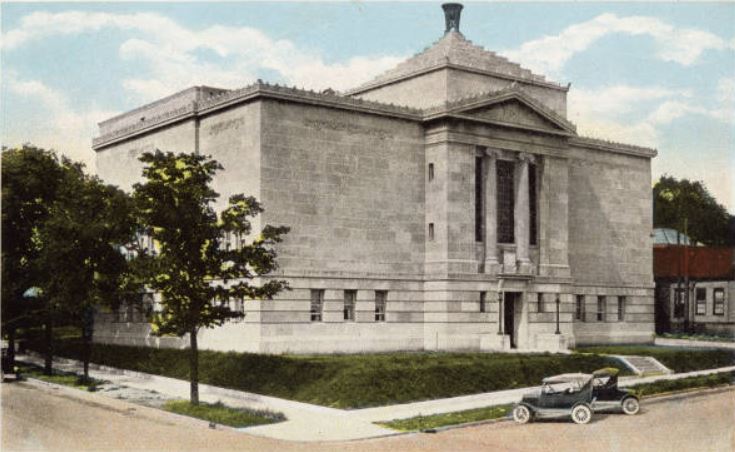 It is reported that there will be state-wide interest when the new $230,000 Masonic Temple will be formally dedicated on Thursday, May 28th. The day's events will begin with an open house to the general public in the morning and a ceremony for Masons only in the evening. It is reported that there will be state-wide interest when the new $230,000 Masonic Temple will be formally dedicated on Thursday, May 28th. The day's events will begin with an open house to the general public in the morning and a ceremony for Masons only in the evening.
Source: "Masons to dedicate new temple next week: Simple rites to open city's great edifice," The Bloomington Weekly Star, May 22, 1925. more...
|
| Temple dedication announced 1925, May 22 |
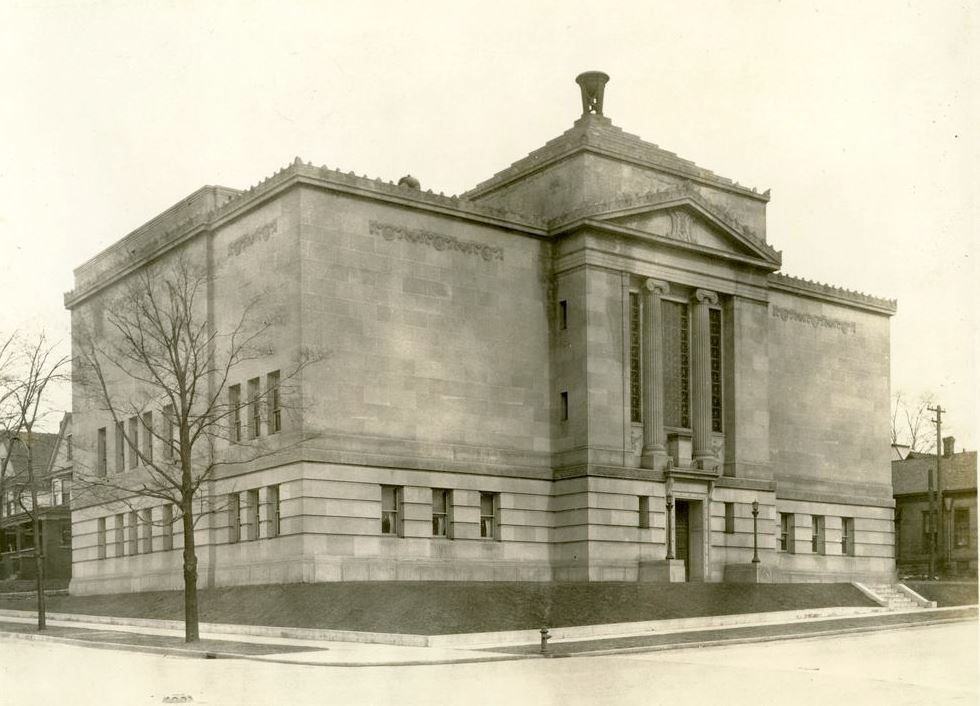 The "Bloomington Weekly Star" announces that the new $230,000 Masonic Temple will be dedicated on Thursday, May 28, 1925. The Temple will be open to the public at 10AM and held until 7PM. Starting at 7PM the lodge dedicatory functions will be held in the lodge rooms for members only. The "Bloomington Weekly Star" announces that the new $230,000 Masonic Temple will be dedicated on Thursday, May 28, 1925. The Temple will be open to the public at 10AM and held until 7PM. Starting at 7PM the lodge dedicatory functions will be held in the lodge rooms for members only.
Source: Bill Coulter, "Masonic Temple, 120 W. Seventh St., Bloomington, Monroe County, Indiana," State Historic Architectural and Archaeological Research Database (SHAARD), February 7, 2015, 10-11. more...
|
| Becovitz building architect announced 1925, Sep 12 |
The "Indiana Construction Recorder" announces the architects for the new Becovitz building (limestone facade on new brick) at 110 North Walnut Street are McGuire and Shook.
Source: Bill Coulter, "Becovitz Building," State Historic Architectural and Archaeological Research Database (SHAARD), February 2, 2015, 4.
|
| Quarry accident kills Miller 1925, Oct 25 |
Cledeth Miller, 32, is killed in quarry accident.
Source: Rice, Claude F., and Marilyn McCoy. Monroe County, Indiana, Coroners Inquest: 1888-1973. Bloomington, IN: Monroe County Historical Society, 2001.
|
| 45 Quarries 1926 |
The number of quarries in the Indiana limestone district is 45.
Source: Batchelor, Joseph A. An Economic History of the Indiana Oolitic Limestone Industry. Bloomington: school of business, Indiana University, 1944.
|
| McDoel Baptist Church completed 1926 |
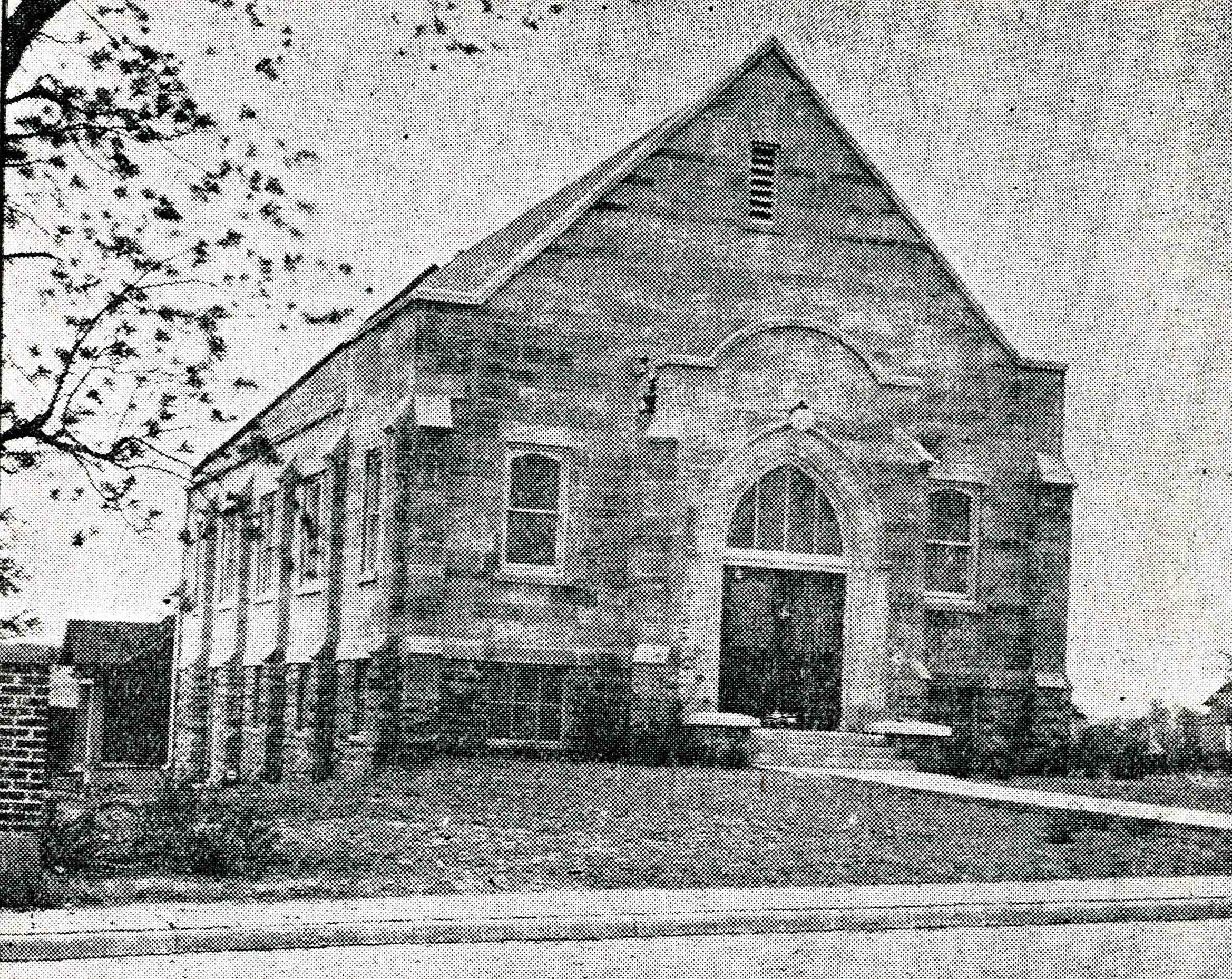 Five years after residents of the neighborhood which houses workers of the Showers Brothers Company Plant No. 4 started planning its building, the construction is completed for the McDoel Baptist Church, located at 1008 S. Rogers. The church is estimated to have 100 members under the leadership of Rev. R. C. Speer. Five years after residents of the neighborhood which houses workers of the Showers Brothers Company Plant No. 4 started planning its building, the construction is completed for the McDoel Baptist Church, located at 1008 S. Rogers. The church is estimated to have 100 members under the leadership of Rev. R. C. Speer.
Source: "New McDoel Baptist Church is Completed," Shop Notes, May 29, 1926, 12. more...
|
| 24 limestone companies merge 1926, May 21 |
Beginning of major consolidation of companies in the Indiana limestone district with the organization of the Indiana Limestone Company merging of 24 companies.
Source: Shewmaker, Sherman N. Quarry Quest. A Field Trip Guide to the Indiana Limestone District, Monroe and Lawrence Counties, Indiana, 1991.
|
| Becovitz building dedicated 1926, Oct 15 |
The "Bloomington Weekly Star" announces the Ben Becovitz building at 110 North Walnut Street was officially dedicated this week. The building cost $70,000; the first floor holds the Louben store (owned by Ben Becovitz) and the first floor holds the Bloomington headquarters of the Indiana Limestone company offices, director's room, and draftsman's studio.
Source: Bill Coulter, "Becovitz Building, 110 N. Walnut St., Bloomington, Monroe County, Indiana," State Historic Architectural and Archaeological Research Database (SHAARD), February 2, 2015, 4-5.
|
| Quarry accident kills Berry 1926, Nov 30 |
Casey S. Berry, 18, dies in quarry accident.
Source: Rice, Claude F., and Marilyn McCoy. Monroe County, Indiana, Coroners Inquest: 1888-1973. Bloomington, IN: Monroe County Historical Society, 2001.
|
| Cathedral Built in Indianapolis 1927 |
Scottish Rite Cathedral is built in Indianapolis, Indiana by the Matthews Brothers Stone Company.
Source: The Ellettsville Journal. Ellettsville, Ind.: Cooperative Pub. Co, 1939.; Section II, Mathews Brothers Centennial Edition, Wednesday, 26 December, 1962.
|
| Pittsburgh Chapel Built 1927 |
Heinz Memorial Chapel is built in Pittsburgh, Pennsylvania.
Source: The Ellettsville Journal. Ellettsville, Ind.: Cooperative Pub. Co, 1939.; Section II, Mathews Brothers Centennial Edition, Wednesday, 26 December, 1962.
|
| Church finance board meets 1927, Jan 9 |
The Kirkwood Avenue Christian Church finance board meets to discuss plans to raise the necessary $60,000 to rebuild the church. They also announce that the insurance received for the old church building is $8,500.
Source: Bill Coulter, "First Christian Church, 205 East Kirkwood Avenue, Bloomington, Monroe County, Indiana," State Historic Architectural and Archaeological Research Database (SHAARD), February 3, 2015, 4.
|
| Quarry accident kills Zikes 1927, Jan 21 |
Pink Zikes, 64, dies after falling from a ledge into a quarry hole full of water.
Source: Rice, Claude F., and Marilyn McCoy. Monroe County, Indiana, Coroners Inquest: 1888-1973. Bloomington, IN: Monroe County Historical Society, 2001.
|
| Multi-company merger 1927, Mar 1 |
Chicago and Bloomington Stone Company, the Maple Hills Quarries Company, and the Hoadley-Cline Cut Stone Company merge with the Bloomington Limestone Company.
Source: Batchelor, Joseph A. An Economic History of the Indiana Oolitic Limestone Industry. Bloomington: school of business, Indiana University, 1944.
|
| Eagle Store plans made 1927, Mar 19 |
The "Bloomington Evening World" announces that the Eagle Store at 107 North College Avenue will be remodeling shortly in July. The brick store is set to have a new limestone front to replace the current brick facade. The entrance will also be set back 15 feet to allow a larger amount of window space. The architect for this project is John Nichols. The remodel was not actually built until 1929.
Source: Bill Coulter, "The Eagle Clothing Co., 107 N. College Ave., Bloomington, Monroe County, Indiana," State Historic Architectural and Archaeological Research Database (SHAARD), December 7, 2014, 1-2, 4.
|
| Quarry accident kills Hawkins 1927, Mar 21 |
Perry Hawkins, 23, dies from shock and hemorrhage after falling from a ledge and having his arm nearly severed by a rock that landed on his right shoulder.
Source: Rice, Claude F., and Marilyn McCoy. Monroe County, Indiana, Coroners Inquest: 1888-1973. Bloomington, IN: Monroe County Historical Society, 2001.
|
| Quarry accident kills Miller 1927, Nov 7 |
Elmer Miller, 31, dies in a quarry accident.
Source: Rice, Claude F., and Marilyn McCoy. Monroe County, Indiana, Coroners Inquest: 1888-1973. Bloomington, IN: Monroe County Historical Society, 2001.
|
| Number of quarries reported 1928 |
Number of quarries in the Indiana limestone district is 33.
Source: Batchelor, Joseph A. An Economic History of the Indiana Oolitic Limestone Industry. Bloomington: school of business, Indiana University, 1944.
|
| Association Established 1928 |
Indiana Cut Stone Association is established.
Source: Batchelor, Joseph A. An Economic History of the Indiana Oolitic Limestone Industry. Bloomington: school of business, Indiana University, 1944.
|
| Limestone organization is established 1928 |
Indiana Limestone Institute is organized.
Source: Batchelor, Joseph A. An Economic History of the Indiana Oolitic Limestone Industry. Bloomington: school of business, Indiana University, 1944.
|
| Peak Production 1928 |
Year of peak production of Indiana Limestone is now 14.5 million cu ft.
Source: Shewmaker, Sherman N. Quarry Quest. A Field Trip Guide to the Indiana Limestone District, Monroe and Lawrence Counties, Indiana, 1991.
|
| Von Graham Residence built 1928, Feb 10 |
An advertisement for the "Bloomington Weekly Star" cites general contractor Charles A. Pike as the builder of the Von Graham Residence at 727 South Jordan Avenue.
Source: Bill Coulter, "Charles A. Pike," State Historic Architectural and Archaeological Research Database (SHAARD), October 1, 2010, 1. more...
|
| Pike Residence built 1928, Feb 10 |
An advertisement for the "Bloomington Weekly Star" cites general contractor Charles A. Pike as the builder of the C. A. Pike Residence at 600 Ballentine Road.
Source: Bill Coulter, "Charles A. Pike," State Historic Architectural and Archaeological Research Database (SHAARD), October 1, 2010, 1.
|
| Shawnee buys Central Oolitic 1928, Mar 1 |
Shawnee Stone Company purchases the Central Oolitic Stone Company.
Source: Batchelor, Joseph A. An Economic History of the Indiana Oolitic Limestone Industry. Bloomington: school of business, Indiana University, 1944.
|
| Hare Motor Sales Co. designer announced 1928, Mar 30 |
An article of the "Bloomington Weekly Star" describes plans for the Hare Motor Sales Company building, identifying Edith Brehm as a designer for general contractor Charles A. Pike's plan services.
Source: Bill Coulter, "Charles A. Pike," State Historic Architectural and Archaeological Research Database (SHAARD), October 1, 2010, 2.
|
| Quarry accident kills Vought 1928, May 16 |
Albert Lee Vought, 37, is fatally crushed by a stone he was moving that split in two. He slipped between the two pieces causing his right hip and right leg to be crushed, the femur and tibia broken, as well as internal injuries.
Source: Rice, Claude F., and Marilyn McCoy. Monroe County, Indiana, Coroners Inquest: 1888-1973. Bloomington, IN: Monroe County Historical Society, 2001.
|
| Kappa Kappa Gamma built 1928, Jun 8 |
A "Bloomington Weekly Star" advertisement for general contractor Charles A. Pike cites Pike as the builder of the Indiana University Kappa Kappa Gamma house on East Third Street and cites the designers as Lowe & Bollenbacher.
Source: Bill Coulter, "Charles A. Pike," State Historic Architectural and Archaeological Research Database (SHAARD), October 1, 2010, 1.
|
| Becovitz Building built 1928, Jun 8 |
In a "Bloomington Weekly Star" advertisement for general contractor Charles A. Pike, the Ben Becovitz Building at 110 North Walnut is listed as being designed by McGuire & Shook and built by Pike. A "Bloomington Weekly Star" advertisement for Bloomington general contractor Charles A. Pike cites Pike as the builder of the Ben Becovitz Building at 110 North Walnut. It cites the designers as McGuire & Shook.
Source: Bill Coulter, "Charles A. Pike," State Historic Architectural and Archaeological Research Database (SHAARD), October 1, 2010, 1.
|
| Filtration Plant built 1928, Jun 8 |
A "Bloomington Weekly Star" advertisement for general contractor Charles A. Pike cites Pike as the builder for the City Waterworks Filtration Plant, located near Griffy Lake dam and cites Pearse, Greeley, & Hanson as the designers.
Source: Bill Coulter, "Charles A. Pike," State Historic Architectural and Archaeological Research Database (SHAARD), October 1, 2010, 1.
|
| Delta Upsilon built 1928, Jun 8 |
A "Bloomington Weekly Star" advertisement for general contractor Charles A. Pike cites Pike as the builder of Indiana University Delta Upsilon on East Third Street and cites Nicol, Scholer and Hoffman as the designers.
Source: Bill Coulter, "Charles A. Pike," State Historic Architectural and Archaeological Research Database (SHAARD), October 1, 2010, 1.
|
| First National Bank remodeled 1928, Jun 8 |
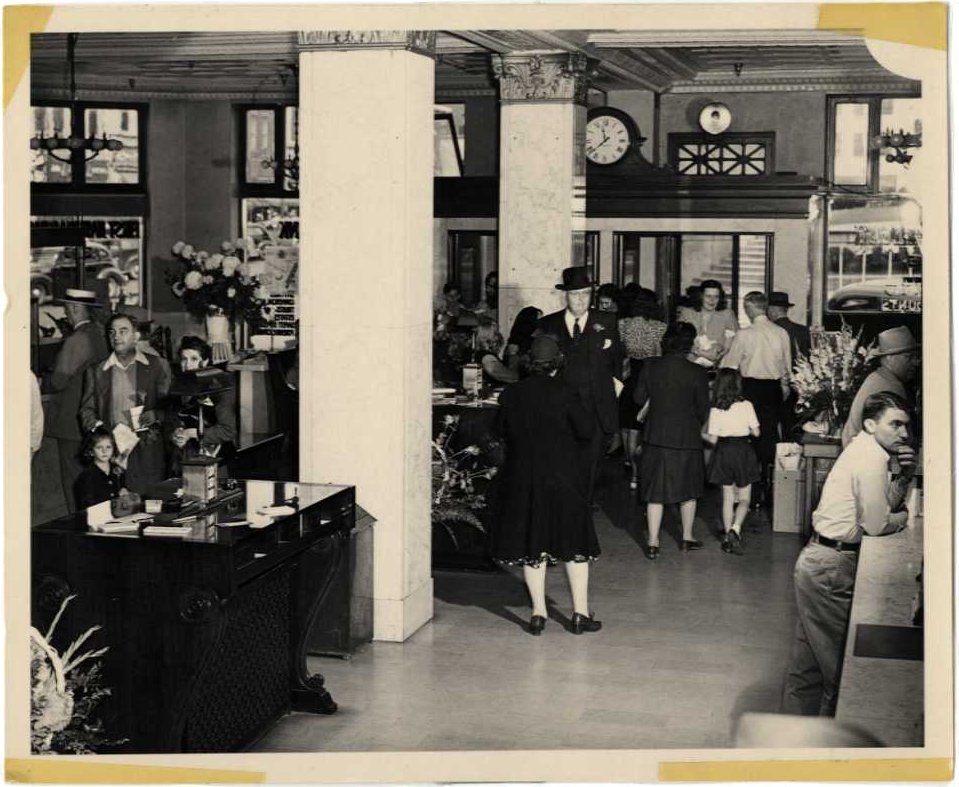 A "Bloomington Weekly Star" advertisement for general contractor Charles A. Pike cites Pike as the builder for the remodeling and addition to the First National Bank at the southeast corner of Fifth Street and College Avenue. A "Bloomington Weekly Star" advertisement for general contractor Charles A. Pike cites Pike as the builder for the remodeling and addition to the First National Bank at the southeast corner of Fifth Street and College Avenue.
Source: Bill Coulter, "Charles A. Pike," State Historic Architectural and Archaeological Research Database (SHAARD), October 1, 2010, 1.
|
| Beta Theta Pi 1928, Jun 8 |
A "Bloomington Weekly Star" advertisement for general contractor Charles A. Pike cites Pike as the general contractor for Beta Theta Pi (now IU Informatics East) at 919 East Tenth Street. (The architect is not known due to conflicting information.)
Source: Bill Coulter, "Charles A. Pike," State Historic Architectural and Archaeological Research Database (SHAARD), October 1, 2010, 1.
|
| IU Field House built 1928, Jun 8 |
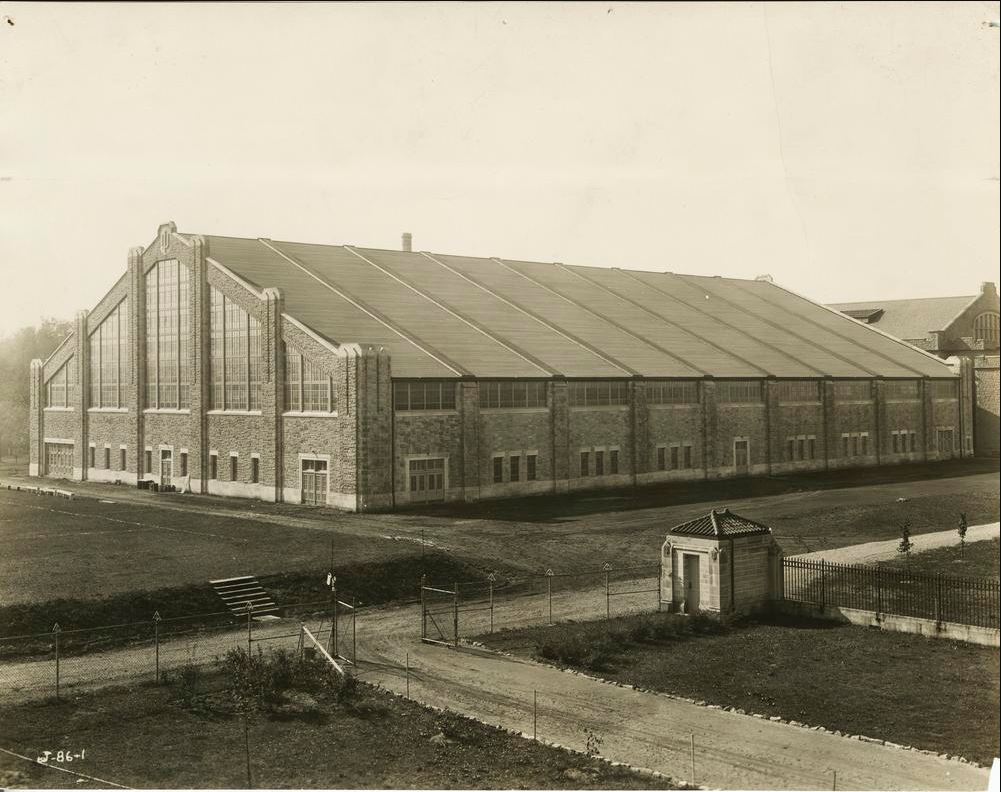 In a "Bloomington Weekly Star" advertisement for general contractor Charles A. Pike, the Indiana University Field House (now Wildermuth Intramural Center) is listed as built by Pike and designed by Robert Frost Daggett. In a "Bloomington Weekly Star" advertisement for general contractor Charles A. Pike, the Indiana University Field House (now Wildermuth Intramural Center) is listed as built by Pike and designed by Robert Frost Daggett.
Source: Bill Coulter, "Charles A. Pike," State Historic Architectural and Archaeological Research Database (SHAARD), October 1, 2010, 1. more...
|
| Wicks Company gets new facade 1928, Jun 8 |
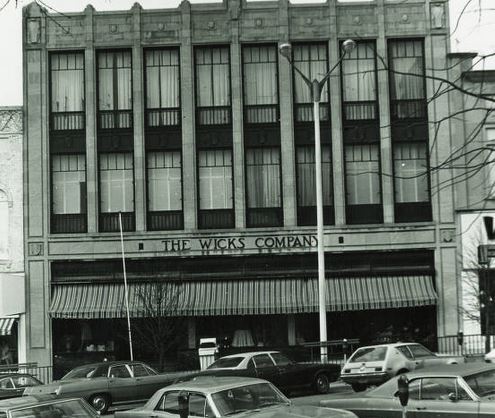 A "Bloomington Weekly Star" advertisement for general contractor Charles A. Pike lists the brick building of the new limestone facade for the Wicks Company at 120 West Sixth Street. The architects for this building are listed as McGuire & Shook. A "Bloomington Weekly Star" advertisement for general contractor Charles A. Pike lists the brick building of the new limestone facade for the Wicks Company at 120 West Sixth Street. The architects for this building are listed as McGuire & Shook.
Source: Bill Coulter, "Charles A. Pike," State Historic Architectural and Archaeological Research Database (SHAARD), October 1, 2010, 1. more...
|
| Cornerstone for soldiers monument laid 1928, Jun 9 |
Judge J.B. Wilson speaks at the cornerstone laying ceremony for the soldier monument on the courthouse lawn; this was due to Mayor Hetherington being absent.
Source: "Ceremonies Are Held For Monument Corner Stone," Telephone, June 9, 1928.
|
| Alexander Memorial dedicated 1928, Jun 29 |
"The Bloomington Weekly Star" announces the dedication of the Alexander Memorial on July 4th. It features a sculpture and carving by Graf and McIlveen, Architectural Sculptors and Carvers, of Bloomington, and Structural slate waterproofing and copper cornerstone box by Bloomington Radiator and Sheet Metal Works. The Fenneman Company is identified with the construction of the memorial and the stone was provided by the Bloomington Limestone Company. The monument was erected by Fifer Construction Company.
Source: "Dedication Monroe County War Memorial July 4th," Bloomington Star, June 29, 1928, 3.
|
| Alexander War Memorial finished 1928, Jul 13 |
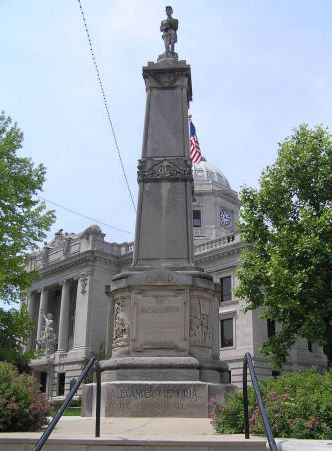 Contractor R. L. Fifer announces that the Alexander War Memorial at the court house is complete. The statue of a union soldier is placed on top of the shaft July 12, and Fifer plans to remove the wooden framework around the shaft today. He plans to have his equipment moved out by July 14. Contractor R. L. Fifer announces that the Alexander War Memorial at the court house is complete. The statue of a union soldier is placed on top of the shaft July 12, and Fifer plans to remove the wooden framework around the shaft today. He plans to have his equipment moved out by July 14.
Source: "Memorial Finished; Statue Is In Place," Bloomington Star, July 13, 1928, 1. more...
|
| Quarry accident kills Danner 1928, Aug 10 |
Malcolm Danner, 23, is killed in a quarry accident.
Source: Rice, Claude F., and Marilyn McCoy. Monroe County, Indiana, Coroners Inquest: 1888-1973. Bloomington, IN: Monroe County Historical Society, 2001.
|
| Quarry accident kills Johnson 1928, Nov 2 |
James W. Johnson, 58, is killed in a quarry accident.
Source: Rice, Claude F., and Marilyn McCoy. Monroe County, Indiana, Coroners Inquest: 1888-1973. Bloomington, IN: Monroe County Historical Society, 2001.
|
| Eagle Clothing Store rebuilt 1929 |
The rebuilding of a new facade on the Eagle Clothing Store at 107 North College Avenue is finished. Plans were drawn up in 1927 by Bloomington architect John Lincoln Nichols, who dies in May 1929.
Source: Bill Coulter, "J. L. Nichols," State Historic Architectural and Archaeological Research Database (SHAARD), February 2, 2015, 3.
|
| Bloomington architect dies 1929 |
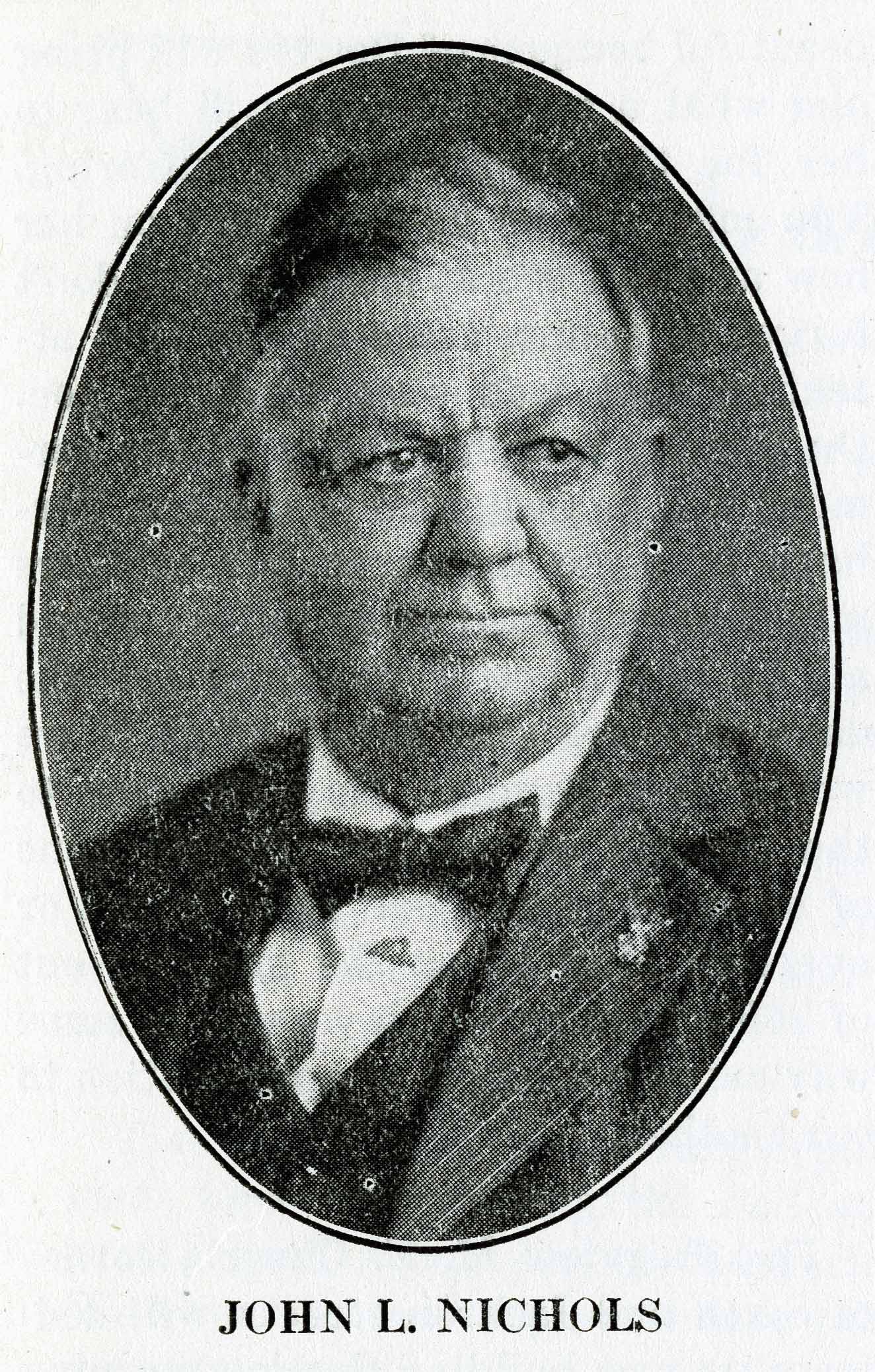 Prominent Bloomington architect John Lincoln Nichols, born 1858, dies at the age of 70. Many institutional, commercial, and residential Bloomington buildings are attributed to his work. Prominent Bloomington architect John Lincoln Nichols, born 1858, dies at the age of 70. Many institutional, commercial, and residential Bloomington buildings are attributed to his work.
Source: Bill Coulter, "J. L. Nichols," State Historic Architectural and Archaeological Research Database (SHAARD), February 2, 2015, 1. more...
|
| Quarry accident kills Miller 1929, May 22 |
Lester Miller, 49, is killed in a quarry accident.
Source: Rice, Claude F., and Marilyn McCoy. Monroe County, Indiana, Coroners Inquest: 1888-1973. Bloomington, IN: Monroe County Historical Society, 2001.
|
| Quarry accident kills Larkins 1929, Jun 5 |
William Larkins, 63, is killed in a quarry accident.
Source: Rice, Claude F., and Marilyn McCoy. Monroe County, Indiana, Coroners Inquest: 1888-1973. Bloomington, IN: Monroe County Historical Society, 2001.
|
| Indiana Oolitic is bought 1929, Aug 1 |
Bloomington Limestone Company purchases the Indiana Oolitic Limestone Company.
Source: Batchelor, Joseph A. An Economic History of the Indiana Oolitic Limestone Industry. Bloomington: school of business, Indiana University, 1944.
|
| Eagle Clothing Co. remodeling begins 1929, Sep 6 |
The remodeling of the Eagle Clothing Company building at 107 North College Avenue begins. The contractor for the original project in 1883 was Hiram Jackson Nichols, who died in 1910.
Source: Bill Coulter, "The Eagle Clothing Co., 107 N. College Ave., Bloomington, Monroe County, Indiana," State Historic Architectural and Archaeological Research Database (SHAARD), December 7, 2014, 1, 5.
|
| Eagle Store construction begins 1929, Sep 6 |
The remodeling of the Eagle Store at 107 North College Avenue front begins. The architect for this project is John L. Nichols. The entire store front is to be extended and built with stone, replacing the original brick.
Source: Bill Coulter, "The Eagle Clothing Co., 107 N. College Ave., Bloomington, Monroe County, Indiana," State Historic Architectural and Archaeological Research Database (SHAARD), December 7, 2014, 1-2, 5.
|
| Quarry accident kills Skinner 1929, Sep 10 |
Samuel Alva Skinner, 50, a machine runner at the B.G. Hoadley Quarries Co., is fatally crushed when some stones which were stacked above him and had been dislodged by recent rain slipped and fell on him.
Source: Rice, Claude F., and Marilyn McCoy. Monroe County, Indiana, Coroners Inquest: 1888-1973. Bloomington, IN: Monroe County Historical Society, 2001.
|
| Quarry accident kills Dewar 1929, Dec 10 |
James T Dewar, 21, dies when, falling from a roof in Hoadley Quarry. He grabbed at an electrical wire to catch himself and was electrocuted.
Source: Rice, Claude F., and Marilyn McCoy. Monroe County, Indiana, Coroners Inquest: 1888-1973. Bloomington, IN: Monroe County Historical Society, 2001.
|
| Pennsylvania Church Built 1930 |
Mellon Presbyterian Church is built in East Liberty, Pennsylvania by the Matthews Brothers Stone Company.
Source: The Ellettsville Journal. Ellettsville, Ind.: Cooperative Pub. Co, 1939.; Section II, Mathews Brothers Centennial Edition, Wednesday, 26 December, 1962.
|
| Limestone promotion Increases 1930 |
Promotion of split-face stone as veneer in residential construction begins in earnest by Bloomington Limestone Company which holds the 1923 patent on the shearing machine required to produce it.
Source: Shewmaker, Sherman N. Quarry Quest. A Field Trip Guide to the Indiana Limestone District, Monroe and Lawrence Counties, Indiana, 1991.
|
| Association Formed 1930 |
Building Stone Association of Indiana is formed.
Source: Batchelor, Joseph A. An Economic History of the Indiana Oolitic Limestone Industry. Bloomington: school of business, Indiana University, 1944.
|
| Bloomington Limestone opens quarry 1930, Mar 5 |
Bloomington Limestone Company opens new quarry on Kinser Pike.
Source: "Chronology of Events in 1930," Evening World, January 1, 1931.
|
| Quarry accident kills Neff 1930, Apr 3 |
Frank Neff, 36, is killed in a quarry accident.
Source: Rice, Claude F., and Marilyn McCoy. Monroe County, Indiana, Coroners Inquest: 1888-1973. Bloomington, IN: Monroe County Historical Society, 2001.
|
| Stone hooker killed 1930, Apr 3 |
Stone hooker Frank Neff is crushed to death under an 11-ton rock at the Crescent-Hunter Valley Quarry. It is being ruled an accident.
Source: "11-ton block falls on man, pins his body," Evening World, April 3, 1930, 1.
|
| Stone cutters escape injury 1930, Apr 7 |
Carl Jackson and Charles Hite, both stone cutters, escape serious injury after being pinned to a stone wall by falling rocks.
Source: "Chronology of Events in 1930," Evening World, January 1, 1931.
|
| Indiana Limestone receives huge order 1930, Apr 11 |
Indiana Limestone company receives a huge order for the construction of the West Virginia state capitol.
Source: "Chronology of Events in 1930," Evening World, January 1, 1931.
|
| Construction begins on mill 1930, May 23 |
Construction begins on the Henry A. Woolery and Son stone mill.
Source: "Chronology of Events in 1930," Evening World, January 1, 1931.
|
| Quarry accident kills Barrett 1930, Oct 11 |
Ishuel O. Barrett, 37, is killed in a quarry accident.
Source: Rice, Claude F., and Marilyn McCoy. Monroe County, Indiana, Coroners Inquest: 1888-1973. Bloomington, IN: Monroe County Historical Society, 2001.
|
| Empire State Building Completed 1931 |
Empire State Building is completed, faced with Indiana Limestone from Woolery Stone Company.
Source: Shewmaker, Sherman N. Quarry Quest. A Field Trip Guide to the Indiana Limestone District, Monroe and Lawrence Counties, Indiana, 1991.
|
| Stone operator dies 1931, Feb 10 |
Minter Cline, a pioneer stone operator, dies.
Source: "Chronology of City's Events in 1931," Evening World, January 1, 1932.
|
| Union building contract awarded 1931, Feb 19 |
Bloomington Limestone Company is awarded the contract to supply stone for the new IU Union building.
Source: "Chronology of City's Events in 1931," Evening World, January 1, 1932.
|
| Stone company begins new mill 1931, Feb 24 |
Alexander King Stone Company builds a new $100,000 stone mill.
Source: "Chronology of City's Events in 1931," Evening World, January 1, 1932.
|
| Quarry accident kills Adams 1931, Jul 23 |
Charles E. Adams, 67, is killed in a quarry accident.
Source: Rice, Claude F., and Marilyn McCoy. Monroe County, Indiana, Coroners Inquest: 1888-1973. Bloomington, IN: Monroe County Historical Society, 2001.
|
| Hunter School building finished 1931, Aug 4 |
The new D. Eckley Hunter School building is completed at a total cost of $140,000.
Source: "Chronology of City's Events in 1931," Evening World, January 1, 1932, 5.
|
| Quarry accident kills Price 1931, Aug 7 |
Quarry Isaac Price, 72, is killed in a quarry accident.
Source: Rice, Claude F., and Marilyn McCoy. Monroe County, Indiana, Coroners Inquest: 1888-1973. Bloomington, IN: Monroe County Historical Society, 2001.
|
| Price falls to death 1931, Aug 8 |
Isaac W. Price, 72 years old, a sawyer at the Shawnee Stone mill fell to his death today from a gang saw into a concrete pit.
Source: "Chronology of City Events," Evening World, January 1, 1932.
|
| Stockholders reduce limestone capital 1931, Oct 30 |
Stockholders of the Indiana Limestone company today agreed to reduce the capital of the company and call a moratorium on interest.
Source: "Chronology of City Events," Evening World, January 1, 1932.
|
| Stone Cutters' and Carver's union pay cut 1931, Dec 10 |
Members of the Monroe County Stone Cutters' and Carvers' union went to work today as usual although a 20% wage cut which went into effect today was rejected by the union.
Source: "Chronology of City Events," Evening World, January 1, 1932.
|
| Indiana Limestone chosen for Radio City 1931, Dec 23 |
It is announced today that the task of furnishing limestone for Radio City is awarded to the Indiana Limestone company.
Source: "Chronology of City Events," Evening World, January 1, 1932.
|
| Union to fight wage cuts 1932, Jan 7 |
After their wages are cut by 20%, the stone cutters and carvers union announce that they will fight this decrease in court.
Source: "World Review 10 Biggest News Stories of the Year," Evening World, January 2, 1933, 4.
|
| Atlanta builds with limestone 1932, Jan 29 |
It is announced that the new post office in Atlanta, Georgia will be constructed from Indiana Limestone.
Source: "World Review 10 Biggest News Stories of the Year," Evening World, January 2, 1933, 4.
|
| Hunter home robbed 1932, Mar 14 |
The home of Joseph Hunter, located at 404 High Street, is robbed of $400 worth of jewels. Hunter owns the Hunter Brothers Stone Company.
Source: "World Review 10 Biggest News Stories of the Year," Evening World, January 2, 1933.
|
| Articles filed 1932, Apr 7 |
Articles of incorporation for the Fairfax Stone Company are filed.
Source: "World Reviews 10 Biggest News Stories of the Year," Evening World, January 2, 1933.
|
| Dickinson announces quarry work 1932, May 10 |
E. A. Dickinson announces that a large number of unemployed men will return to work at the Bloomington-Bedford quarry district June 1st.
Source: "World Reviews 10 Biggest News Stories of the Year," Evening World, January 2, 1933.
|
| Hoosier Limestone announces new head 1932, Jul 13 |
J. G. Ray, president of the Independent Limestone Company, is elected president of the newly organized Hoosier Limestone Company.
Source: "World Reviews 10 Biggest News Stories of the Year," Evening World, January 2, 1933.
|
| Limestone company gets contracts 1932, Aug 31 |
The Indiana Limestone Company announces that they have been awarded contracts for furnishing 924 carloads of stone.
Source: "World Reviews 10 Biggest News Stories of the Year," Evening World, January 2, 1933.
|
| Hoadley dies 1932, Nov 28 |
John William Hoadley dies in the Methodist hospital. Hoadley was a prominent Bloomington citizen and noted stone official.
Source: "World Reviews 10 Biggest News Stories of the Year," Evening World, January 2, 1933.
|
| Stone company loses 1932, Nov 30 |
Two judgments of more than $19,000,000 are returned against the Indiana Limestone Company by Federal Judge Baltzell.
Source: "World Reviews 10 Biggest News Stories of the Year," Evening World, January 2, 1933.
|
| Limestone company receives bids 1932, Dec 28 |
At a public auction in Bedford, bids are received for the Indiana Limestone Company.
Source: "World Reviews 10 Biggest News Stories of the Year," Evening World, January 2, 1933.
|
| 19 Quarries 1933 |
Number of quarries: 19; saw mills: 13; cut stone mills: 44.
Source: Shewmaker, Sherman N. Quarry Quest. A Field Trip Guide to the Indiana Limestone District, Monroe and Lawrence Counties, Indiana, 1991.
|
| Inland Quarries Closes 1933 |
Inland Quarries Company ceases operation in 1933.
Source: Batchelor, Joseph A. An Economic History of the Indiana Oolitic Limestone Industry. Bloomington: school of business, Indiana University, 1944.
|
| Limestone Association Dissolved 1933 |
The International Cut Stone Contractors and Quarrymen's Association is dissolved.
Source: Batchelor, Joseph A. An Economic History of the Indiana Oolitic Limestone Industry. Bloomington: school of business, Indiana University, 1944.
|
| Indiana Limestone Corporation is reorganized 1933, Jan 20 |
Indiana Limestone Corporation president A.E. Dickinson announces the new officers of the corporation following the firm's reorganization.
Source: "Chronology of High Spots in the Daily News of Community During 1933," Evening World, January 1, 1934.
|
| Minton is rescued from drowning 1933, Feb 26 |
7-year-old Marvin Minton is rescued from freezing water in a quarry on the southwest side of the city by Hilas Reeves, an 11-year-old.
Source: "Chronology of High Spots in the Daily News of Community During 1933," Evening World, January 1, 1933.
|
| Buskirk and Dodds' machinery purchased 1933, Apr 1 |
All of the machinery and equipment from the firm of Buskirk and Dodds is purchased by Ralph Rogers and U.R. Price.
Source: "Chronology of High Spots in the Daily News of Community During 1933," Evening World, January 1, 1934.
|
| Indiana Limestone Co. awarded contract 1933, Jun 14 |
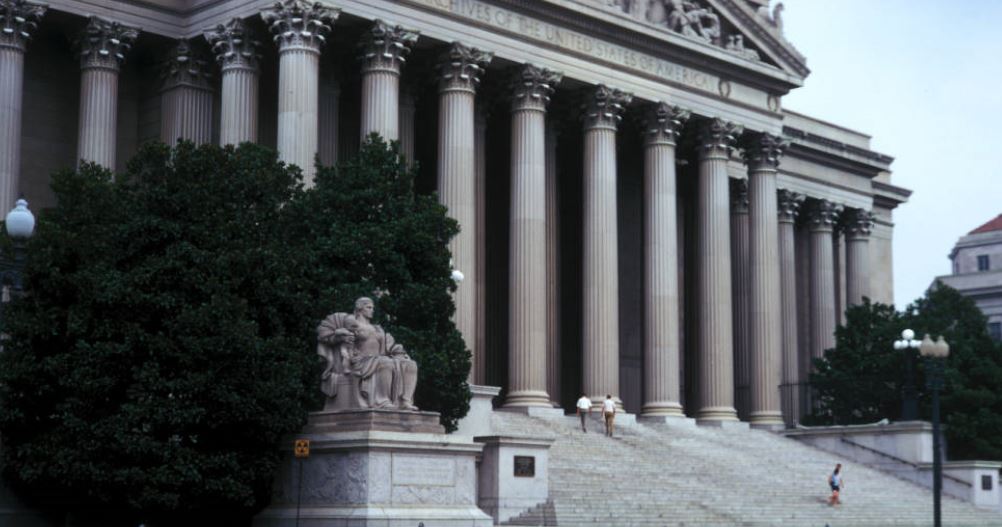 The Indiana Limestone Company is awarded the contract for 900 cars of limestone to go into the new archives building in Washington, D. C. The Indiana Limestone Company is awarded the contract for 900 cars of limestone to go into the new archives building in Washington, D. C.
Source: "Chronology of High Spots in the Daily News of Community During 1933," Evening World, January 1, 1934. more...
|
| Oolitic Limestone signs code 1933, Jun 16 |
The Oolitic limestone belt signs a code of ethics which conforms to the provisions of the new national industry recovery act. The code is being sent to Washington, D.C. for approval.
Source: "Limestone Industry Unites to Back the President's Recovery Program," Evening World, June 17, 1933.
|
| Quarry Accident kills Stewart 1933, Jul |
Henry H. Stewart, 67, dies of an electric shock while repairing a traveling crane at the Sare-Hoadley Stone Mill near Smithville. He touched a live wire with his left arm and the shock threw him against 2 more wires which hit him across the chest.
Source: Bloomington Evening World 3 July, 1933
|
| Workers vote to rejoin association 1933, Jul 6 |
Members of the local cutters' and carvers' union vote to rejoin the Journeymen Stone Cutters Association.
Source: Batchelor, Joseph A. An Economic History of the Indiana Oolitic Limestone Industry. Bloomington: school of business, Indiana University, 1944.
|
| Quarryman shot during ambush 1933, Jul 21 |
Quarryman, Charles Hughes, is shot twice by a double-barrel shotgun for an unknown reason. Hughes is expected to make a full recovery as no vital parts were hit.
Source: "Quarryman is Shot Down From Ambush," Evening World, July 22, 1933.
|
| Association organized in Chicago 1933, Jul 28 |
The National Cut Stone Association is organized in Chicago.
Source: Batchelor, Joseph A. An Economic History of the Indiana Oolitic Limestone Industry. Bloomington: school of business, Indiana University, 1944.
|
| Stone workers not to recognize local unions 1933, Oct 27 |
Harry F. Dynes, National Recovery Administration (NRA) official, announces that stone employees of Monroe and Lawrence counties have voted to recognize the Journeymen Stone Cutters Association of North America, affiliated with the American Federation of Labor, instead of the local unions.
Source: "Chronology of High Spots in the Daily News of Community During 1933," Evening World, January 1, 1934.
|
| Woolery dies 1933, Nov 5 |
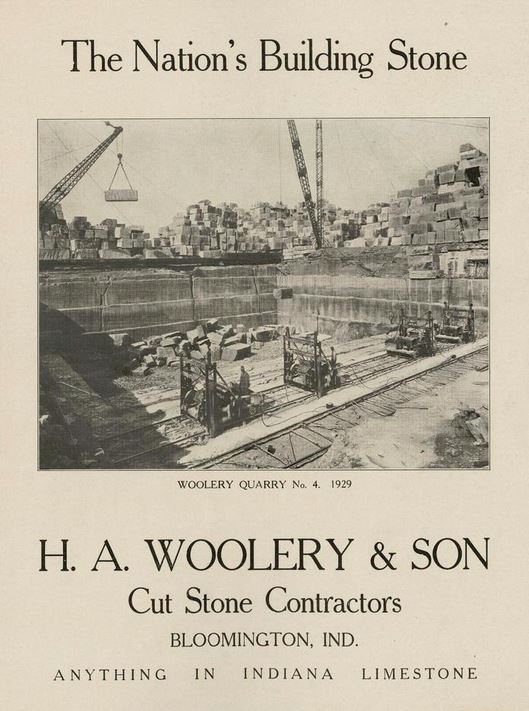 Henry A. Woolery, who was a pioneering limestone operator, dies. Henry A. Woolery, who was a pioneering limestone operator, dies.
Source: "Chronology of High Spots in the Daily News of Community During 1933," Evening World, January 1, 1934. more...
|
| Quarry Closes 1934 |
Nolan-Donato quarry ceases operation.
Source: Batchelor, Joseph A. An Economic History of the Indiana Oolitic Limestone Industry. Bloomington: school of business, Indiana University, 1944.
|
| Hoadley becomes bank president 1934 |
W.B. Hoadley serves as the Peoples State Bank for one year from 1934-1935.
Source: Ellettsville Sesquicentennial Association, The Ellettsville Story 1837-1987, 127.
|
| Eaton leaves quarry 1934, Jan 1 |
Roy Eaton, a 28 year old inmate of the State Reformatory at Pendleton, walks away from the stone quarry.
Source: "Looking Back in the Evening World Files," Bloomington Evening World, January 1, 1935.
|
| Demand to reinstate cuts 1934, Jan 8 |
A host of workers including stone cutters, carvers, and planerman demand that the cuts on their pay is reinstated.
Source: "City News Events of 1934 on Parade," Evening World, January 1, 1935.
|
| Increased pay is opposed 1934, Jan 12 |
Organized workers, including cutters, carvers, and planerman, demand for reinstatement of previous cuts made to their pay is opposed by Limestone operators.
Source: "City News Events of 1934 on Parade," Evening World, January 1, 1935.
|
| Price formula set 1934, Feb 18 |
Price formula is set up by the federal code authority at Washington for the Indiana limestone industry.
Source: "City News Events of 1934 on Parade," Evening World, January 1, 1935.
|
| New York Train Station is Completed 1935 |
New York Central Railroad Company Passenger Station is built in Syracuse, New York by the Matthews Brothers Stone Company.
Source: The Ellettsville Journal. Ellettsville, Ind.: Cooperative Pub. Co, 1939.; Section II, Mathews Brothers Centennial Edition, Wednesday, 26 December, 1962.
|
| Watchman burns to death 1935, Jan 31 |
Opal Coffey, watchman at Bloomington Crushed Stone Company, burns to death after trying to extinguish a fire.
Source: "Chronology of Events in 1935," Evening World, January 1, 1936.
|
| Commissioners urged 1935, Mar 27 |
Limestone workers in Monroe County urge county commissioners to build the new jail out of limestone.
Source: "Chronology of Events in 1935," Evening World, January 1, 1936.
|
| FHA appoints Brightly 1935, Apr 12 |
The Federal Housing Administration appoints H.S. Brightly as industry adviser for the limestone industry. Brightley will work in Washington D.C. in the Treasury Department Building.
Source: "Name Brightly Stone Envoy," Evening World, April 12, 1935.
|
| Stone workers threaten walkout 1935, Aug 1 |
Stone workers from three local companies threaten a walkout because they say that companies have violated an agreement.
Source: "Walkout Threatened in three Stone Companies ," Evening World, August 1, 1935.
|
| Strike threat closes mills 1935, Aug 5 |
Four stone mills close due to a strike threat for two days.
Source: "Strike Threat Closes Four Mills," Evening World, August 5, 1935.
|
| Stone cutters accept WPA wages 1935, Sep 11 |
The local stone cutters union votes to accept Works Progress Administration wages for city projects.
Source: "Chronology of Events in 1935," Evening World, January 1, 1936.
|
| Quarry laborers reject wages 1935, Sep 19 |
The quarry laborers reject the Works Progress Administration wages.
Source: "Chronology of Events in 1935," Evening World, January 1, 1936.
|
| Stone operators protest 1935, Nov 20 |
Stone operators in Bedford protest a proposed Works Progress Administration lease of a stone mill in Bloomington.
Source: "Chronology of Events in 1935," Evening World, January 1, 1936.
|
| Myers Hall Built 1936 |
Myers Hall is built in Bloomington, Indiana for Indiana University.
Source: The Ellettsville Journal. Ellettsville, Ind.: Cooperative Pub. Co, 1939.; Section II, Mathews Brothers Centennial Edition, Wednesday, 26 December, 1962.
|
| University of Delaware building built 1936 |
University of Delaware Chemistry Building is built in Newark, Delaware with Indiana limestone by the Matthews Brothers Stone Company.
Source: The Ellettsville Journal. Ellettsville, Ind.: Cooperative Pub. Co, 1939.; Section II, Mathews Brothers Centennial Edition, Wednesday, 26 December, 1962.
|
| Commissioners award contract for new jail 1936, Jan 9 |
The commissioners award contracts for the construction of a new $90,000 county jail.
Source: "A Last Look at 1936 - In Pictures and in Paragraphs," Evening World, January 1, 1937, 5.
|
| Heltonville Limestone changes owners 1936, Feb 6 |
The Heltonville Limestone Company is sold to Dave and John Fuller and Kenneth Graham.
Source: "A Last Look at 1936 - In Pictures and in Paragraphs," Evening World, January 1, 1937, 5.
|
| Two homes burglarized 1936, Mar 8 |
Homes of B. G. Hoadley and Mrs. Minter Cline are burglarized.
Source: "A Last Look at 1936 - In Pictures and in Paragraphs," Evening World, January 1, 1937, 5.
|
| Excavation begins for jail 1936, Apr 10 |
Excavation work on a new county jail site begins.
Source: "A Last Look at 1936 - In Pictures and in Paragraphs," Evening World, January 1, 1937, 5.
|
| Stone unions reach agreements 1936, Apr 25 |
New wage and working agreements go into effect for seven stone unions in the Monroe-Lawrence county district.
Source: "A Last Look at 1936 - In Pictures and in Paragraphs," Evening World, January 1, 1937, 5.
|
| Esarey becomes State Geologist 1936, May 2 |
Ralph Esarey is named State Geologist to succeed Dr. W. N. Logan, who is retiring due to ill health.
Source: "A Last Look at 1936 - In Pictures and in Paragraphs," Evening World, January 1, 1937, 5.
|
| Traveler runners' union strikes 1936, May 8 |
Nearly every mill in the Bloomington-Bedford district shuts down as a result of a strike, called by the traveler runners' union.
Source: "A Last Look at 1936 - In Pictures and in Paragraphs," Evening World, January 1, 1937, 5.
|
| Townsend sawmill burns 1936, May 9 |
A fire destroys the Townsend sawmill, with damages totalling $10,000.
Source: "A Last Look at 1936 - In Pictures and in Paragraphs," Evening World, January 1, 1937, 5.
|
| Robbery at quarry solved 1936, Jun 5 |
Five local boys admit to police that they were behind the theft of cars at the quarry holes north of town.
Source: "A Last Look: In Pictures and in Paragraphs," Evening World, January 1, 1937.
|
| Quarry accident kills Kerr 1936, Jun 12 |
Joseph Kerr, 57, dies in a quarry accident.
Source: Rice, Claude F., and Marilyn McCoy. Monroe County, Indiana, Coroners Inquest: 1888-1973. Bloomington, IN: Monroe County Historical Society, 2001.
|
| Quarry accident kills Wykoff 1936, Jun 12 |
Merril E. Wykoff, 21, dies in a quarry accident.
Source: Rice, Claude F., and Marilyn McCoy. Monroe County, Indiana, Coroners Inquest: 1888-1973. Bloomington, IN: Monroe County Historical Society, 2001.
|
| Quarry accident kills Young 1936, Jun 16 |
John W. Young, 65, dies of a heart attack at the Monon Stone Company, southwest of Clear Creek.
Source: Bloomington Evening World 16 June, 1936
|
| Quarry accident kills Fagan 1936, Jun 22 |
Joseph L. Fagan, 46, is electrocuted at Monon Mill when the light bulb he was holding broke against a pump.
Source: Rice, Claude F., and Marilyn McCoy. Monroe County, Indiana, Coroners Inquest: 1888-1973. Bloomington, IN: Monroe County Historical Society, 2001.
|
| Stone mill strike ends 1936, Jul 9 |
A strike at the crushed stone mills was settled amicably when the owner, Ralph Rogers, signed contracts with the Quarry Workers' International Union.
Source: "A Last Look at 1936 - In Pictures and in Paragraphs," Evening World, January 1, 1937, 6.
|
| Strike at stone mills settled 1936, Jul 9 |
The strike at the crushed stone mills is settled when the owner Ralph Rogers signed contracts with the Quarry Workers International Union
Source: "A Last Look: In Pictures and in Paragraphs," Evening World, January 1, 1937.
|
| Construction strike continues 1936, Jul 20 |
A conference between union leaders and builders today fail to end the strike, which has been holding up the construction of three Indiana University buildings.
Source: "A Last Look: In Pictures and in Paragraphs," Evening World, January 1, 1937.
|
| Limestone approved for Cleveland 1936, Aug 12 |
It is announced that Indiana limestone from the Bedford-Bloomington district has been chosen by congress for use in the 3 million dollar post office in Cleveland, OH.
Source: "A Last Look at 1936 - In Pictures and in Paragraphs," Evening World, January 1, 1937, 6.
|
| Limestone chosen for Cleveland post office 1936, Aug 12 |
Indiana limestone taken from the Bedford-Bloomington district is chosen by Congress for the new $3,000,000 post office in Cleveland, Ohio.
Source: "A Last Look: In Pictures and in Paragraphs," Evening World, January 1, 1937.
|
| Jail cornerstone is laid 1936, Aug 27 |
Governor Paul V. McNutt lays the cornerstone of the new jail in the presence of many local and county officials.
Source: "A Last Look at 1936 - In Pictures and in Paragraphs," Evening World, January 1, 1937, 7.
|
| Union pickets 1936, Dec 17 |
A labor union picket prevents trucking of plate glass from Indiana Limestone Co. mill, and adds credence to reports that the Nurre Companies, Inc., might move from their Bloomington plant to Burlington, IA.
Source: "A Last Look at 1936 - In Pictures and in Paragraphs," Evening World, January 1, 1937, 8.
|
| Limestone lease assigned 1937, Jan |
Bloomington Limestone Corporation is assigned a lease of the Indiana Oolitic Realty Company property to the Texas Quarries Company.
Source: Joseph A Batchelor, An Economic History of the Indiana Oolitic Limestone Industry (Bloomington: school of business, Indiana University, 1944)
|
| Fire destroys crushing plant 1937, Jan |
Fire destroys stone crushing plant on Adams Street. Owner Ralph Rogers closes the site's quarry operations.
Source: Sandy Smith, From the Ground Up: How Rocks, Roads, and Rogers Group Helped Build the Nation (Franklin, Tennessee: Providence House Publishers, 2008), 23.
|
| Stone workers contract signed 1937, Feb 2 |
A new wage contract, that provides a minimum pay increase of 5 cents for most stone workers, is signed.
Source: "Chronicle of Daily Events During 1937 in Bloomington and about Monroe County," Evening World, January 1, 1938, 6.
|
| Stone Mill accident 1937, Feb 23 |
Louis Cleveland Welch, 51, is fatally crushed by falling stone at the Central Mill of the Shawnee Stone Company.
Source: Bloomington Telephone 23 February, 1937
|
| Quarry accident kills Welch 1937, Feb 24 |
Cleveland Welch killed when stone fell on top of him.
Source: "Coroner Says Welch Death Was Accident," Evening World
|
| Ross rules Welch's death accidental 1937, Feb 24 |
Coroner Ben Ross gives a verdict of accidental death after investigating the death of Cleveland Welch, local stone gang sawyer. Welch was crushed by 20 tons of falling stone at the Central Mill of the Shawnee Stone Company.
Source: "Chronicle of Daily Events During 1937 in Bloomington and about Monroe County," Evening World, January 1, 1938, 6.
|
| Stone Mill accident 1937, Apr 7 |
Raymond Deckard, 50, is killed in a stone mill accident.
Source: Rice, Claude F., and Marilyn McCoy. Monroe County, Indiana, Coroners Inquest: 1888-1973. Bloomington, IN: Monroe County Historical Society, 2001.
|
| First Methodist Church fire 1937, Apr 7 |
 The First Methodist Church at Fourth and Washington Streets catches fire around 9:10AM and is discovered by Ellsworth Moore during his neighborhood milk delivery. The fire causes an estimated $150,000 in damages and is believed to be caused by faulty wiring. President of the church board of trustees William B. Adams states that the church was insured for $97,000 against fire. The First Methodist Church at Fourth and Washington Streets catches fire around 9:10AM and is discovered by Ellsworth Moore during his neighborhood milk delivery. The fire causes an estimated $150,000 in damages and is believed to be caused by faulty wiring. President of the church board of trustees William B. Adams states that the church was insured for $97,000 against fire.
Source: Bill Coulter, "First Methodist Church, 219 E. Fourth St., Bloomington, Monroe County, Indiana," State Historic Architectural and Archaeological Research Database (SHAARD), April 7, 1937, 8-10.
|
| First Methodist Church insurance collected 1937, Apr 8 |
The First Methodist Church (219 East Fourth Street) board reveals that a Western Adjustment Company representative sets the insurance on the building is $100,000 and the contents of the building is $2,000. They also plan on building the new church to the same design as the old.
Source: Bill Coulter, "First Methodist Church, 219 E. Fourth St., Bloomington, Monroe County, Indiana," State Historic Architectural and Archaeological Research Database (SHAARD), March 11, 2012, 13.
|
| George Peter Dodd dies 1937, Apr 12 |
Superintendent of the Empire Stone Company, George Peter Dodd, age 65, dies in his home in Clear Creek.
Source: "Chronicle of Daily Events During 1937 in Bloomington and about Monroe County," Evening World, January 1, 1938, 6.
|
| Crushed Stone Co. plant destroyed 1937, Apr 25 |
The Bloomington Crushed Stone Company plant is destroyed by fire with a loss of about $50,000.
Source: "Chronicle of Daily Events During 1937 in Bloomington and about Monroe County," Evening World, January 1, 1938.
|
| Harrison and Coffman face charges 1937, Jul 23 |
Charles Harrison, 27, and his girlfriend Betty Coffman, 22, of Indianapolis, face charges in circuit court for petit larceny, second degree burglary, and auto banditry in connection with the robbery last fall of a safe in the Swenson Stone Company.
Source: "Chronicle of Daily Events During 1937 in Bloomington and about Monroe County," Evening World, January 1, 1938, 7.
|
| Bert G. Hoadley dies 1937, Sep 11 |
Bert Grange Hoadley dies at the age of 61. Hoadley rose from being a hand laborer in a small mill and monument shop at Stinesville, to leadership in the Indiana limestone industry.
Source: "Chronicle of Daily Events During 1937 in Bloomington and about Monroe County," Evening World, January 1, 1938, 7.
|
| Quarry accident kills Fordyce 1937, Sep 27 |
Everett Fordyce, 54, is killed in a quarry accident.
Source: Rice, Claude F., and Marilyn McCoy. Monroe County, Indiana, Coroners Inquest: 1888-1973. Bloomington, IN: Monroe County Historical Society, 2001.
|
| IN limestone promotion 1937, Nov 4 |
At a dinner for Monroe and Lawrence county business men, professional men, quarry workers, and mill workers, an extensive program for promoting Indiana limestone throughout the United States is outlined.
Source: "Chronicle of Daily Events During 1937 in Bloomington and about Monroe County," Evening World, January 1, 1938, 8.
|
| 2nd banquet held for limestone industry 1937, Nov 7 |
The Technical and Field Service Bureau of the Indiana Limestone Company entertains prominent business men of Monroe and Lawrence counties at the second of a series of banquets held to advertise the stone business.
Source: "Chronicle of Daily Events During 1937 in Bloomington and about Monroe County," Evening World, January 1, 1938, 8.
|
| Pennsylvania Planetarium is Built 1938 |
Buhl Planetarium and Institute of Popular Science is built in Pittsburgh, Pennsylvania by Matthews Brothers Stone Company.
Source: The Ellettsville Journal. Ellettsville, Ind.: Cooperative Pub. Co, 1939.; Section II, Mathews Brothers Centennial Edition, Wednesday, 26 December, 1862
|
| Reed-Powers ceases quarry operations 1938 |
Reed-Powers Stone Company quarries cease operation early in 1938.
Source: Batchelor, Joseph A. An Economic History of the Indiana Oolitic Limestone Industry. Bloomington: school of business, Indiana University, 1944.
|
| Yale Graduate School Built 1938 |
Yale Graduate School is built in New Haven, Connecticut by the Matthews Brothers Stone Company.
Source: The Ellettsville Journal. Ellettsville, Ind.: Cooperative Pub. Co, 1939.; Section II, Mathews Brothers Centennial Edition, Wednesday, 26 December, 1962.
|
| Quarry workers sue company 1938, Feb 7 |
A suit is filed for $25,000 worth of damages from leaders of the Federal Labor Union No. 21469, associated with the A. F. of L. by the Quarry Workers International Union of North American.
Source: "Daily March of Events Chronicled Through 1938 in Review," The Evening World, Bloomington, Indiana, December 31, 1938.
|
| Limestone workers sign agreement 1938, Mar 5 |
Committees representing the Union Crafts and the Indiana limestone operators of the Bloomington-Bedford district complete an agreement for all crafts for the resumption of work in the stone quarries.
Source: "Daily March of Events Chronicled Through 1938 in Review," The Evening World, Bloomington, Indiana, December 31, 1938, 3.
|
| Kappa Alpha Theta built 1938, Jun |
"Architecture and Design," cites Bloomington general contractor Charles A. Pike as the builder of Indiana University Kappa Alpha Theta sorority at 441 North Woodlawn Avenue. It is listed as being designed by Burns & James of Indianapolis.
Source: Bill Coulter, "Charles A. Pike," State Historic Architectural and Archaeological Research Database (SHAARD), October 1, 2010, 1.
|
| Delta Tau Delta built 1938, Jun |
"Architecture and Design" cites Bloomington general contractor Charles A. Pike as the builder of the Indiana University Delta Tau Delta Fraternity (formerly at 603 East Sixth Street, now part of the Mathers Museum) and cites the designers as Burns & James of Indianapolis.
Source: Bill Coulter, "Charles A. Pike," State Historic Architectural and Archaeological Research Database (SHAARD), October 1, 2010, 1.
|
| First Methodist Church architect 1938, Oct 29 |
The "Bloomington Evening World" announces that the architect responsible for the rebuilding of the First Methodist Church at 219 East Fourth Street is H. M. King of Louisville. He has over 15 years of experience and has designed around 500 churches. He earned a B.S. degree in architecture from the Massachusetts Institute of Technology.
Source: Bill Coulter, "First Methodist Church, 219 E. Fourth St., Bloomington, Monroe County, Indiana," State Historic Architectural and Archaeological Research Database (SHAARD), March 11, 2012, 13-15.
|
| Missing coed found 1938, Nov 6 |
Indiana University coed, Mary E. Mellinger, who has been missing for two days, is found today in Bloomington's old quarry.
Source: "Daily March of Events Chronicled Through 1938 in Review," The Evening World, Bloomington, Indiana, December 31, 1938.
|
| Labor board orders elections 1938, Dec 5 |
The National Labor Relations Board (NLRB) orders an election of limestone quarry workers to determine bargaining agency.
Source: "Daily March of Events Chronicled Through 1938 in Review," The Evening World, Bloomington, Indiana, December 30, 1938, 4.
|
| Stone mill accident kills man 1938, Dec 16 |
Virgil Brown, 39, is killed when his clothing becomes caught in a line shaft at Mugg Stone Crushing quarry at Quincy, near Spencer.
Source: Bloomington Telephone 9 December, 1938
|
| Cascades Park Quarry opens 1939 |
Cascades Park Quarry opens.
Source: Sandy Smith, From the Ground Up: How Rocks, Roads, and Rogers Group Helped Build the Nation (Franklin, Tennessee: Providence House Publishers, 2008), 23.
|
| Elks move to N. Walnut 1939, Apr |
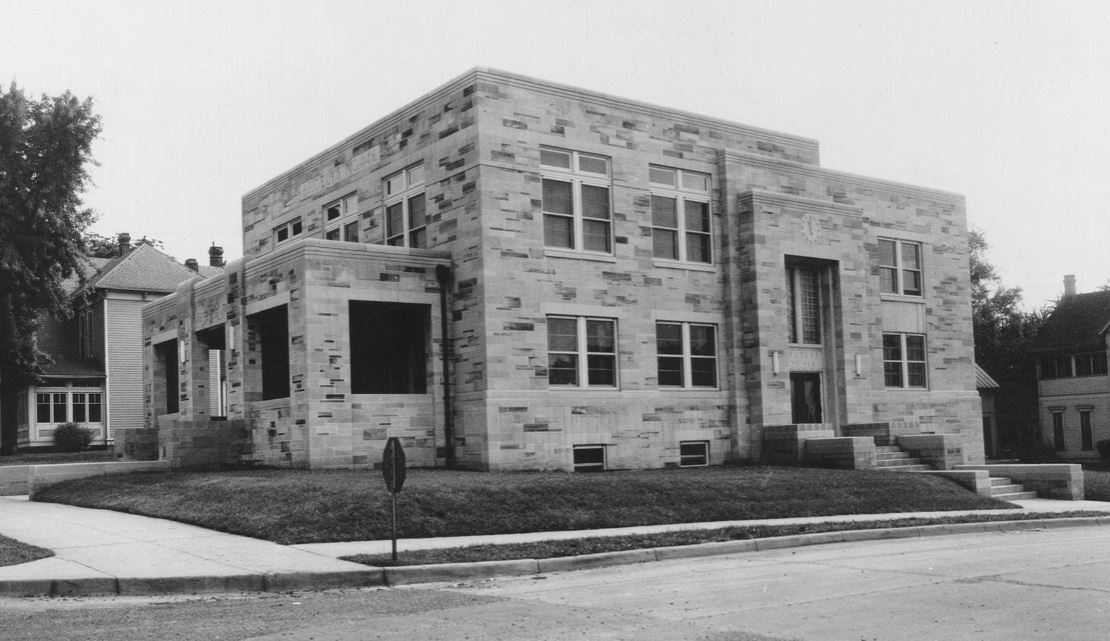 The Benevolent and Protective Order of Elks move into their new limestone home on 400 North Walnut. The Benevolent and Protective Order of Elks move into their new limestone home on 400 North Walnut.
Source: "Elks Commemorate 100th Anniversary: Ceremony Friday," Daily Herald-Telephone, February 15, 1968. more...
|
| Draper buys another phone exchange 1939, Aug 31 |
Guy A. Draper, former cashier of the People State Bank at Ellettsville, plans to take charge of the Hoadley Telephone Exchange in Gosport. This makes the fourth exchange for Draper, who also owns telephone exchanges at Ellettsville, Smithville, and Whitehall.
Source: "Banker Buys Fourth Office," Indianapolis Times, August 31, 1939, 6.
|
| City lists 23 quarries and mills 1940 |
The city directory states that Bloomington has 23 quarries and limestone mills.
Source: National Directory Company, Bloomington Indiana City Directory 1940 (Parsons, KS: National Directory Company, 1940), XI.
|
| Limestone company to testify 1940, Jan 25 |
Limestone company officials from Bloomington are called to Chicago to testify before a federal grand jury who is investigating practice of the building trades.
Source: "1940 Chronology," Evening World, December 31, 1940.
|
| Sales down here 1940, Mar 22 |
Retail sales in Bloomington show heavy losses as a result of the Showers Company Strike. Representatives of the limestone industry rush to Washington to fight marble and granite interests seeking to secure contracts for construction of new federal buildings.
Source: "1940 Chronology," Evening World, December 31, 1940.
|
| Wylie joins school board 1940, May 24 |
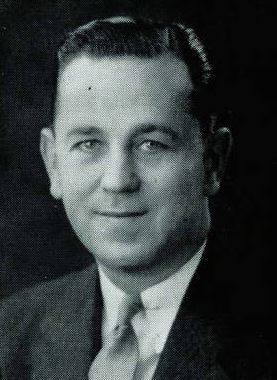 David Wylie, president of the Bloomington Limestone Corporation, is to be named a member of the city school board to succeed Helen Hicks Baker. David Wylie, president of the Bloomington Limestone Corporation, is to be named a member of the city school board to succeed Helen Hicks Baker.
Source: "1940 Chronology," Evening World, December 31, 1940. more...
|
| Carman announces limestone business 1940, Jul 12 |
Engineer Victor Carman announces that limestone companies will furnish stone for a hangar of the new airport.
Source: "1940 Chronology," Evening World, December 31, 1940.
|
| Miers residence razed 1940, Jul 22 |
The former residence of the late Judge Robert Miers, one of the oldest residences in Bloomington, is razed by present owner Irvin Matthews, who in 1940 resides at 725 Highland Avenue in the Vinegar Hill District.
Source: "1940 Chronology," Evening World, December 31, 1940. map
|
| New airport discussed 1940, Nov 26 |
At the 4th roundtable meeting, members discuss the 10 vital community problems, one of them being the airport. Further construction at the new airport cannot continue without engineering aid. The city has the necessary funds of $89,000 with the WPA to send a qualified engineer to coordinate the work. The proposed hangar, for which limestone men agreed to supply the stone for, is the second step. The stipulation is the limestone suppliers wish the hangar to be built immediately, then in the summer. However, this matter has not come up again since it is impossible to build a hangar before the airport is finished. Two airline officials have made investigations but will not commit themselves until the airport is built.
Source: "Community Coordinating Council Will Be Established for 1941; Bloomington Leaders Discuss Ten Vital Problems At Fourth Roundtable; Confident U.H.S. Will Continue," Evening World, November 27, 1940.
|
| Quarry accident kills George 1941, Apr 1 |
Leo George, 25, suffers fatal fall into a quarry.
Source: Rice, Claude F., and Marilyn McCoy. Monroe County, Indiana, Coroners Inquest: 1888-1973. Bloomington, IN: Monroe County Historical Society, 2001.
|
| Quarry accident kills Jackson 1941, Apr 29 |
Elmer Jackson, 36, is killed in quarry accident.
Source: Rice, Claude F., and Marilyn McCoy. Monroe County, Indiana, Coroners Inquest: 1888-1973. Bloomington, IN: Monroe County Historical Society, 2001.
|
| Indiana limestone production hits record low 1943 |
800,000 cubic feet of limestone are produced for 1943.
Source: Sherman N Shewmaker, Quarry Quest: A Field Trip Guide to the Indiana Limestone District, Monroe and Lawrence Counties (1991)
|
| Quarry accident killed Morgan 1943, Aug 13 |
Claude E. Morgan age 63 was killed during a quarry accident.
Source: Rice, Claude F., and Marilyn McCoy, Monroe County Coroners Inquest: 1888 - 1973 (2001), 37.
|
| Mill changes production line for war 1944 |
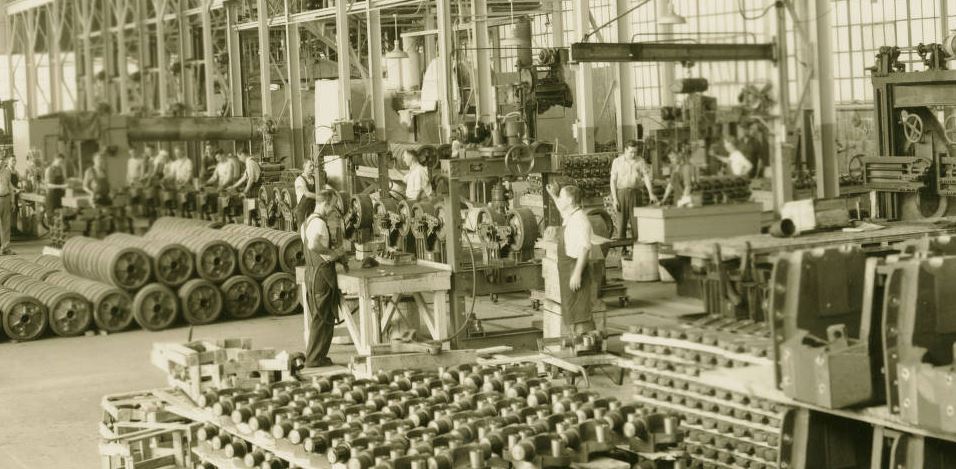 The Cline and Wylie Mills of the Bloomington Limestone Company convert their production to support the war, machining large and small brackets. Military secrecy does not allow the publication of data or specifics. David G. Wylie is president and Kenneth Cline and Alfred A. Beck are the vice-presidents. Cline is a member of the Hoadley Family and Beck is the son of Prof. James K. Beck and for former Miss Adams, whose father (Benjamin Sr.) and brothers (Will and Ben) were early and successful stone businessmen. The Cline and Wylie Mills of the Bloomington Limestone Company convert their production to support the war, machining large and small brackets. Military secrecy does not allow the publication of data or specifics. David G. Wylie is president and Kenneth Cline and Alfred A. Beck are the vice-presidents. Cline is a member of the Hoadley Family and Beck is the son of Prof. James K. Beck and for former Miss Adams, whose father (Benjamin Sr.) and brothers (Will and Ben) were early and successful stone businessmen.
Source: "Community should honor Bloomington Limestone when Army-Navy "E" is presented," The World Telephone, December 14, 1944. more...
|
| Limestone history published 1944 |
Joseph Batchelor's economic history "The Indiana Limestone Industry" is published.
Source: Joseph A Batchelor, An Economic History of the Indiana Oolitic Limestone Industry (Indiana University Bloomington school of business, 1944)
|
| Company receives military award flag 1945, Jan 9 |
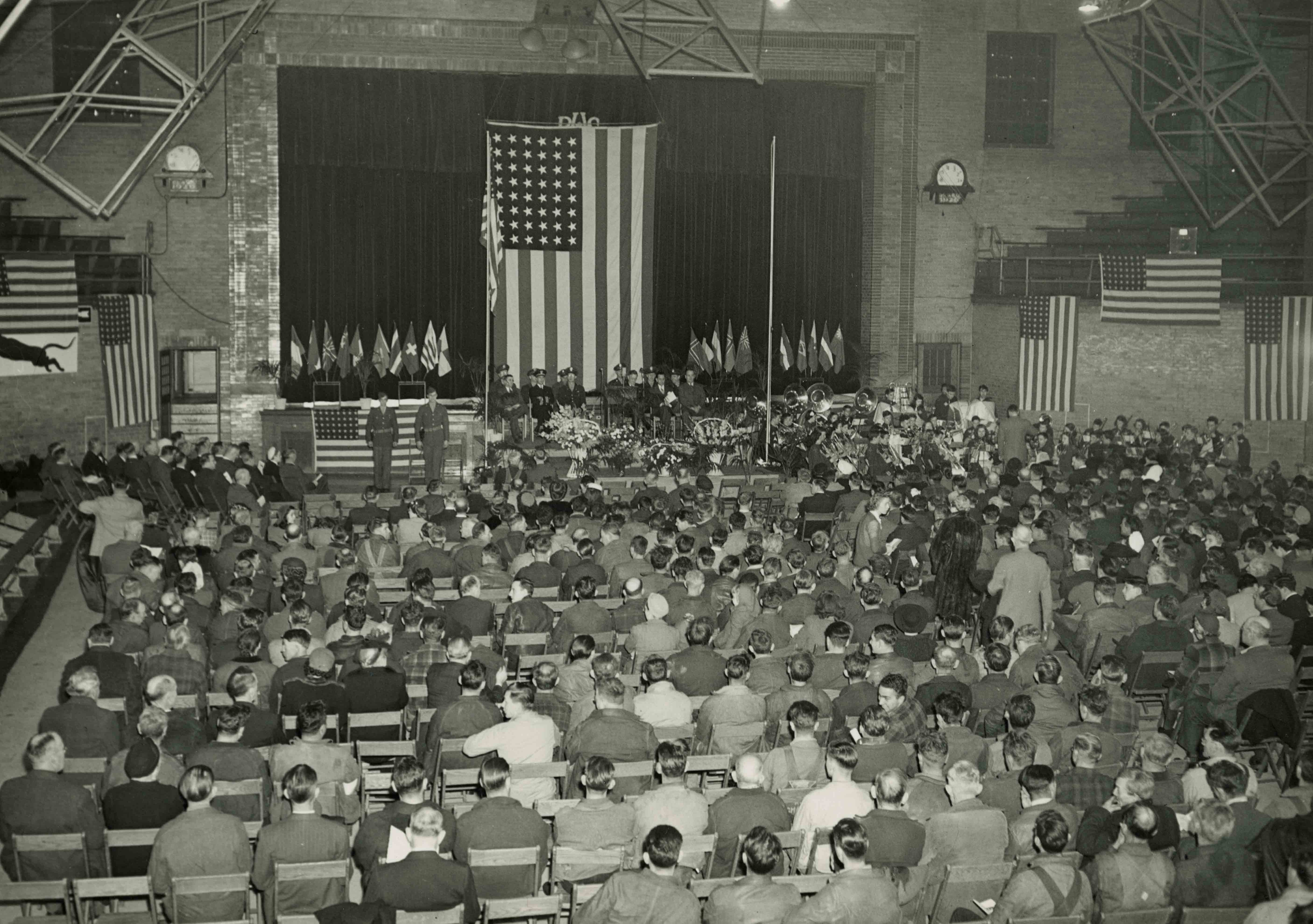 Bloomington Limestone Company president David G. Wylie receives the Army Navy "E" flag, awarded to American companies which have ranked "excellent" in their production to support the war effort. The flag is presented by Major J. C. Conniff, executive officer of the Cincinnati ordinance district in front of nearly 1000 local residents and employees at a ceremony held in the Bloomington High School Gym. Bloomington Limestone Company president David G. Wylie receives the Army Navy "E" flag, awarded to American companies which have ranked "excellent" in their production to support the war effort. The flag is presented by Major J. C. Conniff, executive officer of the Cincinnati ordinance district in front of nearly 1000 local residents and employees at a ceremony held in the Bloomington High School Gym.
Source: "Limestone firm gets "E" award of Army Navy," Indianapolis News, January 11, 1945. more...
|
| Boston University Building is Built 1946 |
Boston University Music Liberal Arts and Administrative Building built in Boston, Massachusetts by Matthews Brothers Stone Company.
Source: The Ellettsville Journal. Ellettsville, Ind.: Cooperative Pub. Co, 1939.; Section II, Mathews Brothers Centennial Edition, Wednesday, 26 December, 1962.
|
| Cleveland Science Building is Built 1946 |
New Tomlinson Hall at the Case School of Applied Science is built in Cleveland, Ohio by the Matthews Brothers Stone Company.
Source: The Ellettsville Journal. Ellettsville, Ind.: Cooperative Pub. Co, 1939.; Section II, Mathews Brothers Centennial Edition, Wednesday, 26 December, 1962.
|
| Montana Catholic Church is Built 1946 |
St. Patrick's Catholic Church built in Butte, Montana by the Matthews Brothers Stone Company.
Source: The Ellettsville Journal. Ellettsville, Ind.: Cooperative Pub. Co, 1939.; Section II, Mathews Brothers Centennial Edition, Wednesday, 26 December, 1962.
|
| South Carolina Hospital is Built 1946 |
County Hospital building is built in Anderson, South Carolina by the Matthews Brothers Stone Company.
Source: The Ellettsville Journal. Ellettsville, Ind.: Cooperative Pub. Co, 1939.; Section II, Mathews Brothers Centennial Edition, Wednesday, 26 December, 1962.
|
| Woolridge found, apprehended 1946, Mar 1 |
After police find the bodies of Russell Koontz (45) and Phyllis Coleman (32) at the abandoned Hunter Brothers Mill, they find a distinctive boot pattern in the mud. They speak to a witness who states that an African American man in rubber boots was seen walking through the neighborhood by a car accident. Police have records of Joseph Luther Woolridge, who is is a black man at the age of 29, from the car accident and they find the rubber boots matching the pattern at the crime scene in Woolridge's home. They apprehend him for murder.
Source: Clay W. Stuckey, An illustrated gazetteer of limestone mills: in Owen, Monroe, and Lawrence counties to 1950 (2016), 79.
|
| Woolridge apprehended for murder 1946, Mar 1 |
Hours after the bodies of Russell Koontz (45) and Phyllis Coleman (32) are found at the abandoned Hunter Brothers Mill, African American Joseph Luther Woolridge (29) is apprehended by police. He confesses to the killings; he states that he had caught Koontz and Coleman in a "compromising position" and Koontz attacked Woolridge, causing Woolridge to defend himself by hitting Koontz over the head. He then panicked and strangled Coleman.
Source: Clay W. Stuckey, An illustrated gazetteer of limestone mills: in Owen, Monroe, and Lawrence counties to 1950 (2016), 79.
|
| 2 bodies found at Hunter Bros Mill 1946, Mar 1 |
Police find the bodies of Russell Koontz (age 45) and Phyllis Coleman (age 32) at the abandoned Hunter Brothers Mill in a six by six foot sludge pit filled with 18 inches of water. Koontz had been struck over the head and Coleman had been strangled.
Source: Clay W. Stuckey, An illustrated gazetteer of limestone mills: in Owen, Monroe, and Lawrence counties to 1950 (2016), 79.
|
| Police notified of Koontz absence 1946, Mar 1 |
When Russell Koontz does not return home after visiting the abandoned Hunter Brothers Mill, police are notified and head to Hunter Valley after interviewing his colleague.
Source: Clay W. Stuckey, An illustrated gazetteer of limestone mills: in Owen, Monroe, and Lawrence counties to 1950 (2016), 79.
|
| Koontz goes to Hunter Bros Mill 1946, Mar 1 |
Russell Koontz, executive of the Empire Stone Company near Sanders, tells an associate that he is going to the abandoned Hunter Brothers Mill at Hunter Valley to see some derricks that the company may purchase. He is later murdered.
Source: Clay W. Stuckey, An illustrated gazetteer of limestone mills: in Owen, Monroe, and Lawrence counties to 1950 (2016), 79.
|
| Hohenberger visits downtown 1946, Aug 27 |
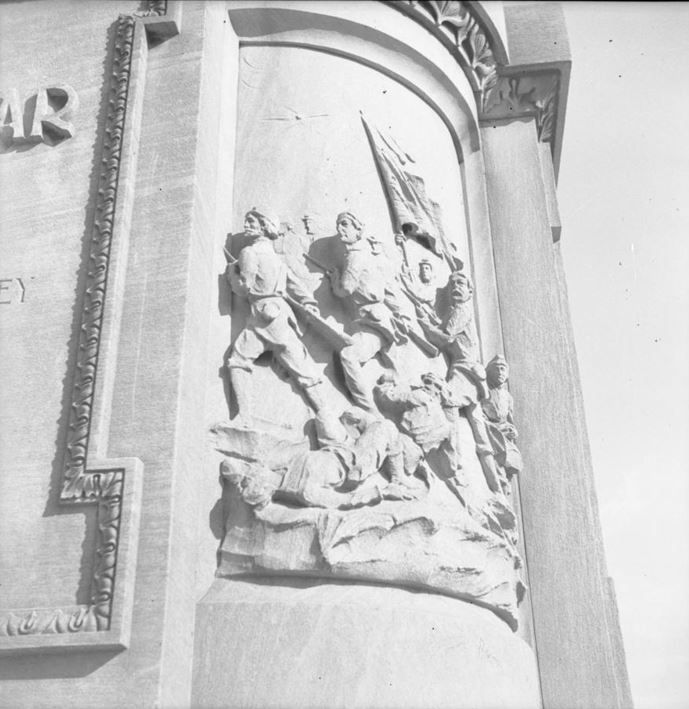 Accomplished photographer Frank M. Hohenberger visits downtown Bloomington to take a series of photographs, including one of the Alexander Memorial and the courthouse. Image Courtesy, The Lilly Library, Indiana University, Bloomington, Indiana. For commercial uses, please contact the Lilly Library. Accomplished photographer Frank M. Hohenberger visits downtown Bloomington to take a series of photographs, including one of the Alexander Memorial and the courthouse. Image Courtesy, The Lilly Library, Indiana University, Bloomington, Indiana. For commercial uses, please contact the Lilly Library.
Source: Indiana University; Image Collection Online; Lilly Library, Frank M. Hohenberger more...
|
| Cornell University Hall built 1948 |
Cornell University Statler Hall is built in Buffalo, New York by the Matthews Brothers Stone Company.
Source: The Ellettsville Journal. Ellettsville, Ind.: Cooperative Pub. Co, 1939.; Section II, Mathews Brothers Centennial Edition, Wednesday, 26 December, 1962.
|
| Ohio Christian Church is Built 1948 |
Central Christian Church built in Youngstown, Ohio by the Matthews Brothers Stone Company.
Source: The Ellettsville Journal. Ellettsville, Ind.: Cooperative Pub. Co, 1939.; Section II, Mathews Brothers Centennial Edition, Wednesday, 26 December, 1962.
|
| Pennsylvania State building built 1948 |
Pennsylvania State College Mineral Industries Building built in State College, Pennsylvania by the Matthews Brothers Stone Company of Ellettsville.
Source: The Ellettsville Journal. Ellettsville, Ind.: Cooperative Pub. Co, 1939.; Section II, Mathews Brothers Centennial Edition, Wednesday, 26 December, 1962.
|
| University of Chicago Institute Built 1948 |
University of Chicago Research Institute Building built in Chicago, Illinois by the Matthews Brothers Stone Company.
Source: The Ellettsville Journal. Ellettsville, Ind.: Cooperative Pub. Co, 1939.; Section II, Mathews Brothers Centennial Edition, Wednesday, 26 December, 1962.
|
| Quarry accident kills Vaughn 1948, Jun 20 |
William L. Vaughn, 17, drowns after jumping into quarry.
Source: Rice, Claude F., and Marilyn McCoy. Monroe County, Indiana, Coroners Inquest: 1888-1973. Bloomington, IN: Monroe County Historical Society, 2001.
|
| New York Auditorium Built 1949 |
Cardinal Spellman Auditorium built in Tarrytown, New York by the Matthews Brothers Stone Company.
Source: The Ellettsville Journal. Ellettsville, Ind.: Cooperative Pub. Co, 1939.; Section II, Mathews Brothers Centennial Edition, Wednesday, 26 December, 1962.
|
| Boston University Chapel Built 1949 |
Boston University Chapel built in Boston, Massachusetts by the Matthews Brothers Stone Company.
Source: The Ellettsville Journal. Ellettsville, Ind.: Cooperative Pub. Co, 1939.; Section II, Mathews Brothers Centennial Edition, Wednesday, 26 December, 1962.
|
| Sawmill accident kills man 1949, Jan 7 |
Harry Sexton, 65, is killed in a sawmill accident.
Source: Rice, Claude F., and Marilyn McCoy. Monroe County, Indiana, Coroners Inquest: 1888-1973. Bloomington, IN: Monroe County Historical Society, 2001.
|
| Workers request pay increase 1949, Jan 26 |
The craft union asks for pay increases from 25 to 46 cents an hour.
Source: Bloomington Weekly Herald 26 January, 1949
|
| Lester killed in quarry accident 1949, Jun 8 |
Uless Lester, 25, killed in quarry accident.
Source: Rice, Claude F., and Marilyn McCoy. Monroe County, Indiana, Coroners Inquest: 1888-1973. Bloomington, IN: Monroe County Historical Society, 2001.
|
| Quarry accident kills Ferguson 1949, Jun 30 |
Austin Ferguson, 35, is killed in a quarry accident.
Source: Rice, Claude F., and Marilyn McCoy. Monroe County, Indiana, Coroners Inquest: 1888-1973. Bloomington, IN: Monroe County Historical Society, 2001.
|
| Quarry accident kills McPhetridge 1949, Aug 13 |
Ollie McPhetridge, 52, is killed in a quarry accident.
Source: Rice, Claude F., and Marilyn McCoy. Monroe County, Indiana, Coroners Inquest: 1888-1973. Bloomington, IN: Monroe County Historical Society, 2001.
|
| Pennsylvania State College addition built 1950 |
Pennsylvania State College Mechanical Engineering building addition is built in State College, Pennsylvania by the Matthews Brothers Stone Company.
Source: The Ellettsville Journal. Ellettsville, Ind.: Cooperative Pub. Co, 1939.; Section II, Mathews Brothers Centennial Edition, Wednesday, 26 December, 1962.
|
| Stone Mill has fire 1950, Jun 29 |
An estimated $1,500 of damage is caused by a fire, which broke out at the excelsior storage building at the J.J. Hoadley Inc. The stone mill is located about a quarter mile south of Bloomington city limits.
Source: "Blaze at Stone Mill Causes $1,500 Damage," Bloomington World-Telephone, June 30, 1950.
|
| Legion approves new home plans 1950, Jul |
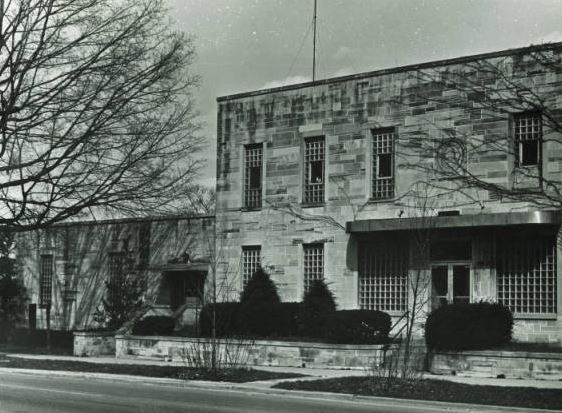 Bloomington American Legion members announce plans to begin construction of a new $100,000 home. A unanimous vote was taken to recommend that the Board of Trustees approve the matter at their next meeting. Bloomington American Legion members announce plans to begin construction of a new $100,000 home. A unanimous vote was taken to recommend that the Board of Trustees approve the matter at their next meeting.
Source: "Legion Launches Plans for $100,000 Home Here," Herald Telephone, July 11, 1950. more...
|
| Quarry accident kills Gotwals 1950, Aug 29 |
Ben Gotwals, 61, is killed in a quarry accident.
Source: Rice, Claude F., and Marilyn McCoy. Monroe County, Indiana, Coroners Inquest: 1888-1973. Bloomington, IN: Monroe County Historical Society, 2001.
|
| Rogers partners with Dobson 1951 |
Rogers partners with Frank Dobson in the Cascades Park Quarry.
Source: Sandy Smith, From the Ground Up: How Rocks, Roads, and Rogers Group Helped Build the Nation (Franklin, Tennessee: Providence House Publishers, 2008), 51.
|
| Fair wages promised 1951, Jan 30 |
Cyrus S. Ching, chairman of the Wage Stabilization Board, promises that every effort will be made to develop a program for equitable wages for Monroe and Lawrence County limestone workers.
Source: "Pledge Fair Wage Policy For Stone," Herald Telephone, January 31, 1951.
|
| Stone Cutters Strike 1951, Mar |
Seeking a 10% pay increase, area Journeymen Stone Cutters go on strike.
Source: Bloomington Daily Herald-Telephone 1951
|
| Cutters strike 1951, Mar 20 |
450 members of the stonecutters union walkout at noon due to a deadlock on wage issues. Stonecutters, carvers, and planermen employed in the Indiana Limestone Industry went on strike at noon in support of demands for immediate 19-cent hourly wage increase.
Source: "Cutters Union Out On Strike," Herald Telephone, March 21, 1951.
|
| Rocks kill Harper in quarry accident 1951, Mar 29 |
Kenneth Harper, 24, dies after being pinned against a rock wall at the waist by a 25 ton stone block.
Source: Rice, Claude F., and Marilyn McCoy. Monroe County, Indiana, Coroners Inquest: 1888-1973. Bloomington, IN: Monroe County Historical Society, 2001.
|
| Stone workers reach agreement 1951, Mar 29 |
It is reported that the Indiana Limestone Institute and the Indiana Limestone Company Inc. announce they have reached an agreement with five stone crafts. The pact grants a 14 cent pay hike and allow future negotiations of the contract.
Source: "Five Stone Crafts Reach Accord With Institute," Herald Telephone, March 29, 1951.
|
| Limestone industry strike ends 1951, May 9 |
The seven week old two million dollar strike in the Limestone industry is over. It is announced that the stonecutters, carvers, and planermen will return to their jobs tomorrow, provided they ratify the agreement reached between their union leaders and the operators.
Source: "Union Due to Ratify Pact Tonight," Herald Telephone, May 9, 1951.
|
| Limestone mills back to work 1951, May 10 |
It is reported that all limestone mills in the Bloomington- Bedford belt are reported to be humming again today as approximately 1500 workers returned to their jobs. The workers return after seven weeks of idleness caused by the strike of the Stonecutters Association.
Source: "Strike Terms Ratified by Union," Herald Telephone, May 10, 1951.
|
| Cutter Union accepts pay offer 1951, Aug 1 |
It is announced that the stonecutters, carvers, and planermen of the Indiana Limestone Industry accept management's offer of an immediate 18-cent wage raise. An additional 7.5 cents is to be appealed to the Wage Stabilization Board.
Source: "Cutter Union Accepts," Herald Telephone, August 1, 1951.
|
| Morton Hunter dies 1951, Aug 15 |
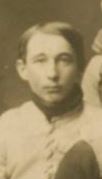 Morton Hunter dies at the age of 69. Hunter, of East Chicago, was a member of a local pioneer family and was formerly connected with the Hunter Brothers Stone Company. His burial will be here in Bloomington. Morton Hunter dies at the age of 69. Hunter, of East Chicago, was a member of a local pioneer family and was formerly connected with the Hunter Brothers Stone Company. His burial will be here in Bloomington.
Source: Bennett P. Reed, "Sands Of Time," Daily Herald Telephone, August 15, 1964. more...
|
| Rogers partners with Weedle Bros. 1952 |
Ralph Rogers partners with Weedle Bros. Construction. Rogers provides excavating expertise and Weedle Bros. provides construction expertise.
Source: Sandy Smith, From the Ground Up: How Rocks, Roads, and Rogers Group Helped Build the Nation (Franklin, Tennessee: Providence House Publishers, 2008), 50.
|
| Church sets cornerstone 1952, Jul 1 |
St. Charles Catholic Church sets the cornerstone for its new church in ceremony with His Excellency, the Most Rev. Paul C. Schulte, Archbishop of Indianapolis. The 15-acre site, purchased in 1950, will eventually also hold a new school and convent. The exterior of the church is Indiana Limestone and the interior is sandstone from St. Meinrad. The architect is Charles M. Brown and the contractor is F. A. Wilhelm - both of Indianapolis.
Source: "Catholics First Came in 1850," Daily Herald Telephone, September 24, 1968, VI, 2.
|
| Company to be dissolved and sold 1952, Nov 28 |
It is announced that the Monon Stone Company will be dissolved and sold. The total worth is $700,000, and will be split between the shareholders.
Source: "Monon Stone Firm To Be Dissolved," Daily Herald Telephone, November 28, 1952, A, 1.
|
| Hancock dies in quarry accident 1953, Jul 30 |
Joseph Hancock, 16, drowns in a quarry.
Source: Rice, Claude F., and Marilyn McCoy. Monroe County, Indiana, Coroners Inquest: 1888-1973. Bloomington, IN: Monroe County Historical Society, 2001.
|
| Post WWII limestone production peaks 1955 |
Postwar production rises to 8,200,000 cubic feet.
Source: Shewmaker, Sherman N. Quarry Quest. A Field Trip Guide to the Indiana Limestone District, Monroe and Lawrence Counties, Indiana, 1991.
|
| Deadlock in stone talks 1955, Apr 20 |
Representatives from the Indiana limestone industry management hold meetings with all stone labor crafts, whose contracts expire at midnight in an effort to head off a strike in the quarries and mills of Lawrence and Monroe counties. It is reported that there appears little chance that agreement can be reached with all of the six crafts present.
Source: "Deadlock in Stone Talks Anticipated," Herald Telephone, April 20, 1955.
|
| Quarry men strike 1955, Apr 21 |
Approximately 1,000 Quarry workers in Monroe and Lawrence Counties leave their jobs after their contracts with management expired the night before; no new contracts have been agreed upon.
Source: "Quarry Men Strike; 2,000 Idle in Area," Herald Telephone, April 21, 1955.
|
| Stone firm signs wage hike pact 1955, Apr 22 |
Work stoppages in the limestone industry continues today as negotiations continued. The Solomito Stone Company of Bloomington agrees to a 15 cent wage hike for its quarry workers. Solomito agrees to wage increases across the board. The wage hike affectes all but heavy equipment operators, whose hourly pay is hiked from $1.73 to $2.20.
Source: "Stone Firm Signs Wage Hike Pact," Herald Telephone, April 22, 1955.
|
| Stone wage pact signed 1955, May 20 |
A month long strike of four stone crafts officially ends this afternoon with signing of three year contracts with management in offices of the Indiana Limestone Company at Bedford, but a continuing strike of Quarryworkers remain as a threat to resumption of full scale operations. Voting this morning, all four crafts accept terms of the new contract, paving the way for signing ceremonies this afternoon.
Source: "Four Crafts Sign Stone Wage Pact," Herald Telephone, May 20, 1955.
|
| Wisely dies in quarry accident 1955, Oct 25 |
Wayne Wisely, 50, is crushed when four slabs of limestone fall on him at the Empire Stone Company.
Source: Daily Herald Telephone, October 26, 1955.
|
| Quarry accident kills Fields 1955, Dec 19 |
Ray Fields, 34, is killed in a quarry accident.
Source: Rice, Claude F., and Marilyn McCoy. Monroe County, Indiana, Coroners Inquest: 1888-1973. Bloomington, IN: Monroe County Historical Society, 2001.
|
| New research creates options for limestone industry 1956, May 15 |
The president of Bloomington Limestone Co. and the Indiana Limestone Institute announce that, after ten weeks of research, there are more choices and uses for limestone. New ways are found to create different colored limestone, floating limestone, improved waterproofing methods, and walls that are completely insulated. After these improvements, the Institute feels limestone can compete in the commercial field again.
Source: "New Era In Indiana Limestone Industry Heralded Through Institute's Fast Moving Research Work," Daily Herald Telephone, May 16, 1956, A, 1.
|
| Record crowd attends festival 1956, Sep 13 |
A record crowd turns out for the 18th Monroe County Fall Festival. This festival includes a pageant which this year incorporates its theme on Bloomington's own Limestone industry. The crowd turnout is estimated at 6,000.
Source: Mary Curry, "Record Crowd Opens 18th Festival Event," Daily Herald Telephone, September 14, 1956, A, 1.
|
| Construction to start for new post office 1956, Oct 18 |
It is reported that construction for Bloomington's new post office is scheduled to begin in 1957, as the current building is too small to accommodate the growing amount of mail. The new location will be boxed in by 3rd and 4th street and Lincoln and Washington Streets.
Source: "City To Get New Post Office In '57," Daily Herald Telephone, October 18, 1956, A, 1.
|
| Solomito pleads innocent 1957, Jan 12 |
Solomito enters plea before Judge William Steckler in Federal Court at Indianapolis, represented by Mellen and Mellen of Bedford. A retired as owner of the Solomito Stone Company, he has been free on $2,000 bond since his arrest in December. The Federal government alleges that Solomito evaded paying taxes of $59,565 during 1950 and 1951.
Source: "Solomito Pleads Innocent on Tax Evasion Charges," Daily Herald Telephone, January 12, 1957.
|
| Accident in quarry kills man 1957, Mar 6 |
Herman Oliver, 58, is killed in a quarry accident.
Source: Rice, Claude F., and Marilyn McCoy. Monroe County, Indiana, Coroners Inquest: 1888-1973. Bloomington, IN: Monroe County Historical Society, 2001.
|
| Quarry worker killed in accident 1957, Mar 6 |
Herman Oliver, 58 year old employee of Empire Stone Company dies after being injured in a quarry accident and just three minutes after arriving at the hospital. A company official states the accident happened when Oliver was struck by a box being lifted by a crane.
Source: "Quarry Worker, 58, Killed in Freak Crane Accident," Daily Herald Telephone, March 6, 1957.
|
| Bank proxy testifies in Solomito case 1957, Apr 9 |
William B. Adams, president of the Bloomington National Bank, is the Government's first witness, detailing bank statements of Joseph T. Solomito, Bloomington stone executive accused in Federal District Court of fraudulent tax evasion.
Source: "Bank Prexy Testifies In Solomito Case," Daily Herald Telephone, April 9, 1957.
|
| IRS agent testifies against Solomito 1957, Apr 10 |
A special agent for the Intelligence Division of the Internal Revenue Service (IRS) testifies that Bloomington stone man Joe Solomito, 40, made deposits totaling $421,000 to his bank accounts in 1950, but only $2,500 of the amount was in cash. The government was seeking to blast Solomito's statement that the heavy deposits represented cash gifts that he had hid in his basement since the early years of World War II.
Source: "IRS Agent Says Solomito Deposits Mostly In Checks," Daily Herald Telephone, April 11, 1957.
|
| Solomito trial goes to jury 1957, Apr 23 |
It is reported that the fate of Joseph T. Solomito former Bloomington stone company executive will be in the hands of a Federal District Court jury by noon Wednesday. Solomito is facing government charges that he fraudulently evaded $54,000 in income taxes in 1950-51.
Source: "Tax Trial To Jury By Noon Tomorrow," Daily Herald Telephone, April 23, 1957.
|
| Quarry workers strike 1957, May 20 |
About 550 quarryworkers in 9 of the 14 qaurries in Monroe and Owen counties fail to appear for work, due to a dispute over a new contract with stone operators and the old contract have expired Sunday at midnight.
Source: "550 Quarrymen Idled by Strike ," Daily Herald Telephone, May 20, 1957.
|
| Solomito pays $110,000 to IRS 1957, Jun 4 |
With a $110,000 check to the IRS, Joseph T. Solomito brings up his total payments to $140,000 since his conviction more than three months ago on charges of income tax evasion. Sterling M. Dietrich, IRS director for Indiana states that he has 'no idea' whether Solomito's payments will cover his tax liability. The government has never set a figure that would settle Solomito's tax difficulties, which may result in a $20,000 fine, ten years in prison, or both when Federal Judge William Steckler hands down a sentence later this month.
Source: "Joe Pays $110,000 to IRS," Daily Herald Telephone, June 5, 1957.
|
| Dynamite blast railroad trestle 1957, Jun 5 |
Shortly before midnight a dynamite blast impacts an Illinois Central railroad trestle at the entrance to the Fluck Stone Company, 6 miles south of Bloomington. An I-beam was bent and the blast severed two railroad ties and charred nine ties. The FBI entered the case under the Federal train wreck statute, which makes it a federal offense to attempt a train wreck on an interstate carrier. The branch line of the railroad running past the Fluck quarries extends from Victor Oolitic Stone company to Bloomington.
Source: "Dynamite Blast Rocks Illinois Central Bridge," Daily Herald Telephone, June 6, 1957.
|
| Solomito sentenced to 18 months in prison 1957, Jun 26 |
Joseph T. Solomito, convicted earlier this year by a Federal Court Jury in Indianapolis on two counts of income tax evasion, is sentenced to 18 months in prison and fined a total of $10,000. Maximum sentence on the two counts could have been ten years of imprisonment, a $20,000 fine or both.
Source: "Solomito Draws 18 Month Prison Term Stiff Fine," , June 27, 1957.
|
| Quarry Strike Ends 1957, Jun 27 |
A six week old strike of Monroe County quarry workers ends today.
Source: "Quarry Crews Back On Jobs As Strike Ends," Daily Herald Telephone, June 27, 1957.
|
| Jury brings no indictments in blast 1957, Jun 29 |
A Monroe County Grand Jury votes no indictments in the dynamiting of an Illinois Central railroad bridge the night of June 5. The jury believes certain witnesses withheld information to protect the individuals involved in the matter.
Source: "Jury Brings No Indictments In Railraod Blast," Daily Herald Telephone, June 29, 1957.
|
| Limestone Company pause for dispute 1957, Jul 11 |
Indiana Limestone Company (ILCO) quarries are idle today for the second time within a month as the result of a labor management dispute, caused by work assignments and the discharge of 13 quarry workers at the Walsh Quarry, northwest of Oolitic.
Source: "280 Are Idle At ILCO In Work Dispute," Daily Herald Telephone, July 11, 1957.
|
| IMU Addition Built 1958 |
An addition to Indiana University's Memorial Union is built by the Matthews Brothers Stone Company.
Source: The Ellettsville Journal. Ellettsville, Ind.: Cooperative Pub. Co, 1939.; Section II, Mathews Brothers Centennial Edition, Wednesday, 26 December, 1962.
|
| Quarry accident kills Mullis 1958, Jan 11 |
Robert Mullis, 29, is killed in a quarry accident.
Source: Rice, Claude F., and Marilyn McCoy. Monroe County, Indiana, Coroners Inquest: 1888-1973. Bloomington, IN: Monroe County Historical Society, 2001.
|
| Lots of stone 1959 |
Bloomington Crushed Stone produces 7,100 tons of limestone in one day for the Indiana University field house parking lot.
Source: Sandy Smith, From the Ground Up: How Rocks, Roads, and Rogers Group Helped Build the Nation (Franklin, Tennessee: Providence House Publishers, 2008), 51.
|
| Gildon dies in quarry accident 1959, Nov 5 |
Ralph Gildon, 54, is killed in a quarry accident.
Source: Rice, Claude F., and Marilyn McCoy. Monroe County, Indiana, Coroners Inquest: 1888-1973. Bloomington, IN: Monroe County Historical Society, 2001.
|
| Rogers adds to main office 1960 |
The Rogers Group adds an addition to their main office in Bloomington. Which Ralph Rogers does not like.
Source: Sandy Smith, From the Ground Up: How Rocks, Roads, and Rogers Group Helped Build the Nation (Franklin, Tennessee: Providence House Publishers, 2008), 69.
|
| Center of population marker moved 1960 |
Fred Seward aids in moving the round limestone marker, which marks the center of the US population, from the Showers Factory site to the Courthouse lawn, despite the fact that it was not in the running for the center.
Source: Rose H. McIlveen, "Bloomington once population center," Herald Telephone, November 29, 1980, 1, 2.
|
| Workers agree to contract 1960, Jul 30 |
The stonecutters, planers and carvers of Journeyman's Stonecutters Association of Monroe County agree to 2-year contract.
Source: Bloomington Daily Herald-Telephone 7-30-1960
|
| Quarry accident kills Halstead 1960, Nov 28 |
Leroy E. Halstead, 40, is killed in a quarry accident.
Source: Rice, Claude F., and Marilyn McCoy. Monroe County, Indiana, Coroners Inquest: 1888-1973. Bloomington, IN: Monroe County Historical Society, 2001.
|
| Geologist publishes cave survey 1961 |
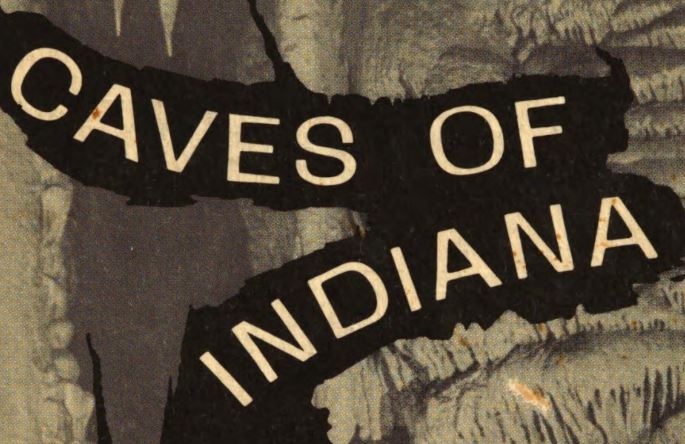 Geologist Dick Powell published his authoritative survey of caves. Geologist Dick Powell published his authoritative survey of caves.
Source: Powell, Richard L., Caves of Indiana (Bloomington (Ind.): Indiana Department of Conservation, 1961) more...
|
| Kenneth Cline dies 1961, Feb 24 |
Kenneth H. Cline, Vice President of the Bloomington Limestone Company, a recognized leader in the limestone industry and Bloomington businessman, dies in Phoenix Arizona.
Source: "Kenneth Cline Dies At 64," Daily Herald Telephone, February 25, 1961.
|
| Stonemen expect good year 1961, Apr 1 |
Indiana Limestone officials believe that the industry is preparing for one of the best production years since at least 1956 or 1957. Payroll and employment are expected to exceed levels of the last two years. Two Monroe County companies presidents say the weather has held down production, so it is too early to make definite predictions.
Source: "Stonemen Expecting Good Year," Daily Herald Telephone, April 1, 1961.
|
| Child drowns in quarry 1961, Nov 5 |
A nine-year-old Arlington fourth grader drowns in a quarry at the B.G. Hoadley property on Gourley Pike. The victim, John Oliver, was the son of Mr. and Mrs. Joe D. Oliver, 1604 Arlington Road. The quarry is about a mile from the Oliver home.
Source: "Nine Year Old Drowns In Arlington Quarry," Daily Herald Telephone, November 6, 1961.
|
| Bertha Showers Dies 1961, Dec 5 |
Mrs. Bertha Showers, a member of two families which were founders of early Monroe County industries, dies at Bloomington Hospital. Mrs. Showers was born in Ellettsville June 19, 1883 and was the daughter of Frederick and Nellie Moore Matthews. Her father was one of the founders of Matthews Brothers Company, which opened the first stone quarry. In 1902 she was married to W. Edward Showers son of William N. Showers, one of the founders of Showers Brothers Company.
Source: "Member of Pioneer Industrial Family, Mrs. Bertha Showers, Dies at 78," Daily Herald Telephone, December 5, 1961.
|
| Matthews celebrates 100 years 1962, Dec |
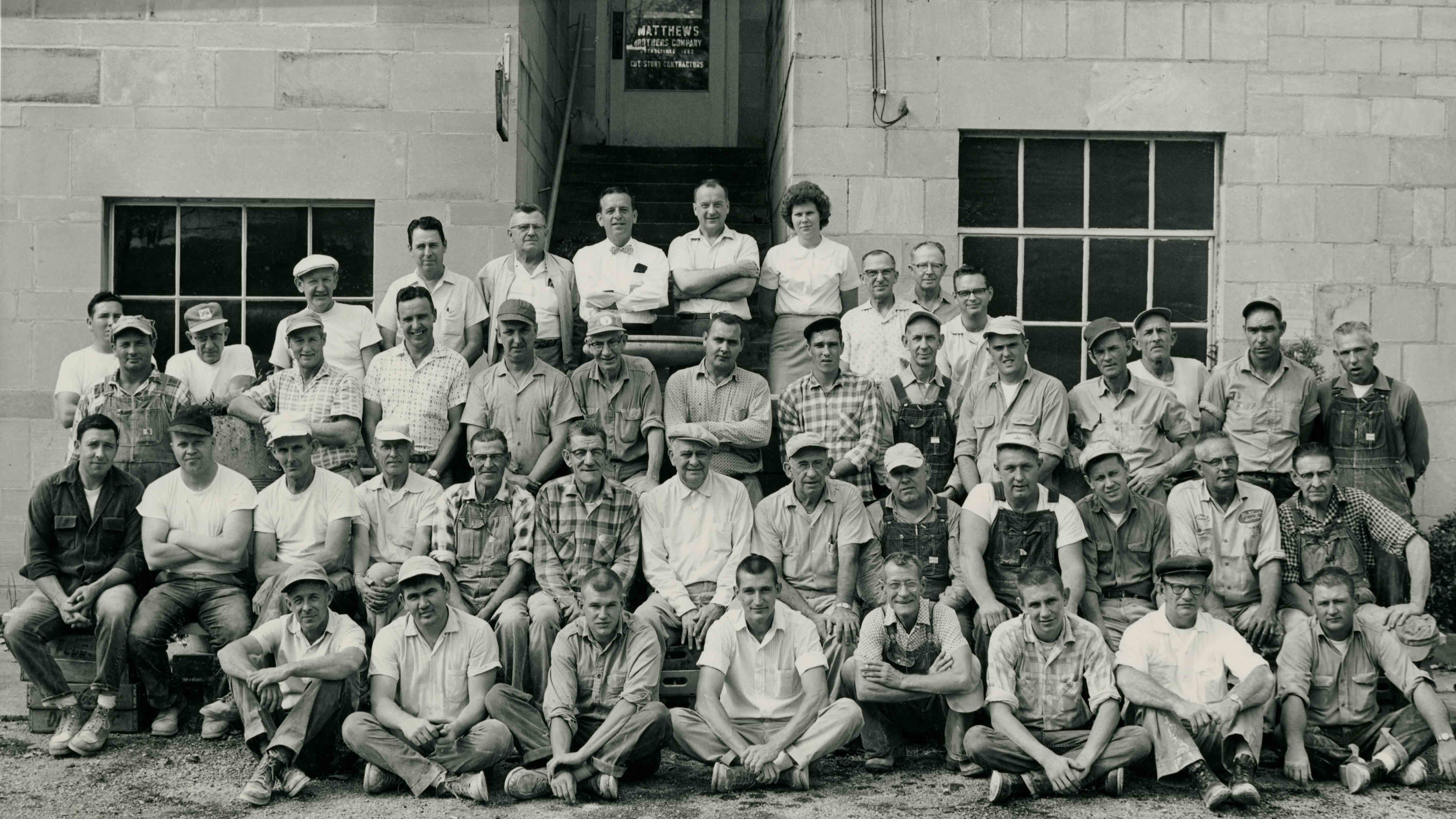 Matthews Stone Company celebrates 100 years of business with a special issue of the newspaper "The Ellettsville Journal" and a group photo of employees. Matthews Stone Company celebrates 100 years of business with a special issue of the newspaper "The Ellettsville Journal" and a group photo of employees.
Source: "Mill completes century of service," Ellettsville Journal, December 26, 1962. more...
|
| Labor board rules in favor of election 1962, Dec 4 |
The National Labor Relations Board (NLRB) in Washington D.C. upholds a petition submitted by the Dimensional Stone Quarry Workers, calling for a separate election at three Monroe County limestone companies. The petition was filed January 16th and asked the elections be conducted in the Bennet Stone Co., McNelly Stone Co., and Mid-West Quarries Co.
Source: "Quarry Workers Victors," Daily Herald Telephone, December 4, 1962.
|
| Rogers offers insurance 1964 |
The Rogers Group offers health and welfare insurance, well ahead of the rest of the industry.
Source: Sandy Smith, From the Ground Up: How Rocks, Roads, and Rogers Group Helped Build the Nation (Franklin, Tennessee: Providence House Publishers, 2008), 69.
|
| Bennett Stone saves IU pool project 1964, Aug 21 |
Still under construction, the Olympic sized outdoor pool project for IU runs into limestone unexpectantly. Contractor F.A. Wilhelm, prohibited from using dynamite, strikes a deal with Leo Bennett Stone Company to remove the limestone. A nonprofit hired Wilhelm with IU Chancellor Herman B Wells serving as president of the organization.
Source: "'Quarry Hole' To Become Swimming Pool - Not News? Ah, But This One is Different," Herald Telephone, August 21, 1964.
|
| EDA provides grants for limestone industry 1965 |
The Economic Development Administration (EDA) provides grant funds to the Indiana limestone industry for the research of new construction techniques using stone, and to increase sales efforts. The grant expires after 16 months, having produced little improvement.
Source: Bill McDonald, A Short History of Indiana Limestone (Bedford IN: Lawrence County Tourism Commission, 1995)
|
| Strike is held 1965 |
Six-week strike.
Source: Bloomington-Bedford Sunday Herald-Times Jan 1967?
|
| Quarry accident kills Godsey 1965, May 7 |
Utah Godsey, 42, is killed in a quarry accident.
Source: Rice, Claude F., and Marilyn McCoy. Monroe County, Indiana, Coroners Inquest: 1888-1973. Bloomington, IN: Monroe County Historical Society, 2001.
|
| Bridgewater dies in quarry accident 1965, Jun 15 |
Ralph Bridgewater, 45, is killed in a quarry accident.
Source: Rice, Claude F., and Marilyn McCoy. Monroe County, Indiana, Coroners Inquest: 1888-1973. Bloomington, IN: Monroe County Historical Society, 2001.
|
| Quarry accident kills Riddle 1965, Oct 22 |
Lawrence E. Riddle, 42, is killed in a quarry accident.
Source: Rice, Claude F., and Marilyn McCoy. Monroe County, Indiana, Coroners Inquest: 1888-1973. Bloomington, IN: Monroe County Historical Society, 2001.
|
| Blacksmiths' strike ends 1966, Jun |
A two-day strike of 19 blacksmiths and 1,500 workers in other trades concludes with a pay raise.
Source: Bloomington Herald-Telephone 8-10-1966 plus several other articles from multiple papers spanning 6 17-Aug 10
|
| Strike hits stonebelt 1966, Aug 8 |
A strike by 19 blacksmiths' union members is reported to have resulted in a virtual shutdown in the limestone industry in Monroe, Lawrence and Own Counties. James Kelly, representative of the International Brotherhood of Blacksmiths, Dropforgers and Helpers reports that 15 limestone companies in the three county area are the target of picket lines.
Source: "Many Idled As Strike Hits Stonebelt," Daily Herald Telephone, August 8, 1966.
|
| Carvers profiled 1966, Sep |
"Telesphere" editor Rex Broome reviews the limestone industry with artists and carvers Ivan L. Adams and Harold (Dugan) Elgar. For the article Adams states that stone carving is now a dying art and "It takes 10 years to teach a carver how to do figures, sculpturing, and different types of styles and ornaments. But there's only enough work these days to keep the 65- and 70-year-olds busy." Adams and Elgar are referenced as only local stone carving contractors remaining.
Source: Rex D. Broome, Indiana Bell Telephone Company, Public Relations and Marketing Departments., "Time Closes in on Hoosierland Men of Stone," Telesphere, communications for the business world, September 1, 1966, 11-13.
|
| Stonecutters associations clash with unions 1968, May |
Stonecutters associations of Bloomington and Bedford try to opt out of joining Laborers International Union.
Source: Bloomington Herald-Times and other papers beginning 5-21-1968
|
| Hoadley dies 1968, May 31 |
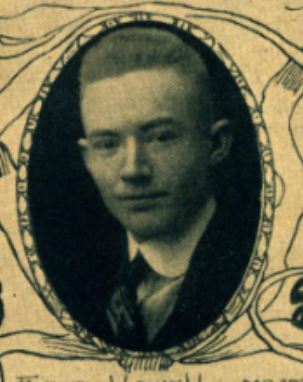 William B. Hoadley, a former Bloomington attorney, state senator, and stone industry executive passes away at age 69. William B. Hoadley, a former Bloomington attorney, state senator, and stone industry executive passes away at age 69.
Source: "Bloomington's Year: A Look at Major Local News Reported in the H-T in 1968," Herald Telephone, December 31, 1968. more...
|
| Alexander Memorial is cleaned 1968, Aug |
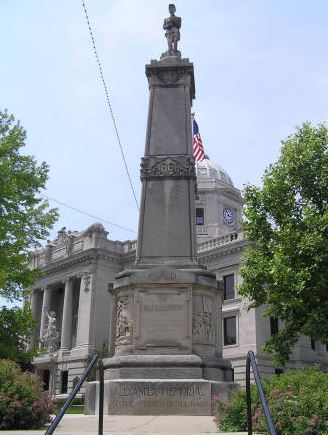 The Grand Army of the Republic monument (Alexander Memorial) "To The Soldiers of All Wars" is to be cleaned as arranged by the Indiana Limestone Institute of America, Inc.,With the cooperation of the Monroe County Board of Commissioners. The cleaning is to be done with chemicals instead of sandblasting by the North American Detergents Corp. of Washington D.C. The institute also plans to waterproof the monument after the cleaning. The Grand Army of the Republic monument (Alexander Memorial) "To The Soldiers of All Wars" is to be cleaned as arranged by the Indiana Limestone Institute of America, Inc.,With the cooperation of the Monroe County Board of Commissioners. The cleaning is to be done with chemicals instead of sandblasting by the North American Detergents Corp. of Washington D.C. The institute also plans to waterproof the monument after the cleaning.
Source: John Fancher, "Bloomington Monument will get a cleaning," Herald Times, August 1, 1968. more...
|
| Strike over new machinery 1968, Aug 18 |
Oolitic Quarry Workers Local of Laborers International Union hold a brief wildcat strike over the installation of new wire sawing units which might result in job losses.
Source: Bloomington Herald-Telephone 8-17-1968; Tribune & Star-Courier 8-18-1968 more...
|
| Museum exhibits limestone 1968, Sep |
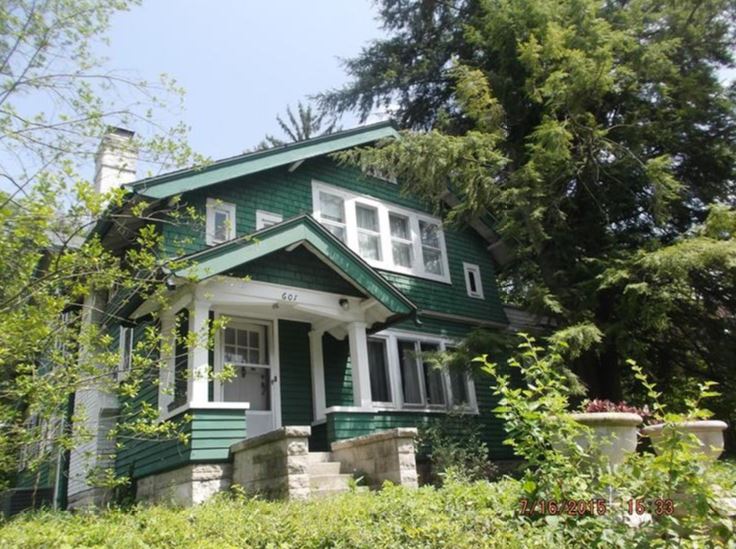 The Children's Museum, located at 802 E. 2nd Street, opens a limestone exhibit, featuring a tribute to renowned sculptor-carver, the late Ivan Adams. His widow and his daughter, Mrs. Ted Fox, provides some carved pieces and photography for the show. Also on loan are carvings by Albert V. McIlveen, which are provided by his daughter Rose (Mrs. C. J. Woertz, Jr.). The museum curator is Mrs. Frank Bachmura (Barbara), who operates out of her garage from her home, located at 601 S. Park Ave. Image of this house provided by the GIS. The Children's Museum, located at 802 E. 2nd Street, opens a limestone exhibit, featuring a tribute to renowned sculptor-carver, the late Ivan Adams. His widow and his daughter, Mrs. Ted Fox, provides some carved pieces and photography for the show. Also on loan are carvings by Albert V. McIlveen, which are provided by his daughter Rose (Mrs. C. J. Woertz, Jr.). The museum curator is Mrs. Frank Bachmura (Barbara), who operates out of her garage from her home, located at 601 S. Park Ave. Image of this house provided by the GIS.
Source: "Children's Museum Displaying Sesquicentennial In Stone," Daily Herald Telephone, September 28, 1968. map
|
| Limestone family Hoadleys 1968, Sep 24 |
Hoadley family still working in Limestone over 4 generations.
Source: "Limestone Hoadleys Pioneers in Indiana Limestone," Herald Telephone, September 24, 1968.
|
| Four-lane 37 project continues 1970, Mar |
The four-lane highway 37 project, which Governor Whitcomb pledged to have completed from Bedford to Martinsville by the end of 1972, hits a snag when stone land to be used for the road is appraised at over $1 million. After some time, a settlement is reached and construction gets back on schedule.
Source: "1970 A Year Of Triumph And Tragedy In Bloomington," Daily Herald-Telephone, December 31, 1970, 2.
|
| Limestone workers strike 1970, Jul 1 |
Approximately 1,500 workers in nearly all trades in the area strike in support of limestone workers.
Source: Herald Telephone, July 1, 1970.
|
| High school construction halted 1970, Jul 23 |
Construction on the new north high school is halted when
hidden stone is found on the construction site of the new north high school.
Source: "1970 A Year Of Triumph And Tragedy In Bloomington," Daily Herald-Telephone, December 31, 1970, 2.
|
| Hotel closing announced 1970, Jul 31 |
The Tourner Hotel, located at 127 S. College, announces that it is closing and the building will be destroyed. The final day for the 30 permanent residents will be August 31st. The business owner, Elmo Gilliatt, reports that it has not locked it's front doors since the day before they opened in 1919, after P. C. Gilliatt leased the building from William Graham.
Source: "Tourner Hotel Will Be Razed," The Herald Times, July 31, 1970. map
|
| Tourner Hotel is razed 1970, Oct 26 |
Demolition crews begin tearing down the old Tourner Hotel, located at 127 S. College Ave. The building, condemned in the summer.
Source: "Hotel Coming Down," Daily Herald Telephone, October 26, 1970. map
|
| 3 drown in quarry hole 1970, Dec |
Three Bloomington teenagers drown when the car they are in goes off of the road and into an abandoned quarry hole at the intersection of May and Leonard Springs Road.
Source: "1970 A Year Of Triumph And Tragedy In Bloomington," Daily Herald-Telephone, December 31, 1970, 2.
|
| Payton killed in quarry accident 1970, Dec 3 |
Deanna Payton, 15, is killed in a quarry accident.
Source: The Herald-Times. Bloomington, Ind.: Herald-Times, Inc, 1989.
|
| George killed in quarry accident 1970, Dec 3 |
Billy George, 16, is killed in a quarry accident.
Source: The Herald-Times. Bloomington, Ind.: Herald-Times, Inc, 1989.
|
| North-side high school construction bill increase 1971, Sep 25 |
An additional $40,000 is added to the cost of the new north-side high school for removal of underground stone.
Source: "August-October: Budgets, Elections, Trials In Local News," Daily Herald-Telephone, December 30, 1971, 20.
|
| George Reed Sr. Reed Quarries Dies 1971, Dec 24 |
George Reed Sr., president of Reed Quarries and chairman of the board for Midwest Quarries, dies.
Source: Herald Telephone, December 24, 1971, obituary.
|
| Rogers, Inc. cuts employees 1972, Feb 8 |
Ralph Rogers, Inc., Bloomington's major building supply firm, begins cutting back on employees. They place the blame for this on City Hall.
Source: "'72 Big Year In Bloomington.. Miller Dr. Among Top Issues," Daily Herald-Telephone, December 30, 1972, 2.
|
| MCCSC sues architectural firm 1972, Feb 18 |
Monroe County Community School Corporation files a $1.5 million lawsuit against the Indianapolis architectural firm for designing the new Northside High School without checking for stone on site and providing for its removal.
Source: "'72 Big Year In Bloomington.. Miller Dr. Among Top Issues," Daily Herald-Telephone, December 30, 1972, 2.
|
| Dentist drowns at quarry 1973, Jun 24 |
Local dentist Dr. Joseph E. Devich drowns at a rural Bloomington Stone quarry.
Source: "An Eventful 12 Months in Bloomington," Daily Herald Telephone, December 29, 1973.
|
| Workers strike 1973, Jul 1 |
Indiana limestone industry workers go out on strike.
Source: "An Eventful 12 Months in Bloomington," Daily Herald Telephone, December 29, 1973.
|
| Limestone strike 1973, Jul 11 |
An industry-wide strike by 1,250 in nearly all trades in Monroe and Lawrence Counties commences.
Source: Courier-Tribune, July 11, 1973.
|
| Limestone strike settled 1973, Jul 28 |
The four week old limestone industry strike is settled.
Source: "An Eventful 12 Months In Bloomington," Daily Herald Telephone, December 29, 1973.
|
| Blair-Waldron House Demolished 1974, May 12 |
Three days after First National Bank submits a demolition permit for the old house at 320 W. Kirkwood Ave., the former home of William T. Blair is demolished. The former owner, Russell Feuerbach, observed the work. The bank owns the house and plans on a new drive-thru operation on the block.
Source: Ric Manning, "Blair House Demolished," Bloomington-Bedford Sunday Herald-Times, May 19, 1974, 16. map
|
| Limestone downturn begins 1975 |
Indiana cut limestone shipments have fallen by 60% since 1960.
Source: Bill McDonald, A Short History of Indiana Limestone (Bedford IN: Lawrence County Tourism Commission, 1995)
|
| Ralph Rogers dies 1976, Apr 30 |
Ralph Rogers, of the Rogers Group, dies at age 86.
Source: Sandy Smith, From the Ground Up: How Rocks, Roads, and Rogers Group Helped Build the Nation (Franklin, Tennessee: Providence House Publishers, 2008), 69.
|
| Strike begins 1976, Jun |
Source: Indianapolis Star 22 October, 1976
|
| Antique shop opens in Batman House 1976, Jul 4 |
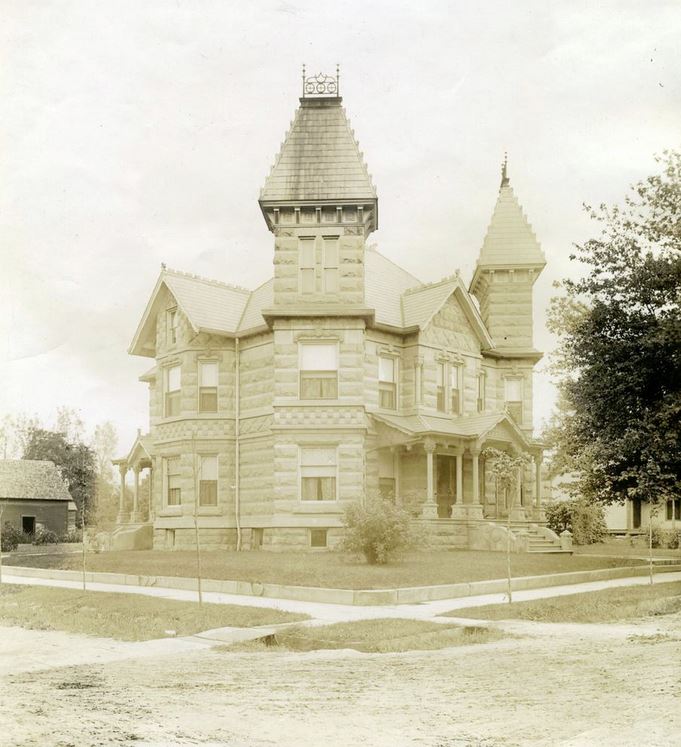 Antique dealers Nancy and Dennis Garrett open their antique shop at the old Batman House, located at the corner of Kirkwood Avenue and Madison Street. The couple purchased the home two years prior from the Bloomington Labor Temple Association. Antique dealers Nancy and Dennis Garrett open their antique shop at the old Batman House, located at the corner of Kirkwood Avenue and Madison Street. The couple purchased the home two years prior from the Bloomington Labor Temple Association.
Source: "Antique shop opening today in historic home," Herald Telephone, July 4, 1976, 46. more...
|
| Historic sidewalk suggested 1976, Dec 13 |
The City of Bloomington's historic district and building study committee recommends that the 1930's constructed octagonal limestone sidewalk should be a historic site.
Source: Nancy Weaver, "1930's octagonal sidewalks to be named 'historic'?," Herald Telephone, December 13, 1976.
|
| New Lakeview school profiled 1977, Mar 4 |
Lakeview Elementary School, in operation for only six months, is profiled in the newspaper. The new program of open room concept is promoted as a success by the principal. The teachers state that they can now group kids by their abilities and provide more individualized attention. It took seven months for the school to be built. The school was built to replace the schools of Smithville, Harrodburg, and Kirksville. The school of 14 classrooms has 450 student, but was built to welcome as many as 750.
Source: Kay Stewart, "Lakeview school: Controversial design concepts please its students and teachers," Herald Telephone, March 4, 1976. map
|
| Feasibility study released 1977, Jun 11 |
The Historic Landmarks Foundation of Indianapolis releases a feasibility study for the preservation of the old limestone Monroe County Public Library building. The restoration of the old building for use as a county historical museum and cultural center will cost an estimated $90,000.
Source: Holly Stocking, "Save-the-library effort shifts into high gear," Herald Telephone, June 11, 1977.
|
| Matthews ceases quarrying operations 1979 |
Matthews Brothers Stone Company ceases its quarry operations, concentrating solely on the fabrication of cut stone.
Source: Bloomington Herald Telephone 31 January, 1979
|
| Bybee buys Matthews Brothers 1979, Jan 31 |
 Ellettsville company Matthews Brothers is sold. "The 117-year old pioneer of the Indiana limestone industry will leave family ownership for the first time in its history," reports "The Herald Times". The Company is sold to Bloomington businessman Wilbur Bybee. Ellettsville company Matthews Brothers is sold. "The 117-year old pioneer of the Indiana limestone industry will leave family ownership for the first time in its history," reports "The Herald Times". The Company is sold to Bloomington businessman Wilbur Bybee.
Source: Dave Scanzoni, "117-year-old stone firm sold to Bloomington man," The Herald Times, January 31, 1979. more...
|
| Peace Statue dedication 1979, May 30 |
County Commissioner Warren Henegar dedicates William Dahman's Peace Statue on the Monroe County Courthouse lawn.
Source: Howard Canada, A History of the Peace Statue: on the West Lawn of the Monroe County Courthouse, 3.
|
| Strike held 1979, Jul 2 |
The strike involves 7 companies and 8 unions.
Source: Bloomington Herald-Telephone 6-2-1979 and other papers to 7-18-1979
|
| "Breaking Away" premieres in Bloomington 1979, Jul 20 |
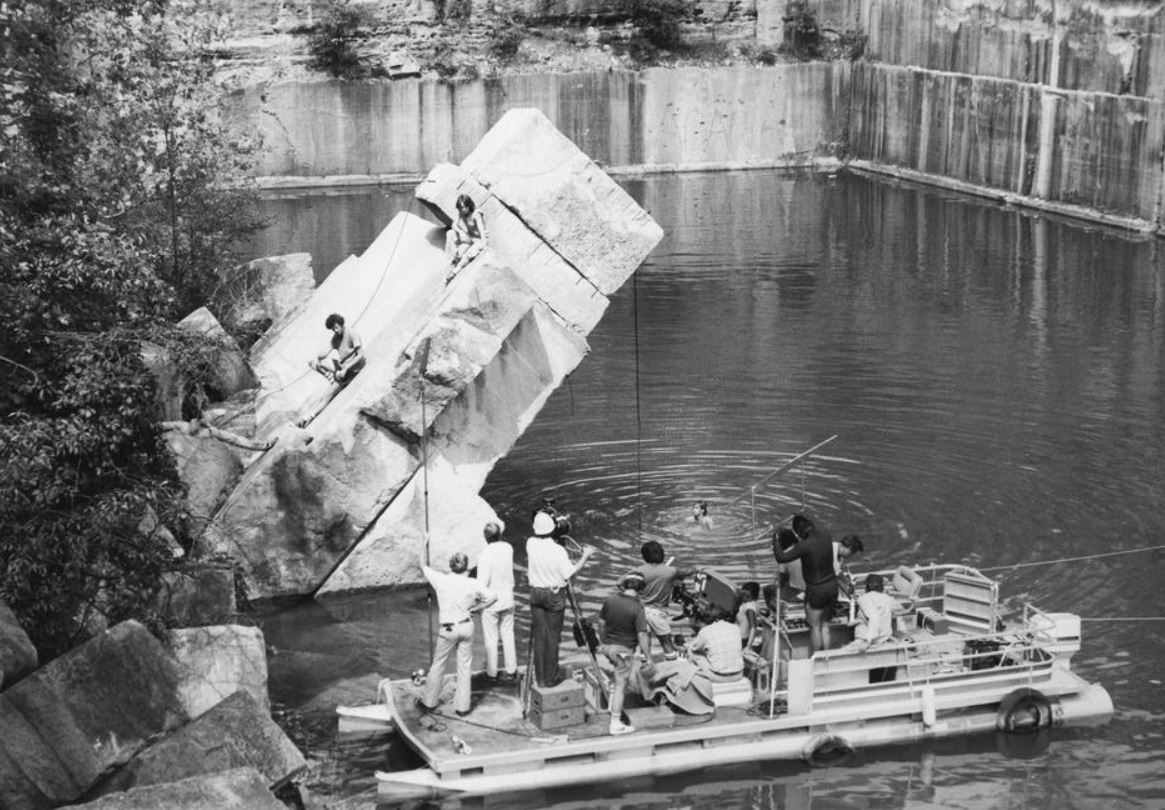 The Towne Cinema, formerly the Harris Grand theater, hosts the premiere of "Breaking Away" filmed in and around Bloomington. The Towne Cinema, formerly the Harris Grand theater, hosts the premiere of "Breaking Away" filmed in and around Bloomington.
Source: Jeff LaFave, "Box office sleeper," Herald Times, April 23, 2014, B, 4. more...
|
| Lowest production since WWII 1982 |
1,500,000 cubic feet of production is reported.
Source: Shewmaker, Sherman N. Quarry Quest. A Field Trip Guide to the Indiana Limestone District, Monroe and Lawrence Counties, Indiana, 1991.
|
| Masonic Temple sold 1985, May |
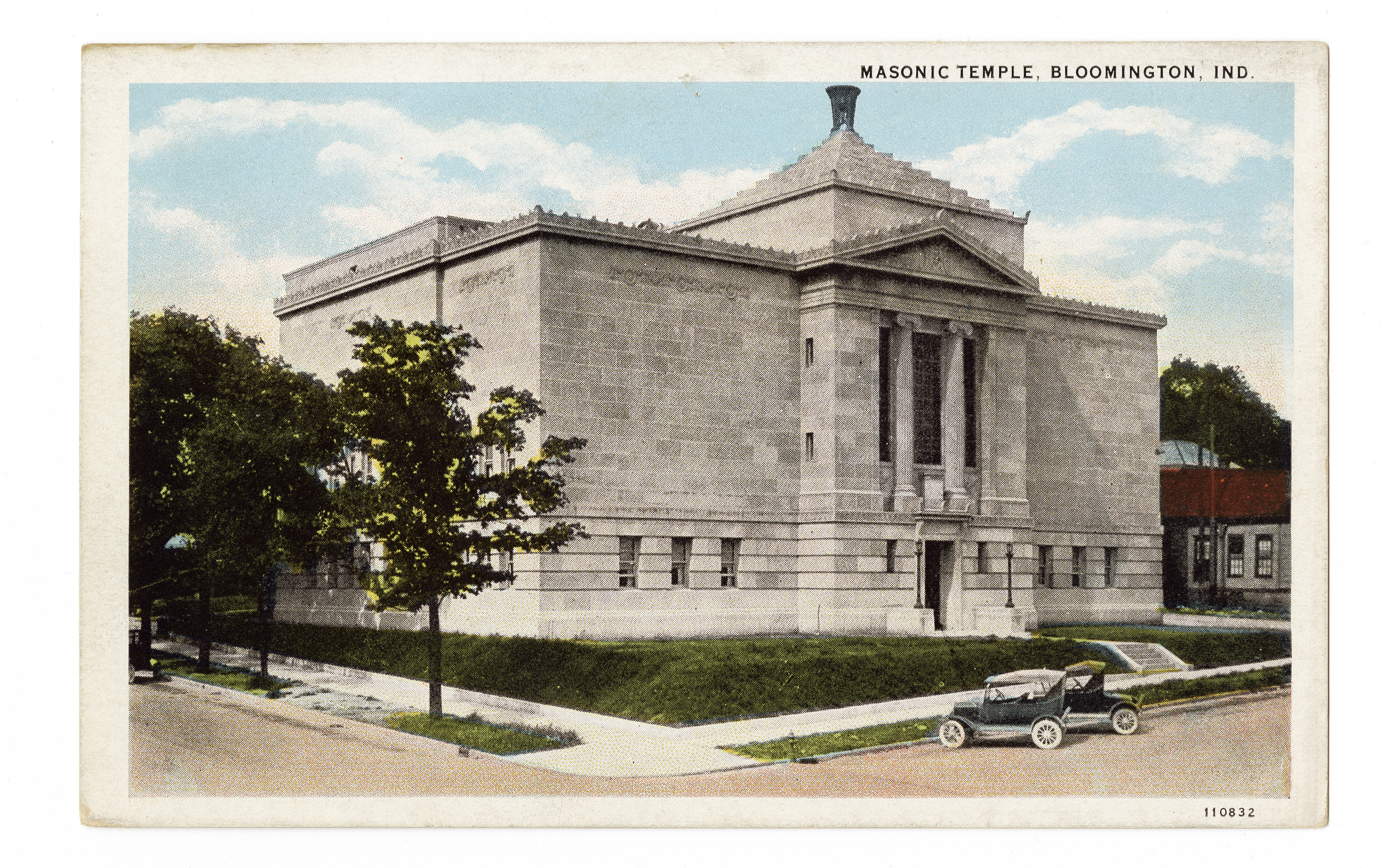 The Masonic Temple on West Seventh Street in Bloomington is sold to developers Tim Winniger and Eric Stolberg, in partnership with Odle Burke Architects, John Padgett, and R. Duane Odle. The Masonic Temple on West Seventh Street in Bloomington is sold to developers Tim Winniger and Eric Stolberg, in partnership with Odle Burke Architects, John Padgett, and R. Duane Odle.
Source: Brian Werth, "Masonic Temple sold to developers for offices," Herald Telephone, May 13, 1985. more...
|
| Indiana Limestone used in US Capital 1985, Nov 3 |
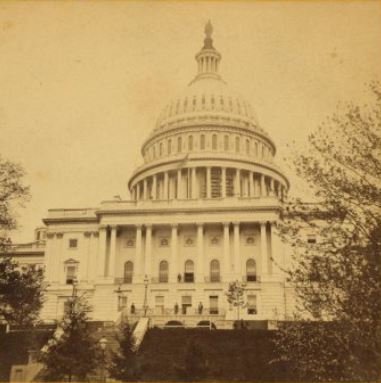 Indiana Limestone is used in the renovation of the US capital building's western front. It is where President John F. Kennedy was sworn in during a blizzard. The Bybee Stone company of Ellettsville sends Indiana limestone to the project. Indiana Limestone is used in the renovation of the US capital building's western front. It is where President John F. Kennedy was sworn in during a blizzard. The Bybee Stone company of Ellettsville sends Indiana limestone to the project.
Source: Lee Hamilton, "Indiana Carvers Restoring Capital," Herald Times, November 3, 1985, F. more...
|
| Indiana Limestone used in Smithsonian 1985, Nov 3 |
Indiana Limestone from the Bybee Stone Company is used in the Smithsonian building in Washington D.C.
Source: Lee Hamilton, "Indiana Carvers Restoring Capital," Herald Times, November 3, 1985.
|
| Ramona Quarry reopens 1988, Feb 10 |
The Bybee Stone Company of Ellettsville reopens the Ramona Quarry, located Northeast of Spencer in Owen County.
Source: Kevin Kleine, "Bybee Stone Comapny Reopens Romona Quarry," Ellettsville Journal, February 10, 1988.
|
| Farmers and Mechanics renovated 1988, May 26 |
The Bybee Stone Company of Ellettsville contributes limestone to the Farmers and Mechanics Federal Savings bank in Bloomfield
Source: "Farmers and Mechanics Federal Savings," Captions: Bybee Stone Co. Newsletter, August 3, 1990, 1.
|
| Bybee provides columns 1989, Apr 12 |
The Ellettsville based Bybee Stone co. provides the columns for the Market Square buildings in Washington D.C. These buildings are on the US Navy Memorial Plaza. This is one of the projects Bybee fulfills in Washington D.C. and several state capitals.
Source: Tom Douglas, "Year-Long Bybee Project Produces Massive Columns for Market Square in D.C.," Ellettsville Journal, April 12, 1989.
|
| Historic Ellettsville buildings razed 1989, Nov 29 |
Two historic houses and the historic corner business building in Ellettsville are razed to make way for the new Ellettsville Library branch.
Source: "Razing of Old Buildings Reveal Ellettsville's Past," Ellettsville Journal, November 29, 1989, 1,3.
|
| Rudy Endwright dies 1990, Dec 20 |
Rudy Endwright, a longtime citizen of Ellettsville, passes away in the office of the Ellettsville Journal. He worked in several grocery stores in both Ellettsville and Bloomington, in the Matthews Brothers stone co., and was associated with the Ellettsville Journal. He was a member of the Elks Lodge in Bloomington and the Masons in Ellettsville.
Source: "Rudy E. Endwright," Hearld-Times, December 20, 1990.
|
| Indiana Limestone used in Vintner's Hall 1991, Feb |
Indiana Limestone from the Bybee Stone company of Ellettsville is used to repair the Vintner's Hall in London, England. The Vintner's Hall is a "historically significant building on the River Thames."
Source: "Vintner's Hall, London England," Captions: Bybee Stone Co. Newsletter, February 1, 1991, 1.
|
| Indiana Limestone used in Gannett building 1991, Mar 1 |
Indiana limestone from the Bybee Stone Company of Ellettsville is used on the Gannett Building in Washington DC. This building will become the headquarters of WUSA TV.
Source: "Gannett Building, Washington D.C.," Captions: Bybee Stone Co. Newsletter, March 1, 1991, 1.
|
| CFP restores Peace Statue 1991, Jun 8 |
William Galloway, a stone cutter from Nashville, Indiana, attaches it to the original statue after recreating the missing hand of the statue free of charge. Members of Congregations for Peace locate William Dahman, the stone cutter who created the Peace Statue on the Monroe County Courthouse lawn, in order to have the statue restored.
Source: Howard Canada, A History of the Peace Statue: on the West Lawn of the Monroe County Courthouse, 3-5.
|
| Peace Statue rededicated 1991, Jun 14 |
On Flag Day the Peace Statue on the Monroe County Courthouse lawn is rededicated, having been restored and cleaned by stone cutter William Galloway of Nashville, Indiana. Congregations for Peace takes responsibility for maintaining the statue in the future.
Source: Howard Canada, A History of the Peace Statue: on the West Lawn of the Monroe County Courthouse, 6.
|
| Bybee begins Iowa goddesses restoration 1991, Aug 9 |
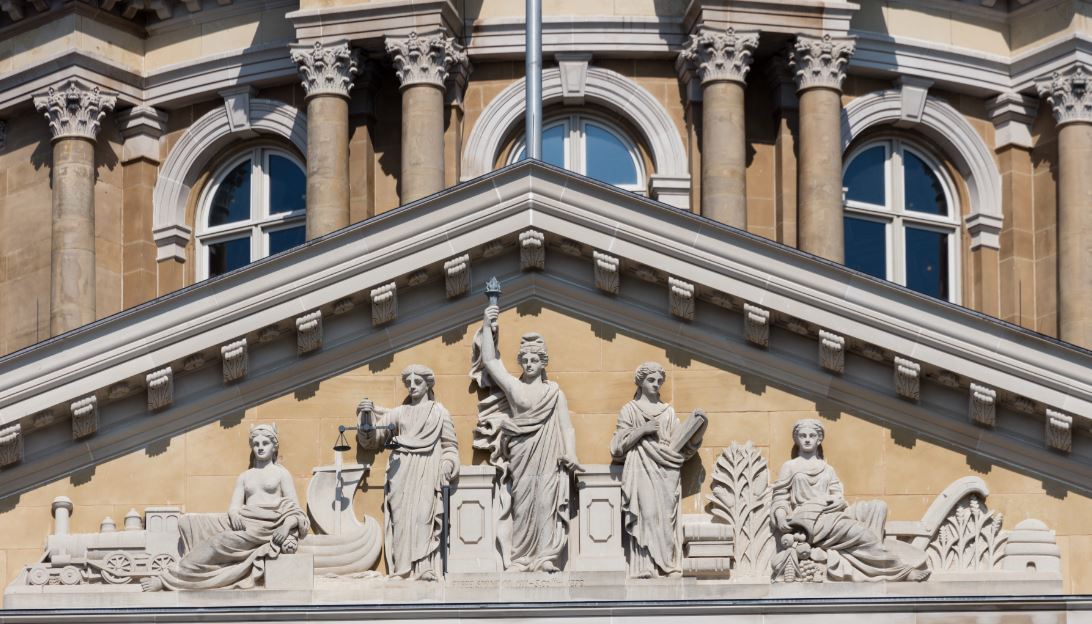 Ellettsville's Bybee Stone Co. begins carving replacement statues for the Iowa State Capital Building. The statues represent liberty, justice, knowledge, agriculture, and commerce. Ellettsville's Bybee Stone Co. begins carving replacement statues for the Iowa State Capital Building. The statues represent liberty, justice, knowledge, agriculture, and commerce.
Source: Laura Lane, "Iowa Goddesses reborn in limestone," Herald Times, August 9, 1991, A, 7. more...
|
| Quarry accident kills Smith 1994, Jul 14 |
Jeremy James Smith, 15, is killed in a quarry accident.
Source: The Herald-Times. Bloomington, Ind.: Herald-Times, Inc, 1989.
|
| Quarry accident kills Graves 1995, Aug 28 |
John Graves, 26, is killed in a quarry accident.
Source: The Herald-Times. Bloomington, Ind: Herald-Times, Inc, 1989.
|
| Quarry accident kills Gibson 1995, Sep 3 |
Donna L. Gibson is killed in an accident at Adams Quarry.
Source: The Herald-Times. Bloomington, Ind.: Herald-Times, Inc, 1989.
|
| Quarry accident kills Langdon 1995, Sep 4 |
Jeremy Langdon, 19, is killed in quarry accident.
Source: The Herald-Times. Bloomington, Ind.: Herald-Times, Inc, 1989.
|
| Stinesville looks to restore 1998, Nov 23 |
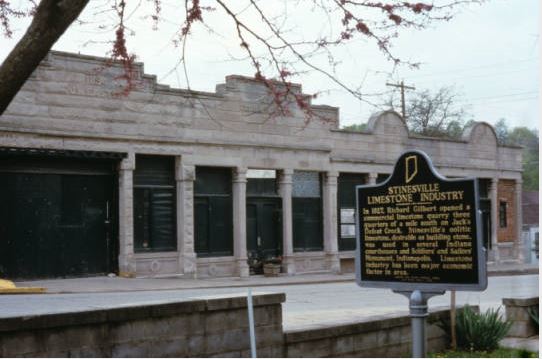 The town of Stinesville applied for $64,000 in grant funds from the Indiana Department of Natural Resources to renovate several historic limestone building on main street. The buildings are already on the historic building registry. The town of Stinesville applied for $64,000 in grant funds from the Indiana Department of Natural Resources to renovate several historic limestone building on main street. The buildings are already on the historic building registry.
Source: Caroline Clay, "Grant could help restore historic buildings," Hoosier Times, November 23, 1998. more...
|
| Quarry goes underground 2001 |
Bloomington Quarry begins mining underground for high quality calcium stone.
Source: Sandy Smith, From the Ground Up: How Rocks, Roads, and Rogers Group Helped Build the Nation (Franklin, Tennessee: Providence House Publishers, 2008), 117.
|
| McCloskey, Matthews enter Hall of Fame 2004, Jan 25 |
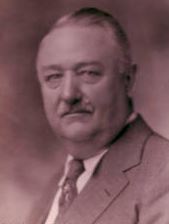 Frank McCloskey and Fred Matthews enter the Monroe County Hall of Fame. McCloskey, former congressman and mayor and Bloomington. Matthews was an early stone industry and civic leader. Frank McCloskey and Fred Matthews enter the Monroe County Hall of Fame. McCloskey, former congressman and mayor and Bloomington. Matthews was an early stone industry and civic leader.
Source: Bob Zaltsberg, "McCloskey, Matthews join Hall of Fame," The Herald Times, January 25, 2004.
|
| Limestone executive George Reed II Dies 2005, May 13 |
George 'Buddy' Reed II, president of Bloomington Limestone Corporation and chairman of the Professional Golf Car Corporation, dies in Naples, Florida at the age of 82.
Source: Herald Times, May 15, 2005, obituary.
|
| Tabereaux dies 2007, Jan 20 |
Howard M. Tabereaux, Jr., 81, dies at Bloomington Hospital. Born in Bedford, he was the co-owner of Midland Cut Stone Company in Bloomington. He was a member of the American Legion, Elks Lodge, Bloomington Country Club, and the Toastmaster as well as a founding member of St. Mark's United Methodist Church. He was a U.S. Navy Veteran, serving in WWII from 1943-1946.
Source: "Obituaries," Herald Times, January 21, 2007.
|
| Courthouse fish deemed a mystery 2007, Aug |
Referred to by "Bloom Magazine" as our Mark Twain, Scott Russel Sanders reviews several theories as to why the courthouse holds a fish in its weather vane, but promotes his preferred magical version. While some claim blacksmith Austin Steward brought the fish with him when he moved to Bloomington in 1820, others state that the fish is a symbol of Christianity. Still others believe the fish is neutral and holds no political symbolism. Sanders suggests the fish - a perch - symbolizes the creatures that helped create caverns of limestone, our "ruling rock".
Source: Scott Russel Sanders, "A Magical Fish and The City It Spawned," Bloom Magazine, August 1, 2007, 69.
|
| Limestone carving found 2012, Sep |
A landscaping crew at the Bethel AME Church finds a large limestone slab in the ground. The stone has an inscription from Hebrews 6:19 and is dated 1846. Church leaders inform the newspaper that Eli Parish and wife Eliza gave the land to Elias Able and his heirs in 1845 but the land changed hands again in 1852 and the stone remains a mystery.
Source: Armiller Grubb, "Community: Help Solve Mystery of Limestone Carving," Herald Times, September 15, 2012, A, 7.
|


